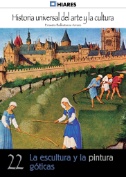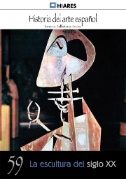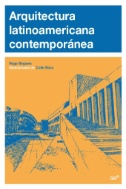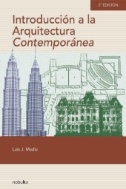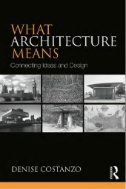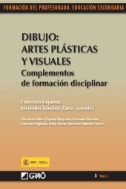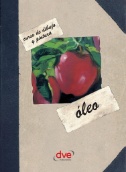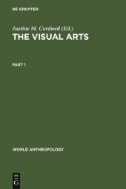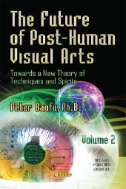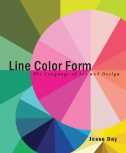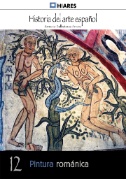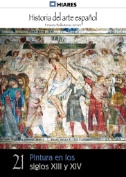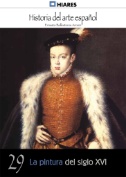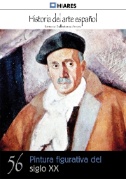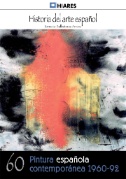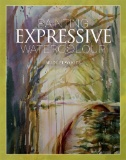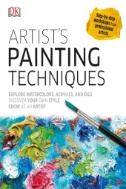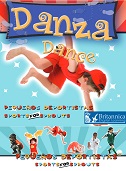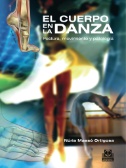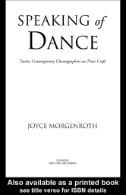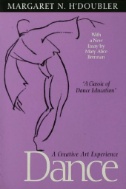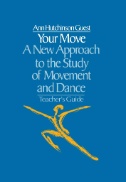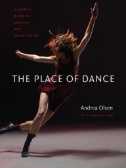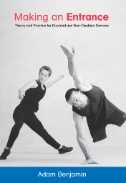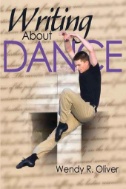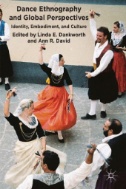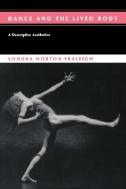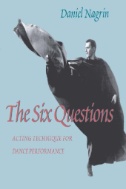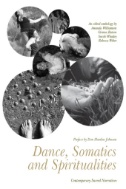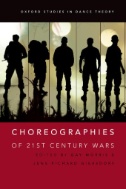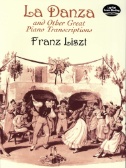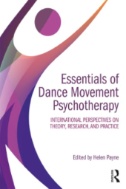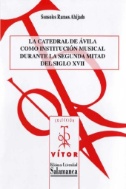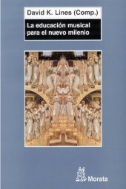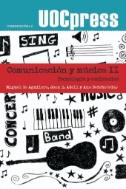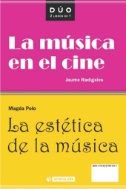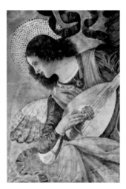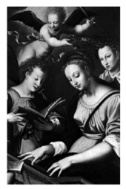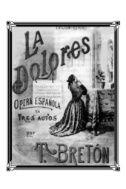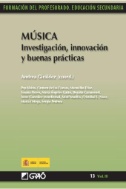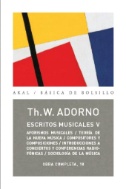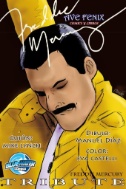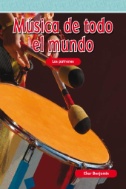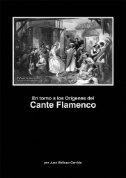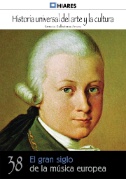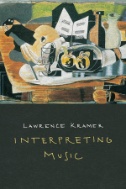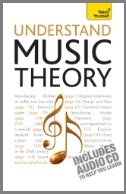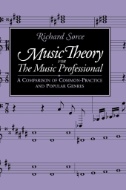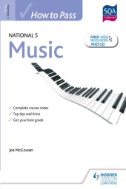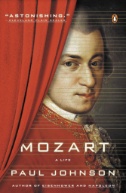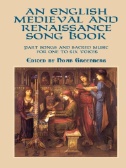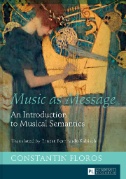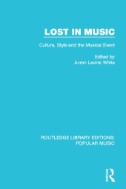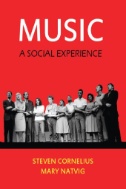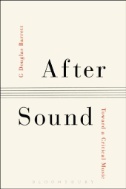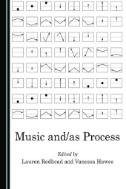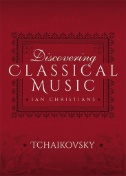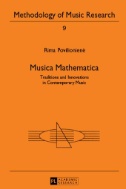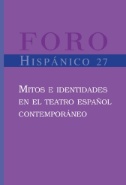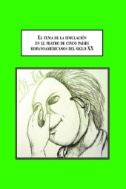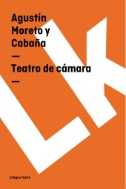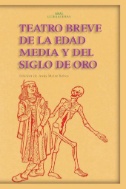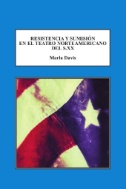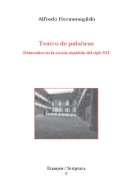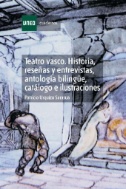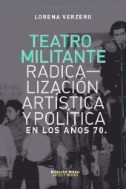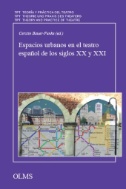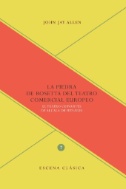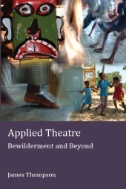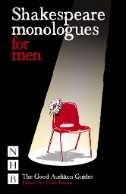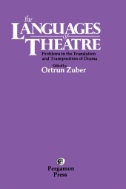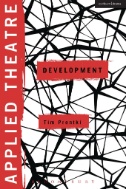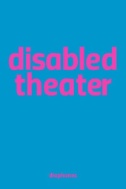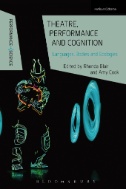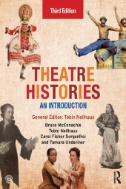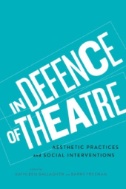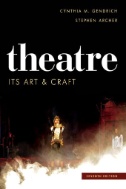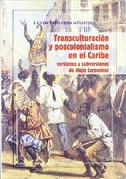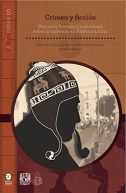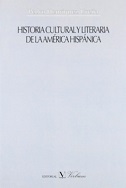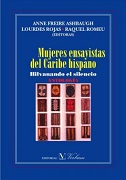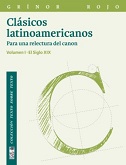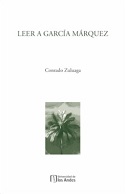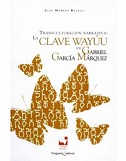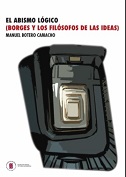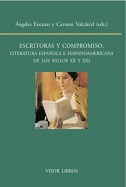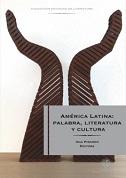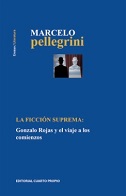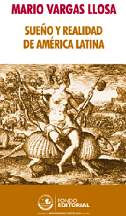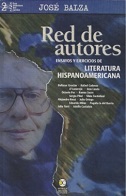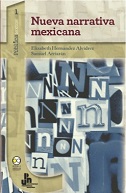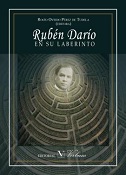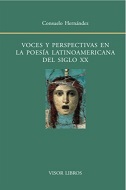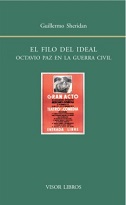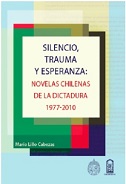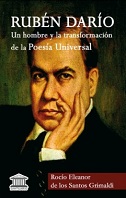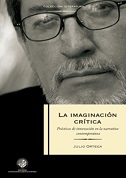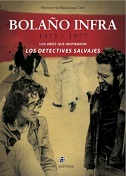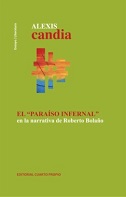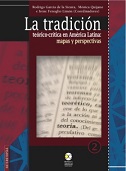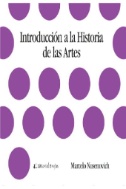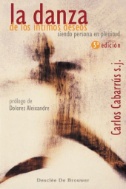Libros digitales
|
ARTES PLÁSTICAS Y VISUALES |
||||||
 |
Los lectores podrán explorar la historia del vidrio soplado, las herramientos y equipo utilizados y cómo se practica hasta nuestros días. |
|||||
|
|
||||||
 |
Este libro es un recuento de la obra de los últimos ocho años del escultor Jorge Marín, en donde el bronce es aquí a la vez contacto con la tierra y vehículo para el aire. En ese espacio liminar —siempre transitorio, siempre en transformación— surgen las obras de Jorge Marín. |
|||||
|
|
||||||
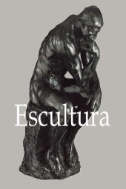 |
El volumen de Mega Square Escultura abarca más de 23.000 años y contiene más de 120 ejemplos de las esculturas más hermosas del mundo, desde el arte prehistórico y las estatuas egipcias hasta las obras de Miguel Ángel, Henry Moore y Niki de Saint-Phalle. Describe la gran variedad de materiales empleados y la evolución de los estilos a lo largo de los siglos, así como las peculiaridades de los principales escultores. |
|||||
|
|
||||||
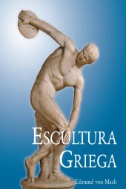 |
La escultura griega es, probablemente, el aspecto más conocido del arte griego. Para un contemporáneo, expresa el ideal de la belleza y de la perfección plástica. Es la primera de las artes clásicas que trató de liberarse de las restricciones imitativas, de la representación precisa de la naturaleza. Solo se conoce una mínima parte de la producción escultórica de la Grecia antigua. Muchas de las obras maestras que se describen en las obras de literatura clásica se han perdido o han sufrido daños considerables, y la mayoría de las piezas que conocemos son copias más o menos hábiles y fidedignas efectuadas durante la época romana. Desde el Renacimiento hasta la actualidad, muchas obras han sido restauradas por escultores occidentales, que, con frecuencia, las han interpretado de una forma muy diferente a su planteamiento original. De este modo, el discóbolo se convierte en un gladiador moribundo, un dios recibe los atributos de otro y las piernas de una estatua se implantan en el torso de otra. «El alma de la escultura griega abarca toda la escultura. Su simplicidad esencial desafía cualquier definición. Podemos sentirla, pero no podemos expresarla. “Abre los ojos, estudia las estatuas; mira, reflexiona y vuelve a mirar” debe ser el precepto continuo de todo aquel que quiera aprender o conocer la escultura griega». |
|||||
|
|
||||||
|
La escultura y la pintura góticas Acompañando a las catedrales góticas de la Baja Edad Media surgen una escultura y una pintura características que resultan también inconfundibles. Las formas, sobre todo los cuerpos humanos, van cogiendo un aire natural del que carecían en el románico y vuelven a profundizar en la realidad vital sentando las bases de lo que luego va a llamarse Renacimiento. |
||||||
|
|
||||||
|
A continuación de la escultura románica, que, plena de simbolismo y alejada de todo cuanto viniera a suponer relación con la realidad, se había extendido hasta las décadas finales del siglo XII, se abre una nueva concepción de las artes plásticas, en la que el carácter fundamental es el realismo naturalista. Lentamente van desapareciendo los tipos estilizados del románico para ser sustituidos por otros directamente inspirados en la naturaleza. |
||||||
|
|
||||||
|
Los últimos años del siglo XIX y los primeros del XX no dejaban adivinar con facilidad cuál iba a ser la evolución inmediata de la escultura española, a causa de la carencia total de un orden estético y de la proliferación de monumentos conmemorativos de un extremado detallismo, pero faltos de inventiva y valía artística. Pero muy pronto, a medida que se iba penetrando en el siglo XX, la escultura volvió a recuperar su antigua consideración. |
||||||
|
|
||||||
|
Copan, one of the most important Classic Maya sites, is renowned for the artistry of its high-relief stelae and altars and for the wealth of detail on its freestanding and architectural sculpture. In Maya Sculpture of Copan: The Iconography, internationally known Mayanist Claude-Francois Baudez provides the first comprehensive analysis of these elaborate and intriguing carved images. |
||||||
|
|
||||||
 |
Bien que la sculpture soit née avant la peinture, elle a longtemps été considérée comme un simple complément de l'architecture, le plus ancien des trois arts majeurs. Utilisant les mêmes matériaux (bois, pierre, et marbre), elle semblait n'être faite que pour servir d'ornementation à cette dernière. Elle a pu cependant imposer peu à peu sa valeur propre et son autonomie.Cette indépendance est venue avec le besoin de représenter le corps humain. L'homme admirait d'abord l'univers dans son entier. Mais il se tourna ensuite vers la contemplation de son propre corps, qu'il perçut comme le seul capable, parmi toutes les formes de la nature, de correspondre pleinement à son esprit et ses aspirations. Il s'agissait toutefois d'un corps d'une beauté supéririeure, régi par des lois de proportion et de symétrie, un corps idéal, réinventé en fait par le travail des sculpteurs! C'est ainsi que naquirent une longue tradition et évolution de la sculpture. Cet ouvrage propose au lecteur 23 000 ans de sculpture et plus de 120 exemples parmi les plus belles sculptures du monde : de l'art préhistorique à Henry Moore, sans oublier la statuaire égyptienne, Michel-Ange ou Niki de Saint-Phalle. |
|||||
|
|
||||||
|
Sculpture : Materials, Techniques, Styles, and Practice Looking at a work of art, like listening to music, becomes a rewarding experience only if the senses are alert to the qualities of the work and to the artist's purpose that brought them into being. The language of sculpture must be learned. In this in-depth study, readers examine the materials, tools, methods, styles, and practices that are involved in sculpting and many of the techniques that have been used by accomplished artists who have contributed to sculpture as a fine art, from the marble gods of Phidias to the mobiles by Alexander Calder. |
||||||
|
|
||||||
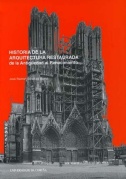 |
Este singular libro que aúna en sus páginas historia, usos y restauración o consolidación de las obras estudiadas de manera magistral hace que cualquier investigador o, simplemente, interesado por la historia de los edificios más representativos de la arquitectura encontrará un enorme caudal de datos documentales y gráficos de muy difícil obtención.Este libro es como una caja de sorpresas que, en cada página, nos sorprende con precisos datos históricos relativos a su génesis, sigue con sus transformaciones y concluye con la recuperación de lo que se tiene como su aspecto original. |
|||||
|
|
||||||
|
Arquitectura latinoamericana contemporánea Esta obra examina cierta producción arquitectónica erudita a partir de la década de 1980, la cual permite entender el calor de una parte del debate intelectual en el medio profesional y el académico, reconocer algunos personajes, sus ideas y realizaciones, y comprender la complejidad de la cultura arquitectónica latinoamericana en su interior y frente al panorama mundial. |
||||||
|
|
||||||
|
Introducción a la arquitectura contemporánea El autor de este trabajo recorre con soltura los campos de la Crítica, el del Diseño y el de la Historia, por lo que dirige su discurso a varios destinatarios. Para los estudiantes de arquitectura hay un fértil sendero para seguir transitando y sobre todo para contestar y debatir sus conceptos. Para los neófitos hay una inmensa puerta abierta a un mundo fascinante. Para sus amigos y colegas de cátedra la posibilidad de enriquecimiento mutuo con la discusión de los recortes elegidos en los distintos capítulos. |
||||||
|
|
||||||
 |
Arte y vacío : sobre la configuración del vacío en el arte y la arquitectura El autor aborda la idea del vacío en el arte, desde la escultura, la pintura, la arquitectura, hasta llegar hacia la unidad de la idea. |
|||||
|
|
||||||
|
What Architecture Means : Connecting Ideas and Design What Architecture Means introduces you to architecture and allows you to explore the connections between design ideas and values across time, space, and culture. It equips you to play an active and informed role in architecture either as a professional or as a consumer, client, and citizen. By analyzing famous and everyday buildings while presenting and questioning the positions of important architects and theorists, this book will help you to evaluate and decide what qualities, ideas, and values you believe are important in architecture. You'll learn: -How various definitions of'architecture'establish different relationships with all buildings, and even non-buildings;-How buildings express and accommodate ideas of the sacred, the family, and the community;-What an architect is, and what priorities they bring to design and construction;-How an architect's expertise relates to that of the engineer, and why these are distinct disciplines;-About values like beauty, originality, structural expression, and cultural memory and their purpose in architectural design;-About the interests and ethical values that architects, and architecture, serves and promotes. Topics include sacred spaces, the house, the city, architects and engineers, aesthetics and design, originality and method, technology and form, memory and identity, and power and politics. |
||||||
|
|
||||||
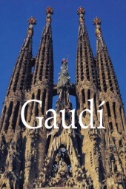 |
Gaudí O arquitecto e designer espanhol Antoni Gaudí (1852-1926) foi uma figura importante e influente na história da moderna arte espanhola. A utilização da côr, a grande variedade de materiais assim como a introdução de formas orgânicas nas suas construções foram uma inovação no domínio da arquitectura. No seu diário Gaudí expressa livremente os seus sentimentos sobre arte:'As cores utilizadas em arquitectura devem ser intensas, lógicas e férteis'. As suas obras arquitectónicas, completas ou incompletas, assim como os seus designs de mobiliário, ilustram a importância desta filosofia. A Sagrada Família (1882-1926) foi um projecto monumental que tomou conta da sua vida, estando incompleto à hora da sua morte. Mega Square Gaudí foca-se na biografia e trabalhos deste famoso artista espanhol, proporcionando uma visão inteligente dos principais temas de Gaudí. |
|||||
|
|
||||||
 |
Las actuales enseñanzas de artes plásticas y diseño Esta publicación tiene como principal objetivo ofrecer una visión general del proceso de transformación que se ha llevado a cabo en el ámbito de las enseñanzas de Artes Plásticas y Diseño y los grandes retos a los que se enfrentan los profesores de estas enseñanzas artísticas. Su finalidad es servir de apoyo para la reflexión sobre la docencia en el ámbito artístico, las conexiones entre arte y educación, las metodologías innovadoras en la didáctica de las artes, los recursos útiles para la docencia y la investigación y la incorporación de las TIC en estas enseñanzas artísticas. |
|||||
|
|
||||||
|
Dibujo: artes plásticas y visuales3 : complementos de formación disciplinar El presente volumen, contribuye a reflejar una visión articulada y coherente de las materias relacionadas con la Educación artística en la Escuela Secundaria Obligatoria y el bachillerato (Educación plástica y visual, dibujo técnico, o las materias propias de la modalidad del bachillerato de Artes). El autor centra su atención en las cualidades visuales de los objetos y de las situaciones o acontecimientos que suceden en el entorno. Este volumen contribuye a que el lector encuentre los recursos necesarios para desarrollar con mayor facilidad sus competencias docentes. |
||||||
|
|
||||||
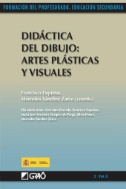 |
Didáctica del dibujo : artes plásticas y visuales Los diferentes capítulos de este volumen tratan de orientar en aspectos propios del proceso de enseñanza y aprendizaje de las materias que se relacionan con las artes plásticas y visuales (Educación plástica y visual, Dibujo técnico o las materias propias de modalidad del bachillerato de Artes). Hemos elegido una doble vía, separando las dos etapas educativas. En la primera, la etapa de educación secundaria, hemos planteado un enfoque gráfico-plástico en los capítulos 3, y 6, con técnicas y materiales, sobre todo, para representaciones planas, y el volumen, para representaciones espaciales. Otro enfoque tiene una visión tecnológica y contempla los lenguajes audiovisuales y multimedia, en el capítulo 4. Toda esta vía se acaba con el enfoque técnico que proporciona el capítulo 5, sobre dibujo técnico. En el bachillerato se da relevancia al peso específico del dibujo artístico, y el diseño en la modalidad de Artes, materias propias de la vía de Artes plásticas, Imagen y Diseño, en los capítulos 7 y 8. |
|||||
|
|
||||||
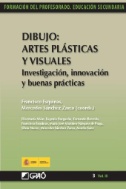 |
Dibujo: artes plásticas y visuales: investigación, innovación y buenas prácticas Las competencias que este volumen desarrolla permiten iniciar al futuro profesor en prácticas innovadoras, dándole la posibilidad de conocer los contenidos curriculares y planificar, desarrollar y evaluar los procesos educativos de las materias más cercanas a las enseñanzas propias de las artes plásticas y visuales. De esta manera, el profesorado en formación podrá transferir los conocimientos a otros contextos y enfocar de manera globalizada estas enseñanzas. Así integramos las competencias que deben alcanzar los estudiantes para el desempeño de la docencia en el marco de estas enseñanzas. Las buenas prácticas que presentamos están basadas en las experiencias personales de los autores, en sus conocimientos de los alumnos y de los centros, en sus investigaciones e innovaciones, y son un buen hacer didáctico y pedagógico. |
|||||
|
|
||||||
|
|
Curso de dibujo y pintura: Óleo
Este libro inicia explicando cómo debe prepararse la paleta, el soporte en donde se pintará, cómo hacer un dibujo previo con carboncillo, el manchado inicial, la importancia de las pinceladas y cómo deben ser las primeras pinceladas, la definición de las formas, el uso de la espátula y pintura allla prima, el volumen, luz y sombras, así como la pintura rápida. Para cada uno de estos temas se va guiando a través de ejercicios prácticos.
|
|||||
|
|
||||||
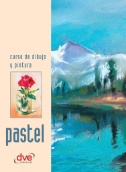 |
Curso de dibujo y pintura. Pastel Este libro trata sobre la técnica del pastel, con la que el artista tiene una gran libertad de trabajo. Le permite pintar en seco y porque en muchos aspectos se encuentra muy próximo a los procedimientos de dibujo tradicionales. Trata temas cómo el encaje y los trazos, el dibujo inmediato y su manchado, la importancia del trazo, el fundido entre los colores, los empastes y la mezcla directa, así como la relación entre trazo y mancha. Cuenta con un apartado de galería de maestros y otro de ejercicios prácticos. |
|||||
|
|
|
|||||
|
The Visual Arts : Plastic and Graphic This book is concerned with the plastic and graphic arts in cross-cultural context, and is part of a group of volumes dealing with affective response in man in the World Anthropology series. These volumes encompass worldviews and cosmology, religion, shamanism, myth and folklore, the performing arts of music, dance, and theater, and the visual arts. |
||||||
|
|
||||||
|
|
The Future of Post-human Visual Arts : Towards a New Theory of Techniques and Spirits This book offers an alternative (better) way to understand the future of the visual arts in regard to the dialectic relationship between techniques and spirits—while learning from different approaches in the literature but without favoring any one of them (nor integrating them, since they are not necessarily compatible with each other). More specifically, this book offers a new theory (that is, the ephemeral theory of the visual arts ) to go beyond the existing approaches in a novel way. |
|||||
|
|
||||||
|
Line Color Form : The Language of Art and Design Design students today are more visually literate than ever before, and their learning style naturally favors the visual over the textual. So why should they learn art and design theory from a traditional textbook? The only guide of its kind, Line Color Form offers a thorough introduction to design theory and terminology in a visually appealing and accessible format. With hundreds of illustrations and minimal text, this primer was created with visual learners in mind, making it ideal for art students as well as those for whom English is a second language. Each chapter focuses on a single aspect of visual composition, such as line, color, or material. After an illustrated discussion of fundamental vocabulary, the chapters move on to applications of the concepts covered. These applications are again demonstrated through images, including photographs, color wheels, significant works of art, and other visual aids. Each image is accompanied by a descriptive paragraph offering an example of how the vocabulary can be applied in visual analysis. The book culminates with a section on formal analysis, aimed at teaching readers how to express their observations in formal writing and critical discourse. With its emphasis on the visual, this unique guide is a highly effective learning tool, allowing readers to gain an ownership and mastery of terms that will benefit them academically and professionally. Whether you are a design educator, student, or professional, native or non-native English speaker, this bright and concise reference is a must. |
||||||
|
|
||||||
|
Si hubiera que definir con una sola palabra la pintura románica, tendríamos que llamarla «antinaturalista». La pintura románica, igual que la bizantina, resulta poco naturalista comparada con la desarrollada desde el Renacimiento hasta el siglo XIX. Mas no debe achacarse todo a la torpeza técnica de sus autores. No se trata de torpeza técnica. Para comprender el fenómeno de la pintura románica debemos remontarnos un poco más atrás y recordar los rumbos que tomó la civilización europea y el arte cristiano desde el Bajo Imperio Romano. |
||||||
|
|
||||||
|
Pintura en los siglos XIII Y XIV Se ha dicho muchas veces, y con razón, que hay más diferencia entre el arte románico y el gótico que entre el gótico y el renacentista. El paso del arte románico al gótico supone una crisis radical del pensamiento europeo, mientras que el Renacimiento sólo era una continuación (si se quiere, una exageración) del pensamiento bajomedieval. Por fuerza, hemos de distinguir, pues, entre el arte románico como expresión plástica de unos conceptos teológicos indiscutibles y el arte gótico como expresión de una época de duda y de escarceos racionalistas. |
||||||
|
|
||||||
|
El término Renacimiento es demasiado amplio -y no poco confuso- a la hora de precisar los límites del fenómeno pictórico. Para unos el Renacimiento es una continuación del arte gótico; para otros es, sin embargo, una reacción contra él; unas veces se habla de Renacimiento con un sentido temporal (siglos XIV a XVI), otras prefiere entenderse como norma «espacial» (Italia y Flandes). Estas distintas interpretaciones, que conviven y alientan en el complejo vocablo, nos anuncian la única cualidad clara y distinta del Renacimiento: su falta de claridad. |
||||||
|
|
||||||
|
Pintura figurativa del siglo XX La gran polémica de nuestro tiempo es la tensión entre figurativismo y no figurativismo pictórico. Está claro que se trata de una polémica profana en la que no entran los entendidos ni los buenos aficionados. Pero la voz de la calle, la famosa “vox populi” es un síntoma muy digno de tomarse en cuenta, no tanto por lo que dice como por la conciencia colectiva que representa. |
||||||
|
|
||||||
|
Pintura española contemporánea 1960-92 En la historia del arte español, como en la de cualquier país, lo más difícil, y para muchos lo más fácil, es recoger una serie de nombres, estilos, figuras, etc. que estudiar. Difícil porque no se sabe quienes son los mejores, ya que hablando de estilos artísticos es muy complicado llegar a determinar cuál es la belleza por excelencia, cuando ésta es algo subjetivo de cada espectador que la contempla y teniendo en cuenta que entran en litigio muchos elementos -y no todos objetivos ni igualmente valorables- que hacen recaer una mayor responsabilidad al efectuar esa valoración. |
||||||
|
|
||||||
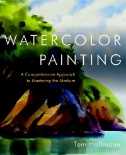 |
Watercolor Painting : A Comprehensive Approach to Mastering the Medium The beauty of a watercolor painting lies in its diaphanous layers, delicate strokes, and luminous washes. However, the very features that define the beauty of the medium can make it difficult to master. This complete guide to understanding the relationships between color, value, wetness, and composition unravels the mysteries of watercolor to help your practice evolve. Experienced teacher and acclaimed artist Tom Hoffmann offers a unique, inquiry-based approach that shows you how to translate any subject into the language of watercolor. With Hoffmann as your guide, you'll learn the key questions to ask yourself at every turn and time-tested methods to help you reach solutions. Hoffmann's thorough explanations and step-by-step demonstrations delineate the process of composing a painting in watercolor, while art from more than thirty-five past and present masters, including John Singer Sargent, Ogden Pleissner, George Post, Emil Kosa, Jr., Mary Whyte, Trevor Chamberlain, Lars Lerin, Torgeir Schjølberg, Piet Lap, Leslie Frontz, and Alvaro Castagnet serve to illustrate and inspire. Whether you're a serious beginner or a seasoned practitioner, this book will guide you toward the all-important balance between restraint and risk-taking that every watercolorist seeks. |
|||||
|
|
||||||
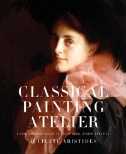 |
Classical Painting Atelier : A Contemporary Guide to Traditional Studio Practice Want to paint more like Manet and less like Jackson Pollock?Students of art hailed Classical Drawing Atelier, Juliette Aristides's first book, as a dynamic return to the atelier educational model. Ateliers, popular in the nineteenth century, teach emerging artists by pairing them with a master artist over a period of years. The educational process begins as students copy masterworks, then gradually progress to painting as their skills develop. The many artists at every level who learned from Classical Drawing Atelier have been clamoring for more of this sophisticated approach to teaching and learning. In Classical Painting Atelier, Aristides, a leader in the atelier movement, takes students step-by-step through the finest works of Old Masters and today's most respected realist artists to reveal the principles of creating full-color realist still lifes, portraits, and figure paintings. Rich in tradition, yet practical for today's artists, Classical Painting Atelier is ideal for serious art students seeking a timeless visual education. |
|||||
|
|
||||||
|
Painting Expressive Watercolour This book is a practical guide to watercolour painting and more. It explains the importance of colour, tone, shape, texture and scale through exercises and shared techniques, but it also encourages the artist to express sensations and ideas in watercolour - and by exploring the joy of the medium, to develop handling skills, confidence and a unique painting'voice'. Includes: getting started; materials, fundamentals and mark-making; ideas to trigger the imagination for developing personal style; a variety of images to inspire and encourage; and help and advice throughout to practice new skills and gain confidence with a medium that has the potential magnificence of a'full orchestra', yet can be slipped into the pocket. Lavishly illustrated with 259 colour photographs. |
||||||
|
|
||||||
|
Artist's Painting Techniques is your practical guide to learning how to bring out your inner artist with a wide range of painting styles, whether you want to learn how to use acrylics, watercolors, or oil paints. With progression in mind, this master class will teach you the basic principles of painting and then inspire you to move on to new challenges and create masterpieces of your own. It explains which tools, materials, and methods should be used along the way, but lets you develop your artistic skills on your own terms rather than providing a series of steps to be followed. Whether you are a beginner wanting to take up a new hobby or an experienced artist who wants to expand your horizons and learn new styles, Artist's Painting Techniques will set you on your path to creativity. |
||||||
|
|
||||||
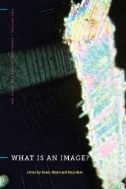 |
What Is an Image? raises the stakes for writing in art history, visual studies, art theory, and art criticism by questioning one of the most fundamental terms of all, the image or picture. This innovative collection gathers some of the most influential historians and theorists working on images to discuss what the visual has come to mean. Topics include concepts such as image and picture in the West and outside it; the reception and rejection of semiotics; the question of what is outside the image; the question of whether images have a distinct nature or are products of discourse, like language; the relationship between images and religious meanings; and the study of non-art images in medicine, science, and technology.Among the major writers represented in this book are Gottfried Boehm, Michael Ann Holly, Jacqueline Lichtenstein, W. J. T. Mitchell, Marie-José Mondzain, Keith Moxey, Parul Dave Mukherji, Wolfram Pichler, Alex Potts, and Adrian Rifkin. |
|||||
|
|
||||||
 |
Framing Pictures : Film and the Visual Arts Through the feature films and documentaries of directors including Emmer, Erice, Godard, Hitchcock, Pasolini, Resnais, Rossellini and Storck, Jacobs examines the way films'animate'artworks by means of cinematic techniques, such as camera movements and editing, or by integrating them into a narrative. He explores how this'mobilization'of the artwork is brought into play in art documentaries and artist biopics, as well as in feature films containing key scenes situated in museums. The tension between stasis and movement is also discussed in relation to modernist cinema, which often includes tableaux vivants combining pictorial, sculptural and theatrical elements. This tension also marks the aesthetics of the film still, which have inspired prominent art photographers such as Cindy Sherman and Jeff Wall.Illustrated throughout, Jacobs'study of the presence of art in film, alongside the omnipresence of the filmic image in today's art museums, is an engaging work for students and scholars of film and art alike. |
|||||
|
|
||||||
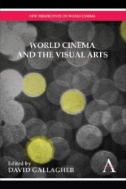 |
World Cinema and the Visual Arts World Cinema and the Visual Arts'combines new analyses of two subjects of ongoing research in the field of humanities: cinema and the visual arts. The films analysed encompass a wide geographical base, and have been drawn from a diverse array of cultural traditions. |
|||||
|
|
||||||
| DANZA | Para acceder de forma remota a los siguientes libros, ingrese con: Login: Password: |
|||||
|
|
||||||
|
Jóvenes lectores aprenderán acerca de la danza a través de textos breves en español e inglés con fotografías de apoyo. Young readers will learn about dance through simple sentences and supportive pictures.
|
||||||
|
|
||||||
|
Proposiciones en torno a la historia de la danza se trata de una serie de recuentos, afirmaciones e hipótesis en torno a la danza como arte y como práctica social. Su hilo central es un conjunto de criterios para ordenar su historia, tal como ha ocurrido sobre todo en la sociedad europea y en la extensión de la cultura europea a través del mundo. |
||||||
|
|
||||||
|
|
El cuerpo en la danza. Postura, movimiento y patología La danza es una forma de expresión con una larga historia y que ha ido adoptando formas diversas junto con la evolución del ser humano. En el camino que recorre el bailarín durante su aprendizaje, encuentra retos a superar de distinta índole (físicos, psicológicos, culturales...). El abordaje de estos retos puede mejorar a través de un mejor conocimiento del propio cuerpo y del propio trabajo. En El cuerpo en la danza los autores presentan los conceptos básicos de la biomecánica de la extremidad inferior, de la columna vertebral y de los mecanismos reguladores de la postura, y cómo esta biomecánica y estos mecanismos pueden modelarse y adaptarse a los diferentes tipos de danza para que el bailarín sea capaz de alcanzar la perfección de su gesto dancístico. También a lo largo del texto se exponen las diferentes patologías que con mayor frecuencia pueden afectar al bailarín y su íntima relación con la alteración de la biomecánica normal. |
|||||
|
|
||||||
|
Anatomía y cinesiología de la danza La danza es una actividad física muy exigente que abarca muchos estilos de movimiento y que requiere un gran grado de versatilidad, fuerza y amplitud de movimiento, equilibrio, coordinación neuromuscular y percepción cenestésica. Para el bailarín, su cuerpo es su instrumento de expresión sobre el que se aplican los principios biomecánicos y anatómicos básicos para conseguir un rendimiento óptimo. Este libro es una herramienta que le ayudará a conocer mejor su cuerpo y así reducir el riesgo de lesiones y aumentar la longevidad y calidad de sus actuaciones. Anatomía y cinesiología de la danza estudia –con abundante material visual y ejercicios prácticos– los principales huesos, articulaciones, músculos, desviaciones en la alineación y la mecánica de cada región del cuerpo. También se presentan ejercicios de muestra para mejorar la fuerza y la flexibilidad que ayudarán al lector a comprender mejor la función y localización de los músculos, así como ejercicios clásicos con el objetivo de mejorar la fuerza y la flexibilidad en la técnica de la danza y prevenir lesiones habituales. En la sección final de los capítulos se describen lesiones habituales que se producen en la danza, así, profesores y bailarines tendrán una base sólida para evaluar riesgos, decidir sobre modificaciones temporales o diseñar progresiones secuenciales para las clases, que permitan desarrollar el repertorio de baile con la gracia estética deseada y el menor riesgo posible de lesiones. El capítulo final del libro ofrece un esquema que ayudará a los lectores a analizar los movimientos practicados con todo el cuerpo y a elegir los ejercicios suplementarios más adecuados para mejorar el rendimiento. |
||||||
|
|
||||||
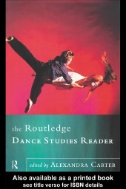 |
The Routledge Dance Studies Reader 'Represents the range and diversity of writings on dance from the 1980s and 1990s'--P. [i]. |
|||||
|
|
||||||
 |
In this book, Helen Thomas provides an original, interdisciplinary approach to the study of dance. By examining the development of modern dance in the USA during the 1920s and 1930s she develops a framework for analyzing dance from a sociological perspective. As an important contribution to dance scholarship this book will be essential reading for all those interested in the performing arts. |
|||||
|
|
||||||
 |
Understanding Dance is a comprehensive introduction to the aestethetics of dance, and will be an essential text for all those interested in dance as an object of study. Focusing on the work of a number of major choreographers, companies and critics Graham McFee explores the nature of our understanding of Dance by considering the practice of understanding dance-works themselves. He concludes with a validation of the place of dance in society and in education. Troughout he provides detailed insights into the nature and appreciation of art as well as a general grouding in philosophy. |
|||||
|
|
||||||
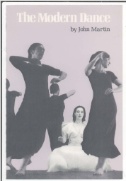 |
This book is actually the text of four lectures delivered as the New School for Social Research in New York in the season of 1931-1932 to introduce a series of lecture-demonstrations on what was then a largely unfamiliar subject. Published first in 1933, it is reprinted here without alteration or re-editing of any sort, as perhaps the first attempt__certainly one of the first__to analyze the American modern dance. |
|||||
|
|
||||||
 |
Modern Dance, Techniques and Teaching This book includes a descriptive analysis of technique; a visual analysis of technique; and teaching emphasis within each technique. Besides includes years of training and experience into a set number of pages that would represent a comprehensive picture of the techniques in dance training. Space limitations make this picture far from complete; however the techniques chosen have proved applicable to large classes, small classes, and in all levels of student training, both in academic, formal, and professional classes. This text is a valuable material for teacher education in modern dance, and will motivate dance instructors and students to use this material in dance as an art form. |
|||||
|
|
||||||
|
|
Speaking of Dance: Twelve Contemporary Choreographers on Their Craft delves into the choreographic processes of some of America's most engaging and revolutionary dancemakers. Based on personal interviews, the book's narratives reveal the methods and quests of, among others, Merce Cunningham, Meredith Monk, Bill T. Jones, Trisha Brown, and Mark Morris. Morgenroth shows how the ideas, craft, and passion that go into their work have led these choreographers to disrupt known forms and expectations. The history of dance in the making is revealed through the stories of these intelligent, articulate, and witty dance masters. |
|||||
|
|
||||||
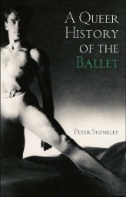 |
Designed for students, scholars and general readers with an interest in dance and queer history, A Queer History of the Ballet focuses on how, as makers and as audiences, queer men and women have helped to develop many of the texts, images, and legends of ballet. Presenting a series of historical case studies, the book explores the ways in which, from the nineteenth century into the twentieth, ballet has been a means of conjuring homosexuality – of enabling some degree of expression and visibility for people who were otherwise declared illegal and obscene. Studies include: the perverse sororities of the Romantic ballet the fairy in folklore, literature, and ballet Tchaikovsky and the making of Swan Lake Diaghilev's Ballets Russes and the emergence of queer modernity the formation of ballet in America the queer uses of the prima ballerina Genet's writings for and about ballet. Also including a consideration of how ballet's queer tradition has been memorialized by such contemporary dance-makers as Neumeier, Bausch, Bourne, and Preljocaj, this is an essential book in the study of ballet and queer history. |
|||||
|
|
||||||
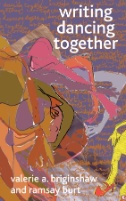 |
With a political agenda foregrounding collaborative practice to promote ethical relations, these individually and joint written essays and interviews discuss dances often with visual art, theatre, film and music, drawing on continental philosophy to explore notions of space, time, identity, sensation, memory and ethics. |
|||||
|
|
||||||
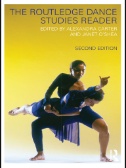 |
The Routledge Dance Studies Reader The second edition of The Routledge Dance Studies Reader offers fresh critical perspectives on classic and modern dance forms, including ballroom, tango, Hip-hop, site-specific performance, and disability in dance. Alexandra Carter and Janet O'Shea deliver a substantially revised and updated collection of key texts, featuring an enlightening new introduction, which tracks differing approaches to dance studies. Important articles from the first edition are accompanied by twenty new works by leading critical voices. The articles are presented in five thematic sections, each with a new editorial introduction and further reading. Sections cover: Making dance Performing dance Ways of looking Locating dance in history and society Debating the discipline The Routledge Dance Studies Reader gives readers access to over thirty essential texts on dance and provides expert guidance on their critical context. It is a vital resource for anyone interested in understanding dance from a global and contemporary perspective. |
|||||
|
|
||||||
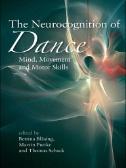 |
The Neurocognition of Dance : Mind, Movement and Motor Skills Dance has always been an important aspect of all human cultures, and the study of human movement and action has become a topic of increasing relevance over the last decade, bringing dance into the focus of the cognitive sciences. This book discusses the wide range of interrelations between body postures and body movements as conceptualised in dance with perception, mental processing and action planning. The volume brings together cognitive scientists, psychologists, neuroscientists, choreographers, and ballet teachers, to discuss important issues regarding dance and cognition. First, scientists introduce ideas that offer different perspectives on human movement and therefore can be applied to dance. Secondly, professionals from the world of dance have their say, reporting on how their creative and pedagogical work relates to cognition and learning. Finally, researchers with personal links to the dance world demonstrate how neurocognitive methods are applied to studying different aspects related to dance. This book is suitable for students and professionals from the fields of psychology, neuropsychology, cognitive psychology, sport psychology and sport science, movement science, motor control, motor development, kinesiology, dance, choreography, dance education and dance therapy; to teachers who want to teach dance to students of any age. |
|||||
|
|
||||||
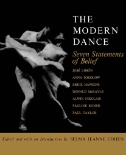 |
The Modern Dance : Seven Statements of Belief This book presents seven essays on the modern dance and seven descriptions of dances on the theme of the Prodigal Son. each choreographer represented in this book was asked to divide his contribution into two parts. First, he was to set forth, generally, his ideas on the modern dance. Second, he was to describe what he would do if he were given a commission to create a dance under the most (unrealistically) favorable conditions — any number of dancers, any kind of music, costumes, etc. Also (most unrealistic) he was to assume that he had unlimited funds at his disposal. There was only one restriction : his dance had to deal with the theme of the Prodigal Son. |
|||||
|
|
||||||
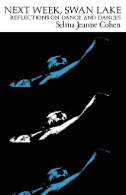 |
Next Week, Swan Lake : Reflections on Dance and Dances An important book of essays on “dance and ideas about dance” |
|||||
|
|
||||||
 |
Rudolf Laban (1879 – 1958) was a pioneer in dance and movement, who found an extraordinary range of application for his ideas; from industry to drama, education and therapy.? Laban believed that you can understand about human beings by observing how they move, and devised two complimentary methods of notating the shape and quality of movements. The Laban Sourcebook offers a comprehensive account of Laban's writings. It includes extracts from his five books in English and from his four works in German, written in the 1920s and translated here for the first time.? This book draws on archival research in England and Germany to chart the development of Laban's groundbreaking ideas through a variety of documents, including letters, articles, transcripts of interviews, and his unpublished Effort and Recovery.?? It covers: The beginning of his career in Germany and Switzerland in the 1910s. His astonishing rise to fame in Germany in the 1920s as a dance teacher, choreographer and creator of public dance events. Following his move to England in 1938, the application of his ideas to drama, education, industry, and therapy. Each extract has a short preface providing contextual background, and highlighting and explaining key terms. Passages have been selected and are introduced by many of the world's leading Laban scholars. |
|||||
|
|
||||||
 |
'En un ballet, el “pas de deux” casi siempre es el momento dramático y a la vez lírico en que se produce el nudo o el desenlace de la acción, o el juego del amor y de la muerte, que es la base de toda dramaturgia. El “pas de deux” alcanza el punto culminante y nos dirige hacia el desenlace.Esta obra aporta un completo estudio de esta técnica para la mayoría de los bailarines que están en la última etapa de su formación profesional, para los que se inician e incluso para los más avanzados.La belleza y originalidad de los clichés, que ponen de relieve movimientos cruciales pocas veces perceptibles para el público cuando los portés se ejecutan con virtuosismo, hacen de esta guía pedagógica un libro único y una bella obra. A fin de facilitar la lectura y aportar una ayuda para el análisis personal de la cinemática, se ilustran las principales fases del porté: el impulso, el punto de contacto (para la subida), el ascenso, el punto más alto de la subida, la sujeción, el descenso y la recogida en los brazos del portor o en el suelo; las diferentes formas de sujeción se describen en detalle.Asimismo, los patinadores artísticos, bailarines acrobáticos en dúo y los deportistas que practican el surf tándem encontrarán muchas similitudes con la disciplina que aquí se expone para los bailarines.Gilbert Serres, bailarín solista, maestro de ballet y coreógrafo en grandes compañías entre 1963 y 1978. Enseña la danza clásica y la técnica del pas de deux a aficionados y profesionales. Su rica experiencia, sus talentos de pedagogo y la originalidad de sus clases gozan de prestigio en centros como la Escuela Real de Ballet de Amberes y la Academia de Danza de la Universidad Fontys, en Tilburg, Países Bajos. Autor de obras pedagógicas, imparte con regularidad cursillos de pas de deux en varias escuelas de Bélgica, Holanda y Francia, en particular en la Escuela de Danza de la Ópera de París.' |
|||||
|
|
||||||
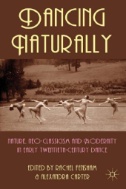 |
Dancing Naturally : Nature, Neo-Classicism and Modernity in Early Twentieth-Century Dance A renewed interest in nature, the ancient Greeks, and the freedom of the body was to transform dance and physical culture in the early twentieth century. The book discusses the creative individuals and developments in science and other art forms that shaped the evolution of modern dance in its international context. |
|||||
|
|
||||||
|
A concise introduction to the study of dance ranging from the practical aspects such as technique and choreography to more theoretical considerations such as aesthetic appreciation and the place of dance in different cultures. This book answers questions such as: Exactly how do we define dance? What kinds of people dance and what kind of training is necessary? How are dances made? What do we know about dance history? Featuring a glossary, chronology of dance history and list of useful websites, this book is the ideal starting point for anyone interested in the study of dance. |
||||||
|
|
||||||
|
Dance : A Creative Art Experience This book embodies the thinking of a woman whose singular vision propelled dance into the realm of higher education where it has not only remained, but thrived. She did not create a dance style or a particular teaching approach, her legacy is more lasting because she established a theoretical framework for thinking about and experiencing dance and a philosophical attitude toward teaching it as a science and a creative art. |
||||||
|
|
||||||
|
Dance in the Field : Theory, Methods and Issues in Dance Ethnography This international collection on dance ethnography - the first of its kind - comprises original contributions on fieldwork in dance and human movement. Based on extensive fieldwork experience, it explores the major theoretical approaches, methods and concerns of dance and movement research from anthropological and ethnochoreological perspectives. The result underlines the existing and continuing growth in dance ethnography which will also be of interest to those in dance studies, anthropology, cultural studies, folklore, ethnomusicology and sociology. |
||||||
|
|
||||||
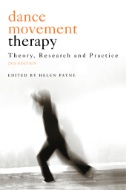 |
Dance Movement Therapy : Theory, Research and Practice What can dance movement contribute to psychotherapy? This thoroughly updated edition of Dance Movement Therapy echoes the increased world-wide interest in dance movement therapy and makes a strong contribution to the emerging awareness of the nature of embodiment in psychotherapy. Recent research is incorporated, along with developments in theory and practice, to provide a comprehensive overview of this fast-growing field. Helen Payne brings together contributions from experts in the field to offer the reader a valuable insight into the theory and practice of Dance Movement Therapy. The contributions reflect the breadth of developing approaches, covering subjects including: dance movement therapy with people with dementia group work with people with enduring mental health difficulties transcultural competence in dance movement therapy freudian thought applied to authentic movement embodiment in dance movement therapy training and practice personal development through dance movement therapy. Dance Movement Therapy will be a valuable resource for anyone who wishes to learn more about the therapeutic use of creative movement and dance. It will be welcomed by students and practitioners in the arts therapies, psychotherapy, counselling and other health and social care professions. |
|||||
|
|
||||||
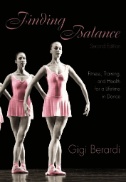 |
Finding Balance : Fitness, Training, and Health for a Lifetime in Dance Finding Balance: Fitness, Health, and Training for a Lifetime in Dance gives an overview of issues faced by all performing dancers: injury and treatment; technique and training; fitness; nutrition and diet; and career management. The text includes both easy-to-read overviews of each topic and'profiles'of well known dancers and how they have coped with these issues. The new edition includes: Updated and new profiles. Expanded injury and injury treatment information. Updated dance science and physiology findings, and new references. Updated diet guidelines, Expanded and updated'Taking Control'section. It concludes with a list of selected dance/arts medicine clinics, a bibliography, glossary, and text notes. |
|||||
|
|
||||||
|
Your Move : A New Approach to the Study of Movement and Dance Your Move: A New Approach to the Study of Movement and Dance establishes a fresh and original framework for looking at dance. In examining the basic elements of dance - the Alphabet of Movement - and using illustrations of movement technique and notation symbols it provides a new way to see, to teach and to choreograph dance. This book gives a list of primary actions upon which all physical activity is gased, focusing on both the functional and expressive sides of movement. It draws upon the author's broad experience in ballet, modern and ethnic dance to reinterpret movement and to shed new light on the role of movement in dance. Your Move is an important book not only for dancers but also for instructors in sport and physical therapy. Each copy of Your Move comes complete with exercise sheets, which can also be purchased separately. A teacher's guide has also been designed providing notes on each chapter, approaches to the exploration of movement, interpretation of the reading studies, additional information of motif description and answers to the exercise sheets. |
||||||
|
|
||||||
|
|
The Place of Dance : A Somatic Guide to Dancing and Dance Making The Place of Dance is written for the general reader as well as for dancers. It reminds us that dancing is our nature, available to all as well as refined for the stage. Andrea Olsen is an internationally known choreographer and educator who combines the science of body with creative practice. This workbook integrates experiential anatomy with the process of moving and dancing, with a particular focus on the creative journey involved in choreographing, improvising, and performing for the stage. Each of the chapters, or “days,” introduces a particular theme and features a dance photograph, information on the topic, movement and writing investigations, personal anecdotes, and studio notes from professional artists and educators for further insight. The third in a trilogy of works about the body, including Bodystories: A Guide to Experiential Anatomy and Body and Earth: An Experiential Guide, The Place of Dance will help each reader understand his/her dancing body through somatic work, create a dance, and have a full journal clarifying aesthetic views on his or her practice. It is well suited for anyone interested in engaging embodied intelligence and living more consciously. |
|||||
|
|
||||||
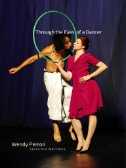 |
Through the Eyes of a Dancer : Selected Writings Through the Eyes of a Dancer compiles the writings of noted dance critic and editor Wendy Perron. In pieces for The SoHo Weekly News, Village Voice, The New York Times, and Dance Magazine, Perron limns the larger aesthetic and theoretical shifts in the dance world since the 1960s. She surveys a wide range of styles and genres, from downtown experimental performance to ballets at the Metropolitan Opera House. In opinion pieces, interviews, reviews, brief memoirs, blog posts, and contemplations on the choreographic process, she gives readers an up-close, personalized look at dancing as an art form. Dancers, choreographers, teachers, college dance students—and anyone interested in the intersection between dance and journalism—will find Perron's probing and insightful writings inspiring. Through the Eyes of a Dancer is a nuanced microcosm of dance's recent globalization and modernization that also provides an opportunity for new dancers to look back on the traditions and styles that preceded their own. |
|||||
|
|
||||||
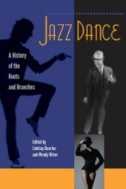 |
Jazz Dance : A History of the Roots and Branches The history of jazz dance is best understood by comparing it to a tree. The art form's roots are African. Its trunk is vernacular, shaped by European influence, and exemplified by the Charleston and the Lindy Hop. The branches are many and varied and include tap, Broadway, funk, hip-hop, Afro-Caribbean, Latin, pop, club jazz, popping, B-boying, party dances, and much more.Unique in its focus on history rather than technique, Jazz Dance offers the only overview of trends and developments since 1960. Editors Lindsay Guarino and Wendy Oliver have assembled an array of seasoned practitioners and scholars who trace the many histories of jazz dance and examine various aspects of the field, including trends, influences, training, race, gender, aesthetics, the international appeal of jazz dance, and its relationship to tap, rock, indie, black concert dance, and Latin dance.Featuring discussions of such dancers and choreographers as Bob Fosse and Katherine Dunham, as well as analyses of how the form's vocabulary differs from ballet, this complex and compelling history captures the very essence of jazz dance. |
|||||
|
|
||||||
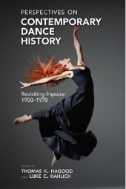 |
Perspectives on Contemporary Dance History : Revisiting Impulse, 1950-1970 Impulse represents the bedrock for dance as a literary topic worthy of critical analysis, critically aware self-reflection, and provocative and controversial points of view. Over the course of its run (1950–1970), Impulse presented articles, monographs, and perspectives that were unparalleled for breadth of commentary, scope of authorship, and for provocative yet engaging discourses. This ebook will be of interest to current and emerging dance scholars, dance historians, cultural theorists, education specialist, arts librarians, and those who seek a model for reclaiming the foundational literature of a discipline. |
|||||
|
|
||||||
|
Making an Entrance : Theory and Practice for Disabled and Non-Disabled Dancers Making an Entrance is the first ever practical introduction to teaching dance with disabled and non disabled students. This clearly written, thought provoking and hugely enjoyable manual is essential reading whether you're just starting out or are already active in the field.Taking improvisation as his focus and as the starting point of choreographic exploration, Adam Benjamin asks what it has to offer as an art form and how it can be better used to meet the changing needs of dance education.In the theoretical section Benjamin explores the history of a disintegrated dance practice, placing it within the wider context of cultural and political movements. He questions what is meant today when we talk about'inclusive'or'integrated dance'and what we might expect of it.The book includes over 50 exercises and improvisations designed to stimulate and challenge students at all levels of dance. Benjamin also includes useful hints on the practicalities of setting up workshops covering issues as diverse a class size, the safety aspects of wheelchairs and the accessibility of dance spaces. |
||||||
|
|
||||||
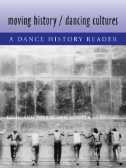 |
Moving History/Dancing Cultures : A Dance History Reader This new collection of essays surveys the history of dance in an innovative and wide-ranging fashion. Editors Dils and Albright address the current dearth of comprehensive teaching material in the dance history field through the creation of a multifaceted, non-linear, yet well-structured and comprehensive survey of select moments in the development of both American and World dance. This book is illustrated with over 50 photographs, and would make an ideal text for undergraduate classes in dance ethnography, criticism or appreciation, as well as dance history—particularly those with a cross-cultural, contemporary, or an American focus. The reader is organized into four thematic sections which allow for varied and individualized course use: Thinking about Dance History: Theories and Practices, World Dance Traditions, America Dancing, and Contemporary Dance: Global Contexts. The editors have structured the readings with the understanding that contemporary theory has thoroughly questioned the discursive construction of history and the resultant canonization of certain dances, texts and points of view. The historical readings are presented in a way that encourages thoughtful analysis and allows the opportunity for critical engagement with the text. Ebook Edition Note: Ebook edition note: Five essays have been redacted, including “The Belly Dance: Ancient Ritual to Cabaret Performance,” by Shawna Helland; “Epitome of Korean Folk Dance”, by Lee Kyong-Hee; “Juba and American Minstrelsy,” by Marian Hannah Winter; “The Natural Body,” by Ann Daly; and “Butoh: ‘Twenty Years Ago We Were Crazy, Dirty, and Mad',”by Bonnie Sue Stein. Eleven of the 41 illustrations in the book have also been redacted. |
|||||
|
|
||||||
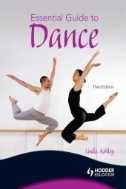 |
Clearly explain choreography, performance and dance appreciation in relation to new set works and choreographers.Thoroughly updated to meet the AS/A2 specifications and relevant Applied A levels, BTEC and other Dance qualifications, this highly illustrated third edition of Essential Guide to Dance provides support, guidance and all the up-to-date information students and teachers need. - Help students grasp dance technique and the implications for safe practice- Reinforce learning with interactive tasks and revision tests- Engage students with an extensive range of activities covering all aspects of current Dance courses so they learn more effectively- Prepare them for their examinations with a student-friendly guide to the choreographic process. |
|||||
|
|
||||||
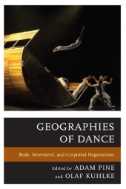 |
Geographies of Dance : Body, Movement, and Corporeal Negotiations This volume provides a theoretical and practical examination of the relationships between bodies, dance and space. Using ten case studies, it illustrates the symbolic power of dance that is crafted by choreographers and acted out by dancers. The book portrays a multitude of ways in which public and private spaces (stages, buildings, town squares as well as natural environments) are transformed and made meaningful by dance. Furthermore, it explores the meaning of dance as emotionally experienced by dancers, and examines how movement in certain spaces creates meaning without the use of words or symbols. |
|||||
|
|
||||||
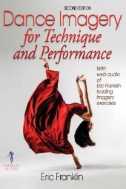 |
Dance Imagery for Technique and Performance This text provides dancers and dance educators with a deep understanding of how they can use imagery to improve artistry in dance. It offers hundreds of imagery exercises to refine improvisation, technique, and choreography as well as 295 illustrations and photos that illustrate Franklin's unique imagery concepts. The book includes imagery exercises that can restore and regenerate the body through massage, touch, and stretching. |
|||||
|
|
||||||
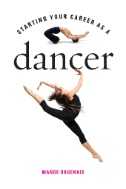 |
Starting Your Career As a Dancer In Starting Your Career as a Dancer, author Mande Dagenais explains what it really takes to get into the business, be in the business, and survive in the business. Based on more than twenty-five years of experience in the performing arts as a dancer, teacher, choreographer/director, and producer, Dagenais offers insider advice and shares her vast knowledge while answering questions asked by professionals and beginners alike. Aspiring dancers will learn about different markets, venues, and types of work for dancers, and what to expect from a dancing job, while experienced dancers will appreciate helpful tips on where and how to find work, business management, and career transition. Covering topics ranging from audition dos and don'ts to injury prevention, this is absolutely the most comprehensive and practical guide you will find to the dancer's profession. |
|||||
|
|
||||||
 |
Apollo's Angels : A History of Ballet NATIONAL BESTSELLERFor more than four hundred years, the art of ballet has stood at the center of Western civilization. Its traditions serve as a record of our past. Lavishly illustrated and beautifully told, Apollo's Angels—the first cultural history of ballet ever written—is a groundbreaking work. From ballet's origins in the Renaissance and the codification of its basic steps and positions under France's Louis XIV (himself an avid dancer), the art form wound its way through the courts of Europe, from Paris and Milan to Vienna and St. Petersburg. In the twentieth century, émigré dancers taught their art to a generation in the United States and in Western Europe, setting off a new and radical transformation of dance. Jennifer Homans, a historian, critic, and former professional ballerina, wields a knowledge of dance born of dedicated practice. Her admiration and love for the ballet, asEntertainment Weekly notes, brings “a dancer's grace and sure-footed agility to the page.”NAMED ONE OF THE BEST BOOKS OF THE YEAR BY THE NEW YORK TIMES BOOK REVIEW • LOS ANGELES TIMES • SAN FRANCISCO CHRONICLE • PUBLISHERS WEEKLY. |
|||||
|
|
||||||
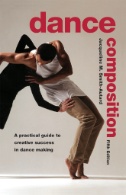 |
This book, a bestseller for over twenty years, is a practical guide to creative success in dance making and is a popular textbook for all those who are interested in dance composition, from secondary school to university. |
|||||
|
|
||||||
|
Writing About Dance guides students through processes of writing about dance, from the informal (journal writing and free writing) to the formal (critiques, essays, and research papers). Students become better critical thinkers and writers as they deepen their understanding of dance technique, dance creativity, and dance as an art form. |
||||||
|
|
||||||
|
Dance Ethnography and Global Perspectives : Identity, Embodiment and Culture Dance Ethnography and Global Perspectives presents the work of dance scholars whose professional fieldwork spans several continents and includes studies of the dance and movement systems of varied global communities. |
||||||
|
|
||||||
|
In her remarkable book, Sondra Horton Fraleigh examines and describes dance through her consciousness of dance as an art, through the experience of dancing, and through the existential and phenomenological literature on the lived body. She describes, with performance photographs, specific imagery in dance masterworks by Doris Humphrey, Anna Sokolow, Viola Farber, Nina Weiner, and Garth Fagan. |
||||||
|
|
||||||
|
The Six Questions : Acting Technique For Dance Performance In the late twenties, actors and directors of the Group Theatre, who were pioneering the use of Stanislavski's teachings, saw the value of teaching ballet and the emerging modern dance. Actors now routinely learn dance, but dancers rarely study acting. In The Six Questions, Nagrin maintains that a command of acting techniques allows the dancer to couple the passion of a body in motion with the heart and mind of the dancer. In five parts, the book first examines the personal essentials demanded by dance. The second part looks at the pitfalls inherent in the act of performing from vanity to self-hatred. The third part, the core of the book, poses six questions: Who? is doing what? to whom? where and when? and why? and against what obstacle? In the fourth part, Nagrin looks at the tools for working on the role, and the fifth part enters into the very act of performing. All of the work is handled in terms of movement alone: no dialogue or scenes from plays are used. The Six Questions is a companion piece to Nagrin's other works, How To Dance Forever, and Dance and the Specific Image: Improvisation. Together they present an invaluable teaching and learning tool for anyone in love with dance. |
||||||
|
|
||||||
|
Dealing exclusively with developments in modern dance since 1951, this book is for anyone who wishes to understand and experience nonliteral dance: students and teachers, dancers and critics. |
||||||
|
|
||||||
|
This title examines Western dance's original European roots, the ways and styles in which it has expanded and changed, and how it has grown into such an integral part of Western culture. Special features include a timeline, Art Spotlights, infographics, and fact bubbles. |
||||||
|
|
||||||
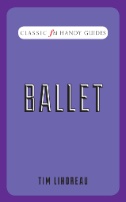 |
Ballet : Classic FM Handy Guides Ballet is defined by dance, but supporting the visual drama are some of the greatest musical treasures in the classical canon. This handy reference guide from Classic FM explores the world's most popular ballets, considering the great choreographers, dancers and, of course, composers who have created the most stunning performances of this incredible art form, along with plenty of musical recommendations along the way. From its early inception at the French court to modern-day developments and interpretations, ballet has long had a popular following. Packed full of essential information, this pocket-sized handbook explores the history, performers, composers and music, highlighting the very best ballets and the standout tracks that should feature in the collection of any aficionado. Classic FM's Handy Guides are a fun and informative set of introductions to standout subjects within classical music, each of which can be read and digested in one sitting: a perfect collectible series whether you're new to the world of classical music or an aficionado. |
|||||
|
|
||||||
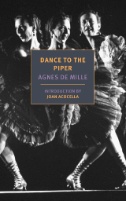 |
Born into a family of successful playwrights and producers, Agnes de Mille was determined to be an actress. Then one day she witnessed the Russian ballet dancer Anna Pavlova, and her life was altered forever. Hypnotized by Pavlova's beauty, in that moment de Mille dedicated herself to dance. Her memoir records with lighthearted humor and wisdom not only the difficulties she faced—the resistance of her parents, the sacrifices of her training—but also the frontier atmosphere of early Hollywood and New York and London during the Depression. “This is the story of an American dancer,” writes de Mille, “a spoiled egocentric wealthy girl, who learned with difficulty to become a worker, to set and meet standards, to brace a Victorian sensibility to contemporary roughhousing, and who, with happy good fortune, participated by the side of great colleagues in a renaissance of the most ancient and magical of all the arts.” |
|||||
|
|
||||||
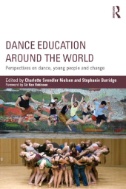 |
Dance Education Around the World : Perspectives on Dance, Young People and Change Dance has the power to change the lives of young people. It is a force in shaping identity, affirming culture and exploring heritage in an increasingly borderless world.? Creative and empowering pedagogies are driving curriculum development worldwide where the movement of peoples and cultures generates new challenges and possibilities for dance education in multiple contexts. In Dance Education around the World: Perspectives on Dance, Young People and Change, writers across the globe come together to reflect, comment on and share their expertise and experiences. The settings are drawn from a spectrum of countries with contributions from Europe, the Americas, the Middle East, Asia, the Pacific and Africa giving insights and fresh perspectives into contrasting ideas, philosophies and approaches to dance education from Egypt to Ghana, Brazil to Finland, Jamaica to the Netherlands, the UK, USA, Australia, New Zealand and more. |
|||||
|
|
||||||
|
Dance, Somatics and Spiritualities : Contemporary Sacred Narratives Presenting a rich mosaic of embodied contemporary narratives in spirituality and movement studies, this book explicitly studies the relationship between spirituality and the field of Somatic Movement Dance Education. It is the first scholarly text to focus on contemporary spirituality within the domain of dance and somatic movement studies. Dance, Somatics and Spiritualities brings together prominent authors and practitioners in order to elucidate how a wide range of sacred narratives/spiritualities are informing pedagogy, educational and therapeutic practice. As well as providing new insights and promoting creative/artistic awareness, this seminal text de-mystifies the spiritual/sacred and brings clarity and academic visibility to this largely uncharted and often misrepresented subject. |
||||||
|
|
||||||
|
Choreographies of 21st Century Wars Wars in this century are radically different from the major conflicts of the 20th century--more amorphous, asymmetrical, globally connected, and unending. Choreographies of 21st Century Wars is the first book to analyze the interface between choreography and wars in this century, a pertinent inquiry since choreography has long been linked to war and military training. The book draws on recent political theory that posits shifts in the kinds of wars occurring since the First and Second World Wars and the Cold War, all of which were wars between major world powers. Given the dominance of today's more indeterminate, asymmetrical, less decisive wars, we ask if choreography, as an organizing structure and knowledge system, might not also need revision in order to reflect on, and intercede in, a globalized world of continuous warfare. In an introduction and sixteen chapters, authors from a number of disciplines investigate how choreography and war in this century impinge on each other. Choreographers write of how they have related to contemporary war in specific works, while other contributors investigate the interconnections between war and choreography through theatrical works, dances, military rituals and drills, the choreography of video war games and television shows. Issues investigated include torture and terror, the status of war refugees, concerns surrounding fighting and peacekeeping soldiers, national identity tied to military training, and more. The anthology is of interest to scholars in dance, performance, theater, and cultural studies, as well as the social sciences. |
||||||
|
|
||||||
|
La Danza and Other Great Piano Transcriptions Franz Liszt (1811–1886) was not only a brilliant and innovative composer and the greatest piano virtuoso of the 19th century; he was also a generous popularizer of other composers'music. One of his primary methods was through his superb piano transcriptions of great orchestral, operatic, and other pieces. These transcriptions — many of them masterpieces in their own right — made it possible for people living far from the concert hall to re-create and enjoy music to which they would otherwise have had no access.Liszt's incomparable mastery of the art of transcription is reflected in this rich selection of favorites, including Rossini's'La Danza,'Bach's'Organ Fantasy and Fugue in G minor,'Beethoven's'Joyous gathering of the peasants'from the'Pastorale'Symphony, Mendelssohn's'Wedding March'and'Dance of the Elves'from A Midsummer Night's Dream,'The Trout'and'Erikönig'by Schubert, the'Polonaise'from Tchaikovsky's EugeneOnegin, and many others. |
||||||
|
|
||||||
|
Body and Mind in Motion : Dance and Neuroscience in Conversation Western contemporary dance and body-mind education have engaged in a pas de deux for more than four decades. The rich interchange of somatics and dance has altered both fields, but scholarship that substantiates these ideas through the findings of twentieth- century scientific advances has been missing. This book fills that gap and brings to light contemporary discoveries of neuroscience and somatic education as they relate to dance. Drawing from the burgeoning field of “embodiment”—itself an idea at the intersection of the sciences, humanities, arts, and technologies—Body and Mind in Motion highlights the relevance of somatic education within dance education, dance science, and body-mind studies. |
||||||
|
|
||||||
 |
Trisha Brown : Choreography As Visual Art Trisha Brown re-shaped the landscape of modern dance with her game-changing and boundary-defying choreography and visual art. Art historian Susan Rosenberg draws on Brown's archives, as well as interviews with Brown and her colleagues, to track Brown's deliberate evolutionary trajectory through the first half of her decades-long career. Brown has created over 100 dances, six operas, one ballet, and a significant body of graphic works. This book discusses the formation of Brown's systemic artistic principles, and provides close readings of the works that Brown created for non-traditional and art world settings in relation to the first body of works she created for the proscenium stage. Highlighting the cognitive-kinesthetic complexity that defines the making, performing and watching of these dances, Rosenberg uncovers the importance of composer John Cage's ideas and methods to understand Brown's contributions. One of the most important and influential artists of our time, Brown was the first woman choreographer to receive the coveted MacArthur Foundation Fellowship “Genius Award.” |
|||||
|
|
||||||
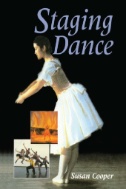 |
Staging Dance is a practical handbook that covers all aspects of putting on a dance production. It highlights the current diversity of dance activities, choosing examples from working dance groups and from individual dancers. The book includes sections on choreography, music and sound, designing and making sets and costumes, lighting design and technical implementation and stage management. Funding, planning and publicity are also covered. Staging Dance will prove invaluable not only to dance artists, but also those working along side them: musicians, designers, lighting technicians, administrators and directors. |
|||||
|
|
||||||
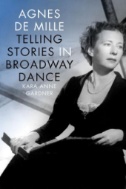 |
Agnes De Mille : Telling Stories in Broadway Dance This book explores the Broadway legacy of choreographer Agnes de Mille, from the 1940s through the 1960s. Six musicals are discussed in depth - Oklahoma!, One Touch of Venus, Bloomer Girl, Carousel, Brigadoon, and Allegro. Oklahoma!, Carousel, and Brigadoon were de Mille's most influential and lucrative Broadway works. The other three shows exemplify aspects of her legacy that have not been fully examined, including the impact of her ideas on some of the composers with whom she worked; her ability to incorporate a previously conceived work into the context of a Broadway show; and her trailblazing foray into the role of choreographer/director. Each chapter emphasizes de Mille's unique contributions to the original productions. Several themes emerge in looking closely at de Mille's Broadway repertoire. Character development remained at the heart of her theatrical work work. She often took minor characters, represented with minimal or no dialogue, and fleshed out their stories. These stories added a layer of meaning that resulted in more complex productions. Sometimes, de Mille's stories were different from the stories her collaborators wanted to tell, which caused many conflicts. Because her unique ideas often got woven into the fabric of her musicals, de Mille saw her choreography as an authorship. She felt she should be given the same rights as the librettist and the composer. De Mille's work as an activist is an aspect of her legacy that has largely been overlooked. She contributed to revisions in dance copyright law and was a founding member of the Stage Directors and Choreographers Society, a theatrical union that protects the rights of directors and choreographers. Her contention that choreographers are authors who have their own stories to tell offers a new way of understanding the Broadway musical. |
|||||
|
|
||||||
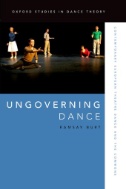 |
Ungoverning Dance : Contemporary European Theatre Dance and the Commons Ungoverning Dance examines the work of progressive contemporary dance artists in continental Europe from the mid 1990s to 2015. Placing this within the context of neoliberalism and austerity, the book argues that these artists have developed an ethico-aesthetic approach that uses dance practices as sites of resistance against dominant ideologies, and that their works attest to the persistence of alternative ways of thinking and living. In response to the way that the radical values informing their work are continually under attack from neoliberalism, these artists recognise that they in effect share common pool resources. Thus, while contemporary dance has been turned into a market, they nevertheless value the extent to which it functions as a commons. Work that does this, it argues, ungoverns dance. The book offers close readings of works from the 1990s and 2000s by two generations of European-based dance artists: that of Jérôme Bel, Jonathan Burrows, La Ribot, and Xavier Le Roy who began showing work in the 1990s; and that of artists who emerged in the 2000s including Fabián Barba, Faustin Linyekula, Ivana Müller, and Nikolina Pristas. Topics examined include dance and precarious life, choreographing friendship, re-performance, the virtual in dance, and a dancer's experience of the Egyptian revolution. Ungoverning Dance proposes new ways of understanding recent contemporary European dance works by making connections with their social, political, and theoretical contexts. |
|||||
|
|
||||||
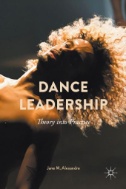 |
Dance Leadership : Theory Into Practice This “what is”—rather than “how to”— volume proposes a theoretical framework for understanding dance leadership for dancers, leaders, and students of both domains, illustrated by portraits of leaders in action in India, South Africa, UK, US, Brazil and Canada. What is dance leadership? Who practices it, in what setting, and why? Through performance, choreography, teaching, writing, organizing and directing, the dance leaders portrayed herein instigate change and forward movement. Illustrating all that is unique about leading in dance, and by extension the other arts, readers can engage with such wide-ranging issues as: Does the practice of leading require followers? How does one individual's dance movement act on others in a group? What does ‘social engagement' mean for artists? Is the pursuit of art and culture a human right? |
|||||
|
|
||||||
|
Every Little Movement : A Book About Delsarte The book begins with a discussion of Francois Delsarte as a scientist who discovered how the human body moves under the stimulus of emotions. It proceeds to the laws he developed as a result of his research and continues by discussing the application of the science of Delsarte to the art of the dance. Shawn then goes on to describe how Delsarte has influenced the development of American modern Dance. |
||||||
|
|
||||||
 |
The Aging Body in Dance : A Cross-cultural Perspective What does it mean to be able to move? The Aging Body in Dance brings together leading scholars and artists from a range of backgrounds to investigate cultural ideas of movement and beauty, expressiveness and agility. Contributors focus on Euro-American and Japanese attitudes towards aging and performance, including studies of choreographers, dancers and directors from Yvonne Rainer, Martha Graham, Anna Halprin and Roemeo Castellucci to Kazuo Ohno and Kikuo Tomoeda. They draw a fascinating comparison between youth-oriented Western cultures and dance cultures like Japan's, where aging performers are celebrated as part of the country's living heritage. The first cross-cultural study of its kind, The Aging Body in Dance offers a vital resource for scholars and practitioners interested in global dance cultures and their differing responses to the world's aging population. |
|||||
|
|
||||||
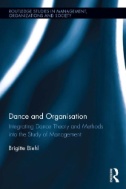 |
Dance and Organization : Integrating Dance Theory and Methods Into the Study of Management Dance and Organisation is the first comprehensive work to integrate dance theory and methods into the study of management, which have developed an interest in the arts and the humanities. Dance represents dynamics and change and puts the moving body at the centre, which has been ignored and oppressed by traditional management theory. ‘Being' a leader however also means to ‘move' like one, and critical lessons can be learned from ballerinas and modern dancers. Leadership is a dialogue, as in the work of musicians, conductors and DJs who manage groups without words. Movement in organisational space, in a museum or a techno club can be understood as a choreography and site-specific performance. Movement also is practically used for leadership and employee development workshops and can be deployed as an organisational research method. By taking a firm interdisciplinary stance in dance studies and organisational research to explore management topics, reflecting on practitioner accounts and research projects, the book seeks to make an innovative contribution to our understanding of the moving body, generating new insights on teamwork, leadership, gender in management, organisational space, training and research methods. It comprises an important contribution to the organizational behaviour and critical management studies disciplines, and looks to push the boundaries of the academic literature. |
|||||
|
|
||||||
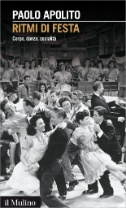 |
Ritmi di festa : Corpo, danza, socialità Negli esseri umani la musicalità è una dote innata. Noi attraversiamo il tempo della nostra vita camminando, correndo, saltando, strisciando, toccando, scavando, tagliando, cucendo, bussando, carezzando, scrivendo, leggendo, parlando: sono tutte azioni che hanno intrecci ritmico-musicali. Il 24 dicembre 1914 sul fronte occidentale decine di migliaia di soldati nemici deposero spontaneamente le armi e celebrarono insieme il Natale. Un evento che colse del tutto impreparati gli alti comandi degli eserciti contrapposti. Come fu possibile, il giorno dopo, tornare a uccidersi? La festa non è forse prerogativa di una comunità, dunque impossibile tra nemici? Altri festeggiamenti inauditi, perfino nei lager e nei gulag, ci spingono a rileggere le stesse feste 'normali', per scoprire come un certo modo ritmico di stare insieme sia ben più che l'espressione di una futile nostalgia folkloristica: ha radici evolutive, attestate nella vita sociale dei primati nostri precursori, e corrisponde in termini sociali a quelle intense relazioni a due – tra madre e figlio, tra amanti, tra amici – che sono cardine di ogni esperienza vitale. |
|||||
|
|
||||||
|
Essentials of Dance Movement Psychotherapy contributes to the global interest in embodiment approaches to psychotherapy and to the field of dance movement psychotherapy specifically. It includes recent research, innovative theories and case studies of practice providing an inclusive overview of this ever growing field. As well as original UK contributions, offerings from other nations are incorporated, making it more accessible to the dance movement psychotherapy community of practice worldwide. Helen Payne brings together well-known, experienced global experts along with rising stars from the field to offer the reader a valuable insight into the theory, research and practice of dance movement psychotherapy. The contributions reflect the breadth of developing approaches, covering subjects including: • combining dance movement psychotherapy with music therapy; • trauma and dance movement psychotherapy; • the neuroscience of dance movement psychotherapy; • the use of touch in dance movement psychotherapy; • dance movement psychotherapy and autism; • relational dance movement psychotherapy. Essentials of Dance Movement Psychotherapy will be a treasured source for anyone wishing to learn more about the psychotherapeutic use of creative movement and dance. It will be of great value to students and practitioners in the arts therapies, psychotherapy, counselling and other health and social care professions. |
||||||
|
|
||||||
| MÚSICA |
|
|||||
|
|
||||||
|
Este libro explica los fundamentos de la armonía, las escalas, los acordes, la tonalidad y el ritmo, y lo hace de manera fácil de entender. Este libro explica cosas que deberían saber las personas que tocan algún instrumento musical, pero que a menudo ignoran. Además ayuda, incluso sin saber leer ni una nota ni tocar el instrumento más simple, a que aumente el placer que sentimos cuando escuchamos música. |
||||||
|
|
||||||
|
Estilo musical y curriculum en la enseñanza secundaria obligatoria A partir de un trabajo de análisis de la presencia de la música culta, tradicional y popular en diferentes libros de texto españoles de educación secundaria, apunta que la mayoría de los manuales analizados desarrolla el currículo de la música en este nivel educativo tomando como base principalmente la música culta, seguida ésta de la tradicional, a bastante distancia, y , en último lugar, la popular. |
||||||
|
|
||||||
|
Esta obra está dirigida a músicos, estudiantes de música, profesionales de las artes escénicas y en general, a cuantos amantes de la música deseen conocer las explicaciones científicas de este arte. A través de sus páginas, los lectores pueden acceder a los fundamentos científicos de los numerosos y distintos aspectos del fenómeno musical y adquirir una visión de conjunto de un área de conocimiento, como es la Acústica Musical, en la que están presentes ciencias tan dispares como la Física y la Psicología, la Fonología, la Audiología y la Teoría de la Música o bien la Organología y la Acústica Arquitectónica. |
||||||
|
|
||||||
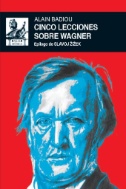 |
Durante más de un siglo, la música de Wagner ha sido objeto de un intenso debate entre filósofos, muchos de los cuales han atacado su entramado ideológico –según algunos, antisemita y reaccionario–. En este libro, sin duda una de las grandes aportaciones recientes al amplio corpus de bibliografía sobre el músico alemán, Alain Badiou, filósofo radical y entusiasta wagneriano, ofrece una lectura detallada de las respuestas críticas a la obra del compositor, entre las que se incluyen los escritos de Adorno y la cooptación por parte del nacionalsocialismo. Asimismo ofrece un nuevo y clarificador enfoque sobre el'caso Wagner', que remata con una penetrante interpretación de esa gran -y polémica- obra que es'Parsifal'. El volumen, que se completa con un largo epílogo de Zizek, constituye un intento, escrito desde la pasión, de poner de manifiesto la relevancia de Wagner en el mundo contemporáneo. |
|||||
|
|
||||||
 |
Breve historia de la música occidental El presente libro ofrece una historia del devenir de la música occidental, no sólo de sus grandes compositores e intérpretes, sino también de los cambios que han ido experimentando las ideas en torno a su esencia y su función. al hilo de este planteamiento, el autor sugiere hasta qué punto esta evolución es reflejo del desarrollo de la concepción humana del tiempo. Escrita con claridad y rigor, sus veinticuatro capítulos constituyen una lectura esencial y esclarecedora para estudiantes, profesores y amantes de la música en general. |
|||||
|
|
||||||
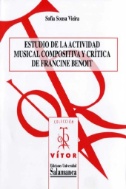 |
Estudio de la actividad musical, compositiva y crítica de Francine Benoit Abordar su labor como crítica musical, tarea que ejerció durante cerca de setenta años en distintos diarios y fundamentalmente en el Diário de Lisboa, escribiendo sobre temas de contenido musical que, en cierta forma, nos muestran no sólo el recorrido histórico-cultural portugués a lo largo del siglo XX, sino que a través de esa crítica dio a conocer la vida musical portuguesa, hasta ahora poco investigada, e incluso desconocida por la sociedad lusa del círculo musicológico. |
|||||
|
|
||||||
|
La catedral de Ávila como Institución musical durante la segunda mitad del siglo XVII La Catedral de Ávila como Institución Musical durante la segunda mitad del siglo XVII es un estudio de contextualización histórica sobre la actividad musical de la Catedral de Ávila como una Institución insertada y condicionada por su contexto urbano. |
||||||
|
|
||||||
|
La educación musical para el nuevo milenio En una serie de sugerentes capítulos, cada una de las personalidades aquí reunidas plantea qué tipo de relación pueden establecer intérpretes y docentes de música en relación con las transformaciones y cambios en este ámbito de la cultura y de la educación en la sociedad actual. Con este propósito, abordan temas como el valor y significado de la cultura musical, la identidad cultural, las emociones, la autonomía y la globalización. Esta obra incita a reflexionar sobre qué significa la música en nuestros días, y ofrece un conjunto de respuestas a la pregunta de cómo puede mantener esta parcela de la cultura su relevancia en el siglo XXI. Los análisis y respuestas que se ofrecen sobre las transformaciones de las actuales sociedades, afectan sin duda a la educación musical y plantean cuestiones de enorme calado sobre la conceptualización de la experiencia musical y, por tanto, sobre la enseñanza y el aprendizaje de la música. |
||||||
|
|
||||||
|
Tratado fundamental de la música : (1804c) Con la presente edición, el Departamento de Musicología del Consejo Superior de Investigaciones Científicas consolida la serie iniciada de facsímiles y ediciones anotadas de las más relevantes obras de referencia del ámbito teórico-musical hispánico, con vistas a aproximar a investigadores, estudiosos y aficionados algunos de los textos básicos de la tratadística musical hispánica. Con la presente edición, el Departamento de Musicología del Consejo Superior de Investigaciones Científicas consolida la serie iniciada de facsímiles y ediciones anotadas de las más relevantes obras de referencia del ámbito teórico-musical hispánico, con vistas a aproximar a investigadores, estudiosos y aficionados algunos de los textos básicos de la tratadística musical hispánica.
APA (American Psychological Assoc.) Teixidor y Barceló, J. d., González Valle, J. V., & Pavía i Simó, J. (2009). Tratado fundamental de la música : (1804c). Barcelona: Editorial CSIC Consejo Superior de Investigaciones Científicas. MLA (Modern Language Assoc.) Teixidor y Barceló, José de, et al. Tratado Fundamental De La Música : (1804C). Editorial CSIC Consejo Superior de Investigaciones Científicas, 2009. Monumentos de la música española. EBSCOhost. Con la presente edición, el Departamento de Musicología del Consejo Superior de Investigaciones Científicas consolida la serie iniciada de facsímiles y ediciones anotadas de las más relevantes obras de referencia del ámbito teórico-musical hispánico, con vistas a aproximar a investigadores, estudiosos y aficionados algunos de los textos básicos de la tratadística musical hispánica.
APA (American Psychological Assoc.) Teixidor y Barceló, J. d., González Valle, J. V., & Pavía i Simó, J. (2009). Tratado fundamental de la música : (1804c). Barcelona: Editorial CSIC Consejo Superior de Investigaciones Científicas. MLA (Modern Language Assoc.) Teixidor y Barceló, José de, et al. Tratado Fundamental De La Música : (1804C). Editorial CSIC Consejo Superior de Investigaciones Científicas, 2009. Monumentos de la música española. EBSCOhost. |
||||||
|
|
||||||
|
Comunicación y música I: lenguaje y medios Este libro permite entender la música en sus más diversas manifestaciones, a partir de la experiencia académica, investigadora, musical y personal de cada uno de los autores de los textos aquí reunidos (músicos, musicólogos, antropólogos, sociólogos, lingüistas o comunicólogos). |
||||||
|
|
||||||
|
Comunicación y música, II, Tecnología y audiencias La comunicación y la música se cuentan entre los elementos culturales clave, más característicos, de nuestra sociedad. Aunque durante muchos años su estudio se haya encuadrado en el seno de tradiciones científicas diferentes, la creciente coincidencia tecnológica, cultural, profesional que hoy se da entre la comunicación y la música, así como la necesidad de entender cabalmente ambos fenómenos, exigen que las formas de estudiarlas cambien, sigan enfoques más amplios y dialoguen entre sí. Esta obra aporta una serie de fundamentos teóricos y metodológicos, así como investigaciones más aplicadas, que permiten comprender mejor, y encarar profesionalmente con más firmeza, la comunicación y la música. |
||||||
|
|
||||||
|
La música en el cine y La estética de la música : La estética de la música La música en el cine. Este libro reivindica el papel de la música en el cine y destaca las principales aportaciones del lenguaje musical en el séptimo arte. En cuanto a la estética de la música, en este libro se centra y explica cómo cada época ha visto la música y su importancia: desde los griegos hasta hoy. |
||||||
|
|
||||||
|
Este libro busca dotar al que escucha de los medios necesarios para convertirlo en un oyente activo, capaz de comprender y disfrutar mejor la audición de una obra musical. |
||||||
|
|
||||||
|
Este libro ayuda a comprender cómo evolucionó la orquesta sinfónica, el papel del director de orquesta, así como las diferentes formas musicales. |
||||||
|
|
||||||
|
Este libro aborda el tema de la voz como instrumento musical, su clasificación en voces femeninas, masculinas, cómo se reúnen las voces para interpretar un repertorio musical, el surgimiento de la ópera y los principales autores operísticos desde la aparición del género hasta el siglo XX en Italia, Alemania, Francia, Rusia, Gran Bretaña y España. Los orígenes de la zarzuela como género, los principales representantes del género grande, del género chico, así como un intento de clasificación de este último, su evolución e influencia en Hispanoamérica. La opereta y sus principales compositores. La música en el teatro y en el cine, la música religiosa, la danza y el surgimiento del ballet. |
||||||
|
|
||||||
|
Este volumen está dedicado a la didáctica de la Música en la educación secundaria, los autores de los distintos capítulos no se limitan a explicar cómo enseñar, sino que vinculan constantemente la teoría con la práctica, relacionando la realidad de las aulas con los diferentes contextos en los que puede tener lugar el aprendizaje musical. Válido para el profesorado en formación inicial (máster de secundaria) y para los docentes en ejercicio que deseen potenciar su desarrollo profesional. |
||||||
|
|
||||||
|
Música : investigación, innovación y buenas prácticas Este libro se ha escrito pensando en la necesidad de aportar materiales que sirvan para trabajar las competencias profesionales relacionadas con los procesos de investigación e innovación en el aula, las cuales son una parte fundamental de las competencias profesionales que queremos desarrollar. Las buenas prácticas que se incluyen en este libro pretenden ejemplificar a nivel del aula muchas de las ideas desarrolladas en los apartados destinados a los procesos de investigación e innovación citados anteriormente. Útil tanto para el profesorado en formación inicial (Máster de Secundaria) como para los docentes en ejercicio que deseen potenciar su desarrollo profesional. |
||||||
|
|
||||||
|
En el presente voumen, quinto dentro de sus Escritos musicales publicados por Akal en su Obra Completa, Adorno presenta un análisis de la Nueva Música, de numerosos compositores y algunas de sus obras (desde Bach, Beethoben o Schubert hasta Berg, Eisler, Zellig y Weill), y de conciertos y conferencias radiofónicas. La obra concluye con un brillante estudio sociológico sobre la situación de la música en su tiempo. |
||||||
|
|
||||||
|
Freddie Mercury : Tributo al lider de Queen Freddie Mercury fue un icono mundial de la música, uno de los grandes. La editorial Ave Fenix te trae en español este tributo hecho en comic biografia a todo color del lider del grupo Queen. |
||||||
|
|
||||||
|
Música de todo el mundo : los patrones Practice finding patterns while learning about music around the world! Many different musical instruments use patterns to make different sounds into rhythms, such as tambourines, drums, and flutes. This charming, Spanish-translated text uses vibrant images, engaging practice questions, and helpful mathematical diagrams to help young readers understand patterns and early STEM themes. Children will have fun discovering patterns that these instruments make and learning how to make patterns of their own with homemade instruments! |
||||||
|
|
||||||
|
En torno a los orígenes del Cante Flamenco En torno a los orígenes del cante flamenco es un ensayo histórico sobre flamencos, no sobre música; ni siquiera sobre música flamenca, sino sobre flamencos: intérpretes del cante flamenco. Obra inducida por una afirmación de un flamenco: Juan Talega. Decía Juan Talega:'Echando este pueblo fuera (Morón) éste, éste, cuando se coge el tren pa Sevilla, digo pa Cái, no me gustan las desviaciones, sino todos los pueblos rectos por esa misma vía, ese mismo ferrocarril. Sarvo excepciones, que es sólo Morón, sólo ¿eh? Me gusta Utrera, me gusta Lebrija, me gusta Las Cabezas, me gusta Jerez, El Puerto, los otros hasta Cái; desviaciones ninguna, pero ninguna absolutamente; …'Se estaba refiriendo al domicilio de familias cantaoras. Para Juan Talega esto era un hecho. La vivencia de Juan Talega nos indujo a crear una base de datos de cuantos cantaores profesionales de flamenco se tenía algún tipo de registro: sonoro o literario. Los datos importantes eran: lugar de nacimiento; actividad laboral previa a su dedicación profesional; antecedentes familiares, etc.. Nos dice Humboldt en 1799:'Pepe, bailaor de volero del teatro de Málaga, igualmente delgado, de mejillas flácidas, con el aspecto de uno que, sin llegar a estar enfermo, está cansado por tanta vida nocturna. Se habló de él como de una persona que sólo vivía del canto y la danza.'Este es el flamenco que estamos inventariando, el que vive del cante; no el que vive de la danza o el toque (de guitarra), sólo del cante. Y no es que no sean flamenco los profesionales de la guitarra o el baile, lo son... Por supuesto que se anotan las opiniones de musicólogos e historiadores; entre otras la de Don Jualián Ribera Tarrego, quien en su obra La Música de las Cantigas Alfonso X El Sabio, señala 18 de ellas en compases flamencos; y su opinión:'... son seguiriyas gitanas, soleares, playeras, sevillanas floreadas,'cante hondo andaluz', etc.; y su tesis sobre esta música que, como cualquiera de las otras ciencias, -matemáticas, filosofía, medicina, física, etc. - había llegado al Occidente procedente del mundo clásico, del que un área importante de la Península Ibérica fue parte, tanto en su etapa fenicia como las posteriores griega y romana.' |
||||||
|
El gran siglo de la música europea Tantos movimientos culturales y sociales determinan un siglo XIX muy denso y desconcertante. La cultura se difunde en el pueblo y produce una serie de conmociones políticas y económicas que nadie habría podido prever con anterioridad. Por todas estas causas el silgo XIX es al mismo tiempo progresista y desconcertante, como podemos ver en esta breve colección de imágenes con el que queremos recordarlo. |
||||||
|
|
||||||
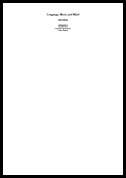 |
In this book I examine the relationship between memory and verbalization as it figures in the perception of tonal music. Specifically, I invoke recent psychological theories of perceptual memory and language processing in order to shed light on the traditional philosophical problem of ineffable musical knowledge. Philosophers of art have long written of musical knowledge that cannot be put into words. My hope is that, in addition to illuminating an old philosophical puzzle, the present work carves out a new approach to problems in aesthetics__an approach that augments traditional “aprioristic” treatments with the explanatory power and empirical testability of contemporary cognitive science. |
|||||
|
|
||||||
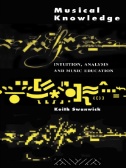 |
The understanding of music involves the mastery of its various layers of meaning. Sometimes this meaning can be acquired through human insight; at other times, it can be learned. The central concern of Musical Knowledge is the tension between intuitive and analytical ways of making sense of the world. Keith Swanwick examines this relationship on three levels: in considering music as a way of knowing; as the apparent predicament between qualitative and quantitative research paradigms; and as a tension in education. Keith Swanwick guides his reader from a theoretical exploration of musical knowledge, through an examination of ways of researching the musical experience to a concluding section which will be of direct practical help to teachers. He suggests ways in which music education can be a vital transaction, giving examples across a range of music teaching, including school classroom and instrumental studios. The book will be of interest to anyone who makes or responds to music. |
|||||
|
|
||||||
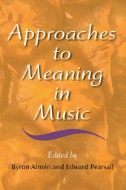 |
Approaches to Meaning in Music Musical meaning has become a seductively compelling topic for music scholars over the last few decades. The term meaning suggests a special kind of knowledge, a privileged insight into our fascination with the experience of music. Indeed, explorations into musical meaning lay claim to embodying the central core of our discipline, justifying its very existence by revealing the source of music’s power, by translating its implicit message. |
|||||
|
|
||||||
 |
Counterpoint, Composition and Musica Ficta The editors of these volumes now seek to develop and explore analytical methodologies for the discussion of early music as music. In this book we explore compositional procedures, tonal structures, musical borrowing, and other topics, focusing both on individual compositions and on theoretical systems. We seek to encourage critical writing about music that will be useful to performers, listeners, and scholars. |
|||||
|
|
||||||
|
Interpreting Music is a comprehensive essay on understanding musical meaning and performing music meaningfully—'interpreting music'in both senses of the term. Synthesizing and advancing two decades of highly influential work, Lawrence Kramer fundamentally rethinks the concepts of work, score, performance, performativity, interpretation, and meaning—even the very concept of music—while breaking down conventional wisdom and received ideas. Kramer argues that music, far from being closed to interpretation, is ideally open to it, and that musical interpretation is the paradigm of interpretation in general. The book illustrates the many dimensions of interpreting music through a series of case studies drawn from the classical repertoire, but its methods and principles carry over to other repertoires just as they carry beyond music by working through music to wider philosophical and cultural questions. |
||||||
|
|
||||||
|
This book takes the fundamentals and presents them with easy-to-follow explanations, examples and exercises. It contains information that can be applied to all types of music, whether instrumental or vocal, classical or popular. Useful charts, tables and a glossary are found at the back of the book for quick reference. I have also given a few suggestions for further study, including use of the internet. |
||||||
|
|
||||||
|
Music Theory for the Music Professional Written as a music theory text that not only addresses the important fundamental syntax of music in the classical sense but also relates this syntax to current practices and styles, this book should be particularly well-suited to musicians focusing on aspects of the music business and of popular culture. |
||||||
|
|
||||||
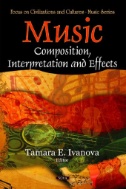 |
Music : Composition, Interpretation and Effects Music is an art form whose medium is sound organized in time. Common elements of music are pitch (which governs melody and harmony), rhythm (and its associated concepts tempo, meter, and articulation), dynamics, and the sonic qualities of timbre and texture. The creation, performance, significance, and even the definition of music vary according to culture and social context. Music can be divided into genres and subgenres, although the dividing lines and relationships between music genres are often subtle, sometimes open to individual interpretation, and occasionally controversial. Within'the arts', music may be classified as a performing art, a fine art, and auditory art. To people in many cultures, music is inextricably intertwined into their way of life. Music is known to have many benefits for health, ranging from inducing relaxation and sleep to improving a depressed mood. Music also enhances cognitive function such as attention to task, communication, learning and memory. This new and important book gathers the latest research from around the globe in this dynamic field of study and highlights topics such as: rap music and its effect on sexual attitudes, music videos and risky driving, burnout and music use, music memory and the right hippocampus, and others. |
|||||
|
|
||||||
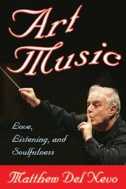 |
Art Music : Love, Listening and Soulfulness Listening to music is not merely something one does, but something central to a way of living. Listening has the power to transport one into another way of being. It is a mode of feeling and forms the bedrock of deep emotion. Written from the viewpoint of a philosophy of sensibility, Matthew Del Nevo notes that this perspective may not be in fashion, but it follows a long tradition.Del Nevo emphasizes the aesthetic experience of listening to art music as it has developed and disintegrated in Western civilization. He recognizes a deep psychological element to what he calls soul—or more accurately sensibility. He addresses music in a non-technical way, taking up the powerful art theory of Charles Baudelaire, the music philosophy of Schopenhauer and Richard Wagner, and takes a strong critical stand against modernist intellectual art music.The importance of this book for the musically- literate reader is its insight into the metaphysics of nostalgia. This comprehension is missing from nearly all musical instruction because we have lost sight of it. Del Nevo asserts that this understanding must be brought back into our culture. And since this is a book about listening to art music, it is no less about sensibility and its cultivation, which in its object form we call culture. An engaging book, Art Music will appeal to those interested in music, culture, and philosophy. |
|||||
|
|
||||||
 |
Listen to David Hesmondhalgh discuss the arguments at the core of 'Why Music Matters' with Laurie Taylor on BBC Radio 4's Thinking Allowed here. In what ways might music enrich the lives of people and of societies? What prevents it from doing so? Why Music Matters explores the role of music in our lives, and investigates the social and political significance of music in modern societies. First book of its kind to explore music through a variety of theories and approaches and unite these theories using one authoritative voice Combines a broad yet theoretically sophisticated approach to music and society with real clarity and accessibility A historically and sociologically informed understanding of music in relation to questions of social power and inequality By drawing on both popular and academic talk about a range of musical forms and practices, readers will engage with a wide musical terrain and a wealth of case studies. |
|||||
|
|
||||||
 |
Music Theory and Its Methods : Structures, Challenges, Directions This collection of essays explores a wide range of topics current in the field of music theory, including analytical methodologies for pretonal, tonal, and post-tonal music, assessment of notation as a vehicle for interpreting compositional strategies in different repertoires, and employment of approaches informed by cognitive, aesthetic, and ethnomusicological studies of music. Authors reflect critically on challenges within their specific areas of expertise and probe directions in which advances can be made and difficulties overcome. The results of these investigations will benefit readers, from early career researchers to experienced scholars, whose interests not only intersect with the topics presented here but which also encompass broad methodological issues affecting music theory. |
|||||
|
|
||||||
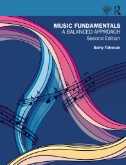 |
Music Fundamentals : A Balanced Approach This second edition comprises a textbook/workbook and interactive website designed for those who want to learn the basics of reading music. Intended for students with little or no prior knowledge of music theory, it offers a patient approach for reading, writing and even performing music. Musical examples range from Elvis Presley songs to Beethoven symphonies, from rhythmically challenging African songs and syncopated Brazilian choro melodies, to humorous Filipino ballads and Schubert lieder. The website includes graded quizzes and numerous skill training exercises. |
|||||
|
|
||||||
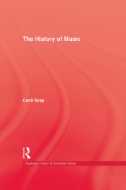 |
The purpose of this book is induce in the reader a more receptive and responsive attitude towards the great masterpieces of the past, and to stimulate his imaginative reaction to them. |
|||||
|
|
||||||
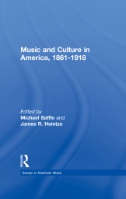 |
Music and Culture in America, 1861-1918 Essays in American Music celebrates the rich and varied heritage of this country’s music by bringing together articles written by distinguished scholars, researchers, and teachers about significant and unique musical events, persons, and places. |
|||||
|
|
||||||
|
Get your best grade with the SQA endorsed guide to National 5 Music.This book contains all the advice and support you need to revise successfully for your National 5 exam. It combines an overview of the course syllabus with advice from a top expert on how to improve exam performance, so you have the best chance of success.- Refresh your knowledge with complete course notes- Prepare for the exam with top tips and hints on revision technique- Get your best grade with advice on how to gain those vital extra marks
|
||||||
|
|
||||||
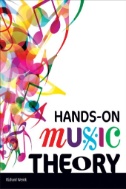 |
HANDS-ON MUSIC THEORY teaches you practical contemporary music theory in contemporary terms--without all the classical nostalgia for methods that are hundreds of years old. Written in fresh, accessible language, and illustrated with examples that draw on modern tools such as sequencer piano rolls and guitar tabs, this book offers practical, hands-on, easy-to understand instruction on key points of modern pop, rock, jazz and electronica music theory. You'll find a wealth of practical examples and familiar references, with links to music that you can listen to online. |
|||||
|
|
||||||
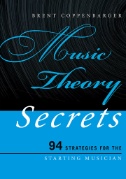 |
Music Theory Secrets : 94 Strategies for the Starting Musician Modeled on the brilliant approach first formulated by distinguished professor of music and master clarinetist Michele Gingras in Clarinet Secrets and More Clarinet Secrets (both available from Rowman and Littlefield), Music Secrets is designed for instrumentalists, singers, conductors, composers, and other instructors and professionals seeking a quick set of pointers to improve their work as performers and producers of music. Easy to use, contributions to the Music Secrets series fill a niche for those who need quick and easy methods for learning what they need—from those just starting to the advanced musician in need of a refresher or new insights.Rhythms, melodies, and harmonies are the building blocks of music. In Music Theory Secrets: 94 Strategies for the Starting Musician, Brent Coppenbarger offers a full range of methods to help musicians, not only grasp, but remember those key elements upon which the music they play is built: pitch, rhythm, scales, key signatures, and harmony. |
|||||
|
|
||||||
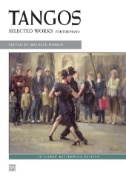 |
Tangos : Selected Works for the Piano The tangos in this collection are not traditional Argentinean dance pieces, but rather instrumental pieces written specifically for the piano. Included are delightful pieces by composers Isaac Albéniz, Ernesto Nazareth, Manuel Ponce, Joaquín Turina and others. The selections range in difficulty from intermediate to moderately difficult.Titles: • Tango, Op. 165, No. 2 (Albéniz)• Danza espagnola, Op. 232, No. 3 (Albéniz)• Cielo de encantos (Campos)• El velorio (Cervantes)• La tarde está amorosa (Cervantes)• Los tres golpes (Cervantes)• Tango (Hinson)• Solace (Joplin)• Duvidoso (Nazareth)• Espalhafatoso (Nazareth)• Famoso (Nazareth)• Fon-fon (Nazareth)• Garôto (Nazareth)• Matuto (Nazareth)• Odeon (Nazareth)• Ranzinza (Nazareth)• Remando (Nazareth)• Sagaz (Nazareth)• Malgré tout (Ponce)• Tango, Op. 8, No. 2 (Turina) |
|||||
|
|
||||||
|
Exploring Popular World Music is the first introductory level text written to introduce students to popular music styles from around the world. Focusing on styles that all students will know -- from Reggae to Klezmer, from Afro-Pop to Kodo drums--the book offers a comprehensive, listening-oriented introduction to the world's popular musical cultures. Each chapter will focus on a specific music style and its associated geographic locale. The salient musical and cultural features associated with each example are discussed in detail to increase our appreciation of the music. Relevant artists will be highlighted and suggestions for further reading and listening will be offered. By the end of the book, the student should be able to 1) recognize a variety of world music styles, 2) articulate musical and cultural knowledge associated with each style, and 3) identify important artists related to the genre. Supplementing the text will be a web site fcreated by the author) featuring the author's world music map, enabling students to explore pop music cultures as they relate to each other; as well as an iTunes playlist for all the highlighted selections in the book. This book should strongly appeal to Intro to World Music Courses for non-majors who wish to study popular rather than traditional musics of the world, which would encompass a large majority of students enrolled in these courses. |
||||||
|
|
||||||
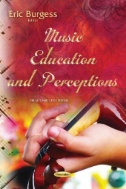 |
Music Education and Perceptions In this book, the authors' examine how musical development and learning are established in the family environment and the effects of music on children 's development. Other chapters examine musical and non - musical learning as a reflection of the internationalization of China 's sociopolitical ideologies and the relative nationalism of its education system; the planning of musical objectives in the psychomotor domain ; and a multicultural perspective of the “ Orff - Schulwerk ” music - movement approach, using it primarily as a possible means of expressing one's own sensations and recognizing the sensations of others In this book, the authors' examine how musical development and learning are established in the family environment and the effects of music on children 's development. Other chapters examine musical and non - musical learning as a reflection of the internationalization of China 's sociopolitical ideologies and the relative nationalism of its education system; the planning of musical objectives in the psychomotor domain ; and a multicultural perspective of the “ Orff - Schulwerk ” music - movement approach, using it primarily as a possible means of expressing one's own sensations and recognizing the sensations of others. C
APA (American Psychological Assoc.) Burgess, E. (2015). Music Education and Perceptions. Hauppauge, New York: Nova Science Publishers, Inc. MLA (Modern Language Assoc.) Burgess, Eric. Music Education and Perceptions. Nova Science Publishers, Inc, 2015. Fine Arts, Music and Literature. EBSCOhost. In this book, the authors' examine how musical development and learning are established in the family environment and the effects of music on children 's development. Other chapters examine musical and non - musical learning as a reflection of the internationalization of China 's sociopolitical ideologies and the relative nationalism of its education system; the planning of musical objectives in the psychomotor domain ; and a multicultural perspective of the “ Orff - Schulwerk ” music - movement approach, using it primarily as a possible means of expressing one's own sensations and recognizing the sensations of others. C
APA (American Psychological Assoc.) Burgess, E. (2015). Music Education and Perceptions. Hauppauge, New York: Nova Science Publishers, Inc. MLA (Modern Language Assoc.) Burgess, Eric. Music Education and Perceptions. Nova Science Publishers, Inc, 2015. Fine Arts, Music and Literature. EBSCOhost. In this book, the authors' examine how musical development and learning are established in the family environment and the effects of music on children 's development. Other chapters examine musical and non - musical learning as a reflection of the internationalization of China 's sociopolitical ideologies and the relative nationalism of its education system; the planning of musical objectives in the psychomotor domain ; and a multicultural perspective of the “ Orff - Schulwerk ” music - movement approach, using it primarily as a possible means of expressing one's own sensations and recognizing the sensations of others. C
APA (American Psychological Assoc.) Burgess, E. (2015). Music Education and Perceptions. Hauppauge, New York: Nova Science Publishers, Inc. MLA (Modern Language Assoc.) Burgess, Eric. Music Education and Perceptions. Nova Science Publishers, Inc, 2015. Fine Arts, Music and Literature. EBSCOhost. |
|||||
|
|
||||||
 |
Music Sociology : Examining the Role of Music in Social Life Music Sociology explores 16 different genres to demonstrate that music everywhere reflects social values, organisational processes, meanings and individual identity. Presenting original ethnographic research, the contributors use descriptions of subcultures to explain the concepts of music sociology, including the rituals that link people to music, the past and each other. Music Sociology introduces the sociology of music to those who may not be familiar with it and provides a basic historical perspective on popular music in America and beyond. |
|||||
|
|
||||||
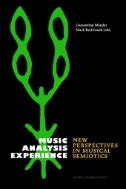 |
Music, Analysis, Experience : New Perspectives in Musical Semiotics Transdisciplinary and intermedial analysis of the experience of music Nowadays musical semiotics no longer ignores the fundamental challenges raised by cognitive sciences, ethology, or linguistics. Creation, action and experience play an increasing role in how we understand music, a sounding structure impinging upon our body, our mind, and the world we live in. Not discarding music as a closed system, an integral experience of music demands a transdisciplinary dialogue with other domains as well. Music, Analysis, Experience brings together contributions by semioticians, performers, and scholars from cognitive sciences, philosophy, and cultural studies, and deals with these fundamental questionings. Transdisciplinary and intermedial approaches to music meet musicologically oriented contributions to classical music, pop music, South American song, opera, narratology, and philosophy. |
|||||
|
|
||||||
|
Eminent historian Paul Johnson dazzles with a rich, succinct portrait of Mozart and his musicAs he's done in Napoleon, Churchill, Jesus, and Darwin, acclaimed historian and author Paul Johnson here offers a concise, illuminating biography of Mozart. Johnson's focus is on the music—Mozart's wondrous output of composition and his uncanny gift for instrumentation.Liszt once said that Mozart composed more bars than a trained copyist could write in a lifetime. Mozart's gift and skill with instruments was also remarkable as he mastered all of them except the harp. For example, no sooner had the clarinet been invented and introduced than Mozart began playing and composing for it.In addition to his many insights into Mozart's music, Johnson also challenges the many myths that have followed Mozart, including those about the composer's health, wealth, religion, and relationships. Always engaging, Johnson offers readers and music lovers a superb examination of Mozart and his glorious music, which is still performed every day in concert halls and opera houses around the world. |
||||||
|
|
||||||
|
|
An English Medieval and Renaissance Song Book : Part Songs and Sacred Music for One to Six Voices 'An elegant anthology. The specialist will not miss the quiet sophistication with which the music has been selected and prepared. Some of it is printed here for the first time, and much of it has been edited anew.'— NotesThis treasury of 47 vocal works — edited by Noah Greenberg, founder and former director of the New York Pro Musica Antiqua — will delight all lovers of medieval and Renaissance music. Containing a wealth of both religious and secular music from the 12th to the 17th centuries, the collection covers a broad range of moods, from the hearty'Blow Thy Horne Thou Jolly Hunter'by William Cornysh to the reflective and elegiac'Cease Mine Eyes'by Thomas Morley.Of the religious works, nine were written for church services, including'Sanctus'by Henry IV and'Angús Dei'from a beautiful four-part mass by Thomas Tallis. Other religious songs in the collection come from England's rich tradition of popular religious lyric poetry, and include William Byrd's'Susanna Farye,'the anonymously written'Deo Gracias Anglia'(The Agincort Carol), and Thomas Ravenscroft's'O Lord, Turne Now Away Thy Face'and'Remember O Thou Man.'Approximately half of the songs are secular, some from the popular tradition and others from the courtly poets and musicians surrounding such musically inclined monarchs as Henry VIII — who himself is represented in this collection with two charming songs,'With Owt Dyscorde'and'O My Hart.'Among the notable composers of Tudor and Elizabethan England represented here are Orlando Gibbons, John Dowland, and Thomas Weelkes. |
|||||
|
|
||||||
|
Music As Message : An Introduction to Musical Semantics Music is often defined as art for the ear, as the language of feeling, of the heart, as sound play, or as the science of composition. But music also conveys intellectual and emotional experiences, literary, religious, philosophical, social and political ideas. Countless composers encrypt contents in their music that can be deciphered by a variety of methods. This book is designed as an introduction to the basic questions of musical semantics and discusses Beethoven's committed art, the core ideas of the «Ring of the Nibelung» and of the «Symphony of a Thousand», Wagner's idea of a religion of art, the relation of music and poetry, the musico-literary conceptions of composers, the large field of program music and the history of the impact of Gustav Mahler. |
||||||
|
|
||||||
|
Lost in Music : Culture, Style and the Musical Event This collection of essays, first published in 1987, provides a sociological treatment of many musical forms – rock, jazz, classical – with special emphasis on the perspective of the practising musician. Among the topics covered are the legal structures governing musical production and the question of copyright; recording and production technology; the social character of musical style; and the impact of lyrical content, considered socially and historically. |
||||||
|
|
||||||
|
This book offers a topical approach for a music appreciation course. Through a series of subjects–from Music and Worship to Music and War and Music and Gender–the authors present active listening experiences for students to experience music's social and cultural impact. The book offers an introduction to the standard concert repertoire, but also gives equal treatment to world music, rock and popular music, and jazz, to give students a thorough introduction to today's rich musical world. Through lively narratives and innovative activities, the student is given the tools to form a personal appreciation and understanding of the power of music. The book is paired with MySearchLab, featuring listening guides with streaming audio, short texts on special topics, and sample recordings and notation to illustrate basic concepts in music. |
||||||
|
|
||||||
|
Many people find music theory a tough subject-- but it doesn't have to be! The best-selling Idiot's Guides: Music Theory, Third Edition, is a concise and clear guide that teaches any budding musician (and even more experienced ones) how to read musical notation by navigating the basics of reading and composing music. This book covers:- The basics of tones, including pitches, clefs, scales, intervals, and major and minor keys.- The building blocks of rhythm, including note values, basic notation, time signatures, and tempo, dynamics, and navigation.- How tunes are created, starting with melodies, chords, chord progressions, and phrases and forms.- The basics of accompaniment, including transcribing, accompanying melodies, and transposing to other keys.- Composing and arranging, including coverage of musical genres and forms, how to compose your own music, arranging for voices and instruments, working with lead sheets and scores, and performing your music.- Helpful reference appendixes, including a glossary, chord charts, and instrument ranges.- Exercises at the end of each chapter, and an answer key appendix.- All-new coverage of genres, composing, and arranging.- Expanded online ear-training and transcribing exercise content. |
||||||
|
|
||||||
|
After Sound : Toward a Critical Music After Sound considers contemporary art practices that reconceive music beyond the limitation of sound. This book is called After Sound because music and sound are, in Barrett's account, different entities. While musicology and sound art theory alike typically equate music with pure instrumental sound, or absolute music, Barrett posits music as an expanded field of artistic practice encompassing a range of different media and symbolic relationships. The works discussed in After Sound thus use performance, text scores, musical automata, video, social practice, and installation while they articulate a novel aesthetic space for a radically engaged musical practice. Coining the term 'critical music', this book examines a diverse collection of art projects which intervene into specific political and philosophical conflicts by exploring music's unique historical forms. Through a series of intimate studies of artworks surveyed from the visual and performing arts of the past ten years-Pussy Riot, Ultra-red, Hong-Kai Wang, Peter Ablinger, Pauline Boudry and Renate Lorenz, and others-After Sound offers a significant revision to the way we think about music. The book as a whole offers a way out of one of the most vexing deadlocks of contemporary cultural criticism: the choice between a sound art effectively divorced from the formal-historical coordinates of musical practice and the hermetic music that dominates new music circles today. |
||||||
|
|
||||||
|
Music and/as Process brings together ideas about music and the notion of process from different sub-fields within musicology and from related fields in the creative arts as a whole. These can be loosely categorised into three broad areas – composition, performance and analysis – but work in all three of these groups in the volume overlaps into the others, covers a broad range of other musicological sub-fields, and draws inspiration from, non-musicological fields. Music and/as Process comprises chapters written by a mix of scholars; some are leaders in their field and some are newer researchers, but all share an innovative and forward-thinking attitude to music research, often not well represented within ‘traditional' musicology. Much of the work represented here started as papers or discussions at one of the Royal Musical Association (RMA) Music and/as Process Study Group Annual Conferences. The first section of the book deals with the analysis of performance and the performance of analysis. The historical nature of music and the recognition of pieces as musical ‘works' in the traditional sense is questioned by the authors, and is a factor in the analyses which address processes in composing, performing, and listening, and the links between these, in three very different but interlinking ways. These three approaches posit new directions and territory for musical analysis. The second section builds on the first, framing performance and/as process from the individual perspectives of the authors and their experiences as practitioners. Music by Berio, de Falla, music by the authors and their collaborators, and music composed for the authors are explored through looking at processes of interpretation and risk; processes which further undermine the ontology of the musical ‘work' as traditionally understood, and bring the practitioner as active agent to the foreground of an examination of musical discourse. The third section encounters and questions the musical ‘work' at its inception, exploring composition and/as process through its encounters with performance, analysis, collaboration, improvisation, translation, experimentation and cross-disciplinarity. Through explorations of new music, the way in which practitioners relate to music frame a personal and reflective account of the creative process, finally looking beyond music to musicology. |
||||||
|
|
||||||
|
Discovering Classical Music: Tchaikovsky : His Life, The Person, His Music 'I recommend this book wholeheartedly to new music lovers'– Sir Charles Groves CBE Thanks to Nigel Kennedy and Pavarotti, millions of people have recently discovered that classical music is a highly enjoyable experience, perhaps contrary to their expectations. But the world of classical music can be highly intimidating and confusing. Ian Christians, for many years a passionate believer in broadening the interest in classical music, has developed a unique approach, designed to make it as easy as possible for both newcomers to classical music and those who have started down the path to explore with confidence. Discovering Classical Music concentrates on the greatest composers. The author takes you step-by-step into their most approachable music and, in some cases, boldly into some of the greatest works traditionally considered ‘too difficult' for newcomers. Rarely does a book offer such potential for continued enjoyment. This volume concentrates on the life, personality and music of Peter Ilych Tchaikovsky. |
||||||
|
|
||||||
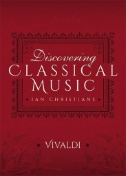 |
Discovering Classical Music: Vivaldi : His Life, The Person, His Music 'I recommend this book wholeheartedly to new music lovers'– Sir Charles Groves CBE Thanks to Nigel Kennedy and Pavarotti, millions of people have recently discovered that classical music is a highly enjoyable experience, perhaps contrary to their expectations. But the world of classical music can be highly intimidating and confusing. Ian Christians, for many years a passionate believer in broadening the interest in classical music, has developed a unique approach, designed to make it as easy as possible for both newcomers to classical music and those who have started down the path to explore with confidence. Discovering Classical Music concentrates on the greatest composers. The author takes you step-by-step into their most approachable music and, in some cases, boldly into some of the greatest works traditionally considered ‘too difficult 'for newcomers. Rarely does a book offer such potential for continued enjoyment. This volume concentrates on the life, personality and music of Antonio Lucio Vivaldi. |
|||||
|
|
||||||
|
Revisiting Music Theory : Basic Principles Revisiting Music Theory: Basic Principles, Second Edition, surveys the basics of music theory and explains the terms used in harmonic and formal analysis in a clear and concise manner. Students will find Revisiting Music Theory to be an essential resource for review or reference, while instructors of introductory theory courses will find in these pages a solid foundation for cultivating musical thinking. Musicians of all kinds—amateur and professional alike—will find great value in augmenting and informing their knowledge of the art of music theory. The text covers the basic principles of music theory, including:• Musical notation• Key signatures and scales• Intervals, chords, and progressions• Melodic and harmonic analysis• Counterpoint and voice leading techniques• Musical forms and structures This second edition has been revised and reorganized to promote learning. Each section now includes an all-new selection of exercises, allowing readers to practice key skills and improve understanding. For students, instructors, and practicing musicians, Revisiting Music Theory offers an indispensable guide to the foundations of musical analysis. |
||||||
|
|
||||||
|
Musica Mathematica : Traditions and Innovations in Contemporary Music The concept of «musica mathematica» seeks to accurately examine the intersection of two seemingly radically different subject areas. From the perspective of an European perception, the definition of the science of music was a result of the Pythagorean concept of universal harmony. The Pythagoreans were the first in European culture to raise the issue of uniting music and mathematics, sound and number. In the three parts of the monograph, versatile cases of the intersection of music and mathematics are displayed, moving from philosophical and aesthetic considerations about mathesis to practical studies, discussing the interaction between music and other kinds of art (architecture, painting, poetry and literature), and providing a practical research of contemporary music compositions. |
||||||
|
|
||||||
|
Popular Music: The Key Concepts Now in an updated fourth edition, this popular A-Z student handbook provides a comprehensive survey of key ideas and concepts in popular music culture. With new and expanded entries on genres and subgenres, the text comprehensively examines the social and cultural aspects of popular music, taking into account the digital music revolution and changes in the way that music is manufactured, marketed and delivered. New and updated entries include: Age and youth Black music Digital music culture K-Pop Mash-ups Philadelphia Soul Pub music Religion and spirituality Remix Southern Soul Streaming Vinyl? With further reading and listening included throughout, Popular Music: The Key Concepts is an essential reference text for all students studying the social and cultural dimensions of popular music. |
||||||
|
|
||||||
| TEATRO |
|
|||||
|
|
||||||
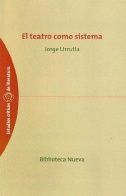 |
La primera parte del libro se dedica al teatro concebido como sistema. Ello facilita la consideración del texto literario, del drama, tanto en su ser independiente como en su relación con la puesta en escena, y de ésta en su evidente dependencia del primero. Drama y espectáculo son realizaciones con características propias que las hacen objeto de análisis necesariamente diferentes, se integran en series y sistemas distintos, pero también se enlazan dos a dos con condicionamientos latos aunque firmes. A la vez existe la posibilidad de contemplar el drama como un registro de conservación del espectáculo de carácter apriorístico, lo que obliga a reflexionar sobre el teatro como sistema comunicativo o en relación con otros medios de comunicación. Todo ello conduce a las características de los nuevos públicos, formados en el mundo de la imagen en secuencia, y sobre el modo de hacerlos a la visión del espectáculo teatral. No se trata ya únicamente de formar actores o técnicos, sino de formar a los propios espectadores. |
|||||
|
|
||||||
 |
Este Auto sacramental es una pieza crucial para entender el nihilismo Barroco, la sensación de que el mundo es una fantasmagoría que marcó el declive del imperio español. Esta obra destaca por su percepción del mundo como algo alucinante y su extraña religiosidad. |
|||||
|
|
||||||
|
En este libro Juan Valera presenta obras de teatro, diálogos, dramas y zarzuela. |
||||||
|
|
||||||
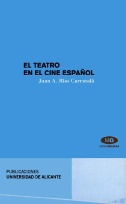 |
Este libro se adentra en dos aspectos concretos que son: la historia del cine y el teatro españoles. Este último ha estado presente en las películas de múltiples formas (adaptaciones, actores, técnicas, géneros…), pero también como tema central o secundario de algunas de ellas. La segunda parte de la presente obra, es el resultado de la experiencia docente y recopila los comentarios sobre algunas de las adaptaciones cinematográficas utilizadas en nuestras clases. |
|||||
|
|
||||||
|
Mitos e identidades en el teatro español contemporáneo En este volumen varios especialistas en la materia, procedentes del campo de la filología hispánica ofrecen un panorama sobre la manera en la que destacados autores dramáticos han recreado en lengua española algunos de estos mitos. |
||||||
|
|
||||||
|
Lo que Usigli vio como su vocación era ofrecer un teatro nacional, en el cual el público tendría la oportunidad de devorar imágenes de sí mismo en el escenario. El primer capítulo de este libro investiga las características generales de su misión. La mayor parte de los capítulos restantes se concentra en obras individuales en las que se muestran varias facetas de su imagen de México. El capítulo final adopta un enfoque menos detallado para arrojar algo de luz sobre las dimensiones más universales de su producción. El punto de partida fue el disfrute de las obras de Usigli y la curiosidad acerca del México que describen. |
||||||
|
|
||||||
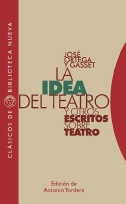 |
La idea del teatro y otros escritos sobre teatro Ortega y Gasset fue un apasionado del teatro, al que dedicó numerosas páginas. De esa actividad, discontinua, pero constante desde 1904 a 19135, destaca Idea del teatro, famosa conferencia pronunciada en 1946. Los escritos de Ortega sobre las artes escénicas se editan aquí, por primera vez con criterio temático, y su lectura confirma que configuran un programa sobre el teatro, que hubiera sido muy útil para la teoría teatral de la España del siglo XX, y para la creación escénica. Son hoy aún fecundos y actuales planteamientos. |
|||||
|
|
||||||
|
El teatro de Emilio Carballido : la teatralización de la realidad como enfoque ético La sorprendente variedad estilística y la personal adaptación de géneros de Emilio Carballido se interpretan como articulación y reflejo de una preocupación ética que denuncia la mutilación de la autenticidad del individuo al que se imponen discursos o miradas ajenas. El análisis muestra cómo los elementos dramáticos establecen una nueva perspectiva sobre la vida de los personajes y sus espectadores. Así, el estilo convencional de las piezas costumbristas se ve contradicho por un metatexto poético que revela la profundidad de las vivencias cotidianas. Por otra parte, los recursos épicos y espectaculares aparecen cuando Carballido trata de expresar la mutilación de grupos sociales o de la nación entera. Finalmente, el entorno ritual de sus obras más antirrealistas permite al espectador adentrarse en cuestiones existenciales acerca de la naturaleza humana. |
||||||
|
|
||||||
|
This book investigates the theme of imposters in three Hispanic American plays and two Caribbean plays from the early twentieth century. The author has selected each play from a different country so that the scholarship presents a broader perspective of Hispanic American and Caribbean themes. In these five plays, the main characters fabricate their own identities for various reasons. My focus is on analyzing those imposters and on presenting how the dramatists present these types of imposters in their works. Identity is one of the most prominent themes in Hispanic American and Caribbean literature because the history of these regions involves a long period of European colonization. As a result of this colonization the cultures of these regions imitated European culture for centuries. For this reason the act of constructing a distinct American identity has been a struggle for these writers. The five plays analyze this struggle by depicting main characters that pretend to be someone else and abandon their own identity. I have analyzed the imposters and incorporated findings from various studies that make a connection between the play and Hispanic American and Caribbean history. |
||||||
|
|
||||||
|
Esta antología comprende algunas de las principales obras de Teatro de cámara de Agustín Moreto. |
||||||
|
|
||||||
|
Teatro breve de la Edad Media y del Siglo de Oro Se trata de una antología de breves piezas teatrales españolas de la Edad Media y del Siglo de Oro, que incluye un profuso aparato de notas, la ortografía modernizada, una introducción, un glosario de nombres, actividades diversas, un comentario de texto y un cuaderno-guía del profesorado con una bibliografía más amplia y especializada, textos complementarios y un solucionario. |
||||||
|
|
||||||
|
A unique and original viewpoint of how the dream of success is still a vital part of the American mentality and how this is clearly reflected in its drama. The American struggle against repression and exploitation, the rebellion and civil rights victories against all odds are hallmarks of American life and drama. |
||||||
|
|
||||||
|
Teatro de palabras : didascalias en la escena española del siglo XVI
|
||||||
|
|
||||||
|
Risas y sonrisas en el teatro de los siglos XVIII y XIX
|
||||||
|
|
||||||
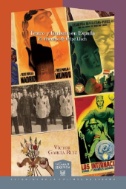 |
Teatro y fascismo en España : el itinerario de Felipe Lluch Estudio completo de Felipe Lluch, pionero de la dirección escénica en España, que supone también un análisis sociocultural del tránsito de la España republicana a la fascista y del papel de los intelectuales en el proceso. |
|||||
|
|
||||||
|
Teatro vasco: historia, reseñas y entrevistas, antología bilingüe, catálogo e ilustraciones El autor nos muestra una historia del teatro vasco, las reseñas más relevantes encontradas en la prensa desde finales del s. XIX, una selección de textos de teatro; un catálogo bastante completo de las obras creadas en euskara, una lista de piezas teatrales traducidas, así como una bibliografía y unas ilustraciones básicas para dar una idea de las imágenes y los textos que se han producido a través de la historia literaria dramática y del espectáculo en el País Vasco. |
||||||
|
|
||||||
|
Cien años de teatro argentino : desde 1910 a nuestros días Este libro brinda un conjunto de observaciones y herramientas para leer la fecunda historia del teatro argentino entre aproximadamente 1910 y 2010. Parte de la idea de que no hay un teatro argentino sino teatro(s) argentino(s), según el fenómeno que se focalice geográficamente. Por la naturaleza de su acontecer, el teatro no se deja desterritorializar a través de la mediación tecnológica y exige la presencia de los cuerpos de quienes lo hacen: actores, técnicos, espectadores. Jorge Dubatti organiza siete períodos en los que el lector puede observar la coexistencia de diversas formas de producir y concebir el teatro (comercial, profesional de arte, oficial, independiente, filodramática, de variedades, etc.), es decir, el 'espesor' inabarcable de la historia teatral, así como los procesos que asumen ciertas tendencias, constantes y cambios teatrales que se van reformulando y que trascienden los límites de las unidades de periodización. Otro aspecto que se aborda es el del desarrollo de un campo teatral que se mide por un conjunto concertado de factores: el teatro propio que gesta y estrena, el teatro argentino y extranjero que recibe, el comportamiento de su público, el funcionamiento de su crítica, el grado de institucionalización de la actividad (a través de asociaciones, gremios, organismos, leyes, etc.), el desarrollo de su pedagogía, la infraestructura de salas y equipamiento, y también, no menos centralmente, la investigación que produce. |
||||||
|
|
||||||
|
Teatro militante : radicalización artística y política en los años 70 Obra que intenta reconstruir tramos olvidados del campo cultural argentino. Con una perspectiva más ampliamente histórica que las obras tradicionales de historia del teatro, y con admirable soltura, Verzero se mueve entre relatos, documentos, bibliografía histórica y teórica, para delinear los trazos borroneados de un período de gran ebullición artística y militante. La autora inicia ese camino claramente movilizada por la pasión y curiosidad necesaria para reunir un conjunto de pequeños restos documentales y testimoniales con el fin de rearmar algunos itinerarios poco conocidos de la historia teatral argentina. |
||||||
|
|
||||||
 |
Teatro y estética comunitaria : miradas desde la filosofía y la política Este libro hace un recorrido histórico sobre el teatro comunitario y sus progresivos cambios desde 1983 a la actualidad. El libro se divide en tres partes (Teatro y supervivencia, Resistir desde el presente, recordar para el futuro y Estética, utopía y derechos humanos) que permiten visualizar el fenómeno del teatro comunitario desde el punto de vista histórico, político y filosófico. |
|||||
|
|
||||||
|
Espacios urbanos en el teatro español de los siglos XX y XXI El volumen editado por Cerstin Bauer-Funke sobre Espacios urbanos en el teatro español de los siglos XX y XXI abarca una vasta aproximación a la creación dramática en torno a los espacios urbanos y sus formas más diversas. Lo urbano debe entenderse como configuración de una red de espacios y seres que lo habitan, y como acicate de formas comunicativas definidas como urbanas, definición que en su conjunto corresponde a una categoría cultural y estética central que permite enfocar el drama y teatro españoles de los siglos XX y XXI de una manera radicalmente innovadora. El libro contiene 26 contribuciones de destacados especialistas del teatro español leídas durante el coloquio internacional Espacios urbanos en el teatro español de los siglos XX y XXI, celebrado en junio de 2014 en la Universidad de Münster. Como broche de oro, los dramaturgos Jesús Campos García, Carmen Resino, José Manuel Corredoira Viñuela y Diana de Paco Serrano han escrito para el presente libro cada uno de ellos una pieza teatral consagrada al tema del coloquio celebrado en Münster. |
||||||
|
|
||||||
 |
El telon de la memoria : la Guerra Civil y el franquismo en el teatro español actual Desde el comienzo del nuevo milenio, el boom de la memoria ha asaltado a la sociedad española. En la transición y en los primeros años de la democracia, la política del consenso y de la reconciliación –que trajo como consecuencia el famoso ‘pacto de silencio'– impidió en gran parte una discusión crítica en la opinión pública, tanto de la Guerra Civil como del franquismo. Sin embargo, la literatura y la cultura nunca tabuizaron el tema del pasado nacional reciente. El teatro también ha contribuido a este ‘pacto de memoria' de la cultura, aportando más de 70 obras sobre el pasado bélico y dictatorial que serán el objeto del presente estudio. En este trabajo se combinan cuestiones y enfoques procedentes de los estudios literarios, de la teoría de los géneros literarios y la de las memorias. La primera parte lleva a cabo una perfilación teórico-terminológica de lo que denominamos el teatro de la memoria. En la segunda parte no sólo se ofrece una presentación panorámica de su evolución a partir de 1975 sino también el análisis y la interpretación de ocho obras representativas. |
|||||
|
|
||||||
|
La Piedra de Rosetta del teatro comercial europeo : el Teatro Cervantes de Alcalá de Henares Narra los avatares de uno de los espacios clave de la historia del teatro comercial español, el Cervantes de Alcalá de Henares, cuyos primeros cimientos se remontan a las últimas décadas del siglo XVI y que, tras su restauración en la década de 1990, aún sigue en funcionamiento. |
||||||
|
|
||||||
|
Consists of fourteen scripts for classroom use based upon Hispanic culture and traditions of the American Southwest. |
||||||
|
|
||||||
 |
In Choreography Observed, Jack Anderson has selected writings that focus most directly on choreographers and choreography in order to illuminate the delights and problems of dance and to reveal the nature of this nonverbal but intensely expressive art form. His essays and reviews deal with individual choreographers from Bournonville, Petipa, and Fokine to Balanchine, Paul Taylor, Meredith Monk, and Pina Bausch; individual works are also discussed in detail, such as Nijinsky's Afternoon of a Faun,Antony Tudor's Pillar of Fire, Alvin Ailey's Flowers, and Kei Takei's Light. Other pieces focus on the Baroque dance revival, contemporary multimedia dance theatre, choreography for men, the complex relationship between ballet and modern dance, and how—and how not—to revive the classics... |
|||||
|
|
|
|||||
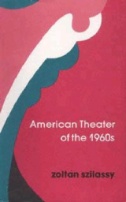 |
In this book you can find the history of United States theater, the experimental theater of the 20th century, the American drama, history and criticism. |
|||||
|
|
|
|||||
 |
The present volume attempts to provide an overview of some of the most promising recent work in this area. Its assumption is that so complex a phenomenon as theatre is best approached from a variety of directions, differing methodologies offering insights that will both complement and supplement each other. This is therefore a multinational and multidisciplinary endeavor, assembled by some of Europe's leading theatre scholars, and offering a general introduction to theatre study by combining recent insights from a variety of methodologies. It has a general orientation toward semiotic analysis, but complementary approaches__historical, sociological, and anthropological, for example__are utilized as well. The central concern is with analysis of the theatrical event as constructed on the stage and in the auditorium, with attention to the contributing elements of this event__the text, the actor, the space, the spectator, the social circumstances, and so on. |
|||||
|
|
|
|||||
 |
Modern Drama and the Rhetoric of Theater The history of drama is typically viewed as a series of inert'styles.'Tracing British and American stage drama from the 1880s onward, W. B. Worthen instead sees drama as the interplay of text, stage production, and audience. How are audiences manipulated? What makes drama meaningful? Worthen identifies three rhetorical strategies that distinguish an O'Neill play from a Yeats, or these two from a Brecht. Where realistic theater relies on the'natural'qualities of the stage scene, poetic theater uses the poet's word, the text, to control performance. Modern political theater, by contrast, openly places the audience at the center of its rhetorical designs, and the drama of the postwar period is shown to develop a range of post-Brechtian practices that make the audience the subject of the play.Worthen's book deserves the attention of any literary critic or serious theatergoer interested in the relationship between modern drama and the spectator. |
|||||
|
|
|
|||||
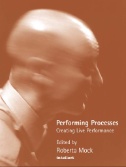 |
Live performance continues to be created every time it is performed. This book explores the dynamic relationship between creative process, presentation and spectator response to provide students and scholars in Drama with new insights on performance from poetry to pantomime. These essays make parallels between areas of performance that are rarely, if ever, compared. They present the basis for an overall theory of how 'conception', 'development', 'presentation'and'reception' are fused together to make up the overall' performance'. This study investigates the relationship between the process of creating performance and spectator response, and how this exchange is embedded into the product itself. The authors draw on theoretical approaches from a range of sources, and examine the work of contemporary dramatists, choreographers, poets and performers. Its construction of a new, wide-ranging approach to performance research makes this book a valuable resource for the student as well as the broader academic community. It has application both as a textbook and for supplementary research on drama courses nationwide. |
|||||
|
|
||||||
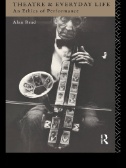 |
Alan Read asserts that there is no split between the practice and theory of theatre, but a divide between the written and the unwritten. In this revealing book, he sets out to retrieve the theatre of spontaneity and tactics, which grows out of the experience of everyday life. It is a theatre which defines itself in terms of people and places rather than the idealised empty space of avant garde performance. Read examines the relationship between an ethics of performance, a politics of place and a poetics of the urban environment. His book is a persuasive demand for a critical theory of theatre which is as mentally supple as theatre is physically versatile. |
|||||
|
|
|
|||||
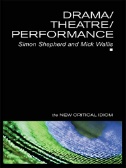 |
What is implied when we refer to the study of performing arts as'drama','theatre'or'performance'? Each term identifies a different tradition of thought and offers different possibilities to the student or practitioner. This book examines the history and use of the terms and investigates the different philosophies, politics, languages and institutions with which they are associated. Simon Shepherd and Mick Wallis: analyze attitudes to drama, theatre and performance at different historical junctures trace a range of political interventions into the field(s) explore and contextualise the institutionalisation of drama and theatre as university subjects, then the emergence of'performance'as practice, theory and academic disciplines guide readers through major approaches to drama, theatre and performance, from theatre history, through theories of ritual or play, to the idea of performance as paradigm for a postmodern age discuss crucial terms such as action, alienation, catharsis, character, empathy, interculturalism, mimesis, presence or representation in a substantial'keywords'section. Continually linking their analysis to wider cultural concerns, the authors here offer the most wide-ranging and authoritative guide available to a vibrant, fast-moving field and vigorous debates about its nature, purpose and place in the academy. |
|||||
|
|
||||||
 |
This book includes the postmodern condition of drama, the aspects of transformation in postmodern drama, the mediatized culture and the postmodern self, the transformation and postmodern feminism and the “Rep & Rev” postmodernism. |
|||||
|
|
||||||
 |
Teatro Chicana : A Collective Memoir and Selected Plays This volume is in fact two documents: It comprises a collective retrospective memoir, embracing the historias/lives of seventeen women who created a performance collective as they formed their own lives and organized to struggle for a new society. It is also a collection of performances (actos/plays) from that era of civil rights. The two parts of the book shed light on one another. Each individual woman’s voice is preserved, and they all weave into one another to create a Movimiento women’s tapestry. The collective was in constant change, and so was its name. |
|||||
|
|
||||||
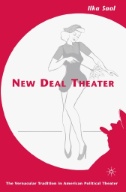 |
New Deal Theater : The Vernacular Tradition in American Political Theater New Deal Theater recovers a much ignored model of political theater for cultural criticism.While considered to be less radical in its aesthetics and politics than its celebrated Weimar and Soviet cousins, it nonetheless proved to be highly effective in asserting cultural critique. In this regard it offers a vital alternative to the dominant modernist paradigm developed in Europe. Rather than radicalizing content and form, New Deal theater insisted that the political had to be made commensurable with the language of a mass audience steeped in consumer culture.The resulting vernacular praxis emphasized empathy over alienation, verisimilitude over abstraction. By examining the cultural vectors that shaped this theater, Saal shows why it was more successful on the American stage than its European counterpart and develops a theory of vernacular political theater which can help us think of the political in art in other than modernist terms. |
|||||
|
|
||||||
 |
Making Theatre : From Text to Performance
The reality of a play is in its performance. Making Theatre focuses on the processes by which performance is realized, analyzing three major areas:'Words'and the interpretation of text;'Vision'including scenery, costume and lighting; and'Music'which illustrates the importance of music in all stage action.The forms of theater covered include straight drama, the musical and opera. Taking productions well-known on both sides of the Atlantic, Peter Mudford examines plays by Shakespeare, Chekhov, Pirandello, Beckett, Pinter, Tennessee Williams, Arthur Miller and David Mamet; musicals by Rodgers and Hammerstein, Cole Porter and Stephen Sondheim; and operas by Verdi, Wagner and Berg.This account of what makes theater important and how it works will be invaluable to teachers and students of drama and performance, as well as all those interested in theater as art. |
|||||
|
|
||||||
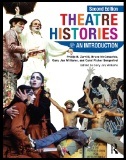 |
Theatre Histories : An Introduction This new edition of the innovative and widely acclaimed Theatre Histories: An Introduction offers overviews of theatre and drama in many world cultures and periods together with case studies demonstrating the methods and interpretive approaches used by today's theatre historians. Completely revised and renewed in color, enhancements and new material include: a full-color text design with added timelines to each opening section a wealth of new color illustrations to help convey the vitality of performances described new case studies on African, Asian, and Western subjects a new chapter on modernism, and updated and expanded chapters and part introductions fuller definitions of terms and concepts throughout in a new glossary a re-designed support website offering links to new audio-visual resources, expanded bibliographies, approaches to teaching theatre and performance history, discussion questions relating to case studies and an online glossary. |
|||||
|
|
||||||
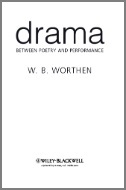 |
Drama : Between Poetry and Performance An engaging book spanning the fields of drama, literary criticism, genre, and performance studies, Drama: Between Poetry and Performance teaches students how to read drama by exploring the threshold between text and performance. Draws on examples from major playwrights including Shakespeare, Ibsen, Beckett, and Parks Explores the critical terms and controversies that animate the performance and study of drama, such as the status of language, the function of character and plot, and uses of writing Engages in a theoretical, disciplinary, and cultural repositioning of drama, by exploring and contesting its position at the threshold between text and performance. |
|||||
|
|
||||||
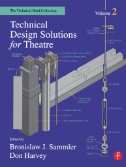 |
Technical Design Solutions for Theatre : The Technical Brief Collection Volume 2 The Technical Brief is a collection of single-focus articles on technical production solutions, published three times a year by the prestigious Yale School of Drama. The primary objective of the publication is to share creative solutions to technical problems so that fellow theatre technicians can avoid having to reinvent the wheel with each new challenge. The range of topics includes scenery, props, painting, electrics, sound and costumes. The articles each describe an approach, device, or technique that has been tested on stage or in a shop by students and professionals. Some articles included are: Building Authentic Elizabethan Ruffs; Simple and Inexpensive Stained Glass; A Quick-Load Floor Pulley Design; A Simple Approach to Stretching Drops; Flexi-Pitch Escape Stairs; Spot-Welding Scrim with Sobo; Handrail Armatures for a Grand Staircase; The Triscuit-Studwall Deck System; A Frameless Turntable; Stand on Stage: Minimum Weight, Maximum Effect; A Self-Paging Cable Tray; Roller Chain Turntable Drives; A Bench-Built XLR Cable Tester |
|||||
|
|
||||||
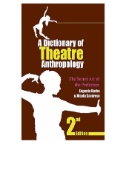 |
A Dictionary of Theatre Anthropology : The Secret Art of the Performer It’s a study of transcultural acting techniques and performance theory that includes essays with extensive illustration through photographs, diagrams and paintings. This book is essential for every drama and theatre studies student |
|||||
|
|
||||||
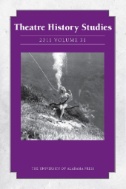 |
Theatre History Studies 2011, Vol. 31 Theatre History Studies is a peer-reviewed journal of theatre history and scholarship published annually since 1981 by the Mid-American Theatre Conference (MATC), a regional body devoted to theatre scholarship and practice. The conference encompasses the states of Illinois, Iowa, Nebraska, Kansas, Missouri, Minnesota, North Dakota, South Dakota, Wisconsin, Indiana, Michigan, and Ohio. The purpose of the conference is to unite persons and organizations within the region with an interest in theatre and to promote the growth and development of all forms of theatre. THS is a member of the Council of Editors of Learned Journals and is included in the MLA Directory of Periodicals. THS is indexed in Humanities Index, Humanities Abstracts, Book Review Index, MLA International Bibliography, International Bibliography of Theatre, Arts & Humanities Citation Index, IBZ International Bibliography of Periodical Literature, and IBR International Bibliography of Book Reviews. Full texts of essays appear in the databases of both Humanities Abstracts Full Text as well as SIRS From published reviews “This established annual is a major contribution to the scholarly analysis and historical documentation of international drama. Refereed, immaculately printed and illustrated.... The subject coverage ranges from the London season of 1883 to the influence of David Belasco on Eugene O'Neill.”—CHOICE “International in scope but with an emphasis on American, British, and Continental theater, this fine academic journal includes seven to nine scholarly articles dealing with everything from Filipino theater during the Japanese occupation to numerous articles on Shakespearean production to American children's theater.... an excellent addition for academic, university, and large public libraries.”—Magazines for Libraries, 6th Edition. |
|||||
|
|
||||||
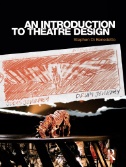 |
An Introduction to Theatre Design This introduction to theatre design explains the theories, strategies, and tools of practical design work for the undergraduate student. Through its numerous illustrated case studies and analysis of key terms, students will build an understanding of the design process and be able to: identify the fundamentals of theatre design and scenography recognize the role of individual design areas such as scenery, costume, lighting and sound develop both conceptual and analytical thinking Communicate their own understanding of complex design work trace the traditions of stage design, from Sebastiano Serlio to Julie Taymor. Demonstrating the dynamics of good design through the work of influential designers, Stephen Di Benedetto also looks in depth at script analysis, stylistic considerations and the importance of collaboration to the designer's craft. This is an essential guide for students and teachers of theatre design. Readers will form not only a strong ability to explain and understand the process of design, but also the basic skills required to conceive and realise designs of their own. |
|||||
|
|
||||||
|
Applied Theatre : Bewilderment and Beyond Applied Theatre: Bewilderment and Beyond explores the practice of theatre in communities and social institutions with marginalised groups. It shifts between contexts and countries to examine different ways that theatre has been applied to a wide range of social issues. Theatre projects in Brazil, Burkina Faso, Sri Lanka and the United Kingdom are analysed to argue for a complex and questioning view of the practice. Initiatives in prisons, developing countries, war situations and participatory research projects become the sites to interrogate the claims that applied theatre can be a theatre for social change. Many practitioners and researchers have witnessed powerful applied theatre projects but nonetheless struggled to articulate the reasons for the projects'success. This book uses the questions inspired by that perplexity to create a case for applied theatre as a major area of contemporary theatre practice. |
||||||
|
|
||||||
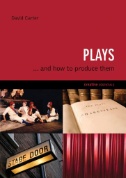 |
Plays : And How to Produce Them Plays...And How to Produce Them provides a basic introduction for all individuals and groups wishing to undertake the production of a play. It is aimed at the amateur enthusiast and anyone intending to pursue their interest further and undertake professional training. The author, who has over 30 years of experience in drama, takes the reader through the production of a play step by step, from setting up a drama group to the first night and entire run. The book can be read straight through or consulted as a handy reference work. |
|||||
|
|
||||||
|
This book proposes a new way to consider theatre and performance that claims a special relationship to reality, truth and authenticity. It documents innovations in devising and staging theatre and performance that takes reality as its subject, cultural shifts that have generated theatre of the real, some of its problems and some possibilities. |
||||||
|
|
||||||
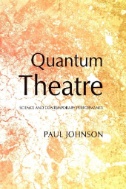 |
Quantum Theatre : Science and Contemporary Performance Quantum Theatre uses the science of quantum mechanics to construct a rigorous framework for examining performance practice and the theatrical event, and live performance as a means of exploring the implications of quantum mechanics. Key ideas from physics are used to develop an interdisciplinary approach to writing about the work of a number of British theatre practitioners in terms of identity, observation and play. What this type of analysis does is enable an examination of aspects of performance that can remain hidden and so cast new light on the performance event.This is the first study of its kind that develops such a framework for analysis of contemporary performance, and provides a coherent alternative to postmodernism as a theoretical framework for writing about performance. As such, this book develops a methodology that can be applied to a wide range of performance practices. Furthermore, it presents an analysis of the work of a number of contemporary performance makers, including Vincent Dance Theatre and Triangle Theatre. |
|||||
|
|
||||||
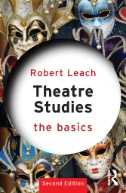 |
Is a fully updated guide to the wonderful world of theatre. The practical and theoretical dimensions of theatre – from acting to audience – are woven together throughout to provide an integrated introduction to the study of drama, theatre and performance. Topics covered include: dramatic genres, from tragedy to political documentary theories of performance the history of the theatre in the West acting, directing and scenography With a glossary, chapter summaries and suggestions for further reading throughout, Theatre Studies: the Basics remains the ideal starting point for anyone new to the subject. |
|||||
|
|
||||||
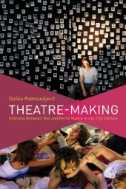 |
Theatre-Making : Interplay Between Text and Performance in the 21st Century Theatre-Making explores modes of authorship in contemporary theatre seeking to transcend the heritage of binaries from the Twentieth century such as text-based vs. devised theatre, East vs. West, theatre vs. performance - with reference to genealogies though which these categories have been constructed in the English-speaking world. |
|||||
|
|
||||||
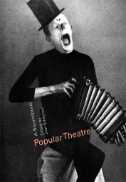 |
Popular Theatre : A Sourcebook Bertolt Brecht turned to cabaret; Ariane Mnouchkine went to the circus; Joan Littlewood wanted to open a palace of fun. These were a few of the directors who turned to popular theatre forms in the last century, and this sourcebook accounts for their attraction.Popular theatre forms introduced in this sourcebook include cabaret, circus, puppetry, vaudeville, Indian jatra, political satire, and physical comedy. These entertainments are highly visual, itinerant, and readily understood by audiences. Popular Theatre: A Sourcebook follows them around the world, from the bunraku puppetry of Japan to the masked topeng theatre of Bali to South African political satire, the San Francisco Mime Troupe's comic melodramas, and a'Fun Palace'proposed for London.The book features essays from the archives of The Drama Review and other research. Contributions by Roland Barthes, Hovey Burgess, Marvin Carlson, John Emigh, Dario Fo, Ron Jenkins, Joan Littlewood, Brooks McNamara, Richard Schechner, and others, offer some of the most important, informative, and lively writing available on popular theatre. Introducing both Western and non-Western popular theatre practices, the sourcebook provides access to theatrical forms which have delighted audiences and attracted stage artists around the world. |
|||||
|
|
||||||
|
Shakespeare Monologues for Men Full of fresh speeches from Shakespeare's plays, this is the ideal guide for actors of all ages and experience. As an actor at any level you are likely to be called upon to perform a speech from Shakespeare. A great deal will depend on your coming up with something fresh that is suited both to your particular performing skills and to the purposes of the audition. This is where this volume of The Good Audition Guides comes in.Drawing on his extensive experience as a theatre director and in drama training, Luke Dixon has chosen fifty monologues for male actors from across the whole of Shakespeare's canon. Featured here are some of the very best-loved works (such as A Midsummer Night's Dream, Henry V and Hamlet) alongside many less well-known (and often more intriguing) speeches from plays like Love's Labour's Lost, King John and Titus Andronicus. Each monologue is prefaced with a neat summary of the vital information you need to place the piece in context and to perform it to maximum effect and in your own unique way. The volume also features a user-friendly introduction on the whole process of selecting your speech, tackling Shakespeare's language and approaching the audition itself.‘Sound practical advice for anyone attending an audition'Teaching Drama Magazine on The Good Audition Guides. |
||||||
|
|
||||||
|
Theatre and Adaptation : Return, Rewrite, Repeat Contemporary theatrical productions as diverse in form as experimental performance, new writing, West End drama, musicals and live art demonstrate a recurring fascination with adapting existing works by other artists, writers, filmmakers and stage practitioners. Featuring seventeen interviews with internationally-renowned theatre and performance artists, Theatre and Adaptation provides an exceptionally rich study of the variety of work developed in recent years. First-hand accounts illuminate a diverse range of approaches to stage adaptation, ranging from playwriting to directing, Javanese puppetry to British children's theatre, and feminist performance to Japanese Noh. The transition of an existing source to the stage is not a smooth one: this collection examines the practices and the complex set of negotiations each work of transition and appropriation involves. Including interviews with Socìetas Raffaello Sanzio, Handspring Puppet Company, Katie Mitchell, Rimini Protokoll, Elevator Repair Service, Simon Stephens, Ong Keng Sen and Toneelgroep Amsterdam, the volume reveals performance's enduring desire to return, rewrite and repeat. |
||||||
|
|
||||||
|
The Languages of Theatre : Problems in the Translation and Transposition of Drama This book focuses on the various problems in the verbal and nonverbal translation and tranposition of drama from one language and cultural background into another and from the text on to the stage. It covers a range of previously unpublished essays specifically written on translation problems unique to drama, by playwrights and literary translators as well as theorists, scholars and teachers of drama and translation studies. |
||||||
|
|
||||||
|
At once both guide book and provocation, this is an indispensable companion for students and practitioners of applied theatre. It addresses all key aspects: principles, origins, politics and aesthetics in a concise and accessible style designed to appeal both to those who have recently discovered this sub-discipline and to experienced practitioners and academics.Part 1 is divided into two chapters. The first introduces the sub-discipline of Theatre for Development, covering its origins, principles and history, and providing an overview of theatre for development in Western contexts as well as in Africa, Asia, the Indian Subcontinent and Latin America. The second focuses upon theoretical and philosophical issues confronting the discipline and its relationship to contemporary politics, as well as considering its future role.Part 2 consists of seven chapters contributed by leading figures and current practitioners from around the world and covering a diverse range of themes, methodologies and aesthetic approaches. One chapter offers a series of case studies concerned with sexual health education and HIV prevention, drawn from practitioners working in Vietnam, Papua New Guinea, Southern Africa, and China. Other chapters include studies of intercultural theatre in the Peruvian Amazon; a programme of applied theatre conducted in schools in Canterbury, New Zealand, following the 2010 earthquake; an attempt to reinvigorate a community theatre group in South Brazil; and an exchange between a Guatemalan arts collective and a Dutch youth theatre company, besides others. |
||||||
|
|
||||||
|
|
Jérôme Bel's Disabled Theater, a dance piece featuring eleven actors with cognitive disabilities from Zurich's Theater Hora, has polarized audiences worldwide. Some have celebrated the performance as an outstanding exploration of presence and representation; others have criticized it as a contemporary freak show. This impassioned reception provokes important questions about the role of people with cognitive disabilities within theater and dance—and within society writ large. Using Disabled Theater as the basis for a broad, interdisciplinary discussion of performance and disability, this volume explores the intersections of politics and aesthetics, inclusion and exclusion, and identity and empowerment. Can the stage serve as a place of emancipation for people with disabilities? To what extent are performers with disabilities able to challenge and subvert the rules of society? What would a performance look like without an ideology of ability? The book includes contributions by Jérôme Bel, Kai van Eikels, Kati Kroß, André Lepecki, Lars Nowak, Yvonne Rainer, Gerald Siegmund, Yvonne Schmidt, Sandra Umathum, Scott Wallin, Benjamin Wihstutz, and the actors of Theater Hora. |
|||||
|
|
||||||
|
Theatre As Human Action : An Introduction to Theatre Arts Most introductory theatre textbooks are written for theatre majors and assume the student already has a considerable amount of knowledge on the subject. However, such textbooks may be counterproductive, because they reference several works that may be unfamiliar to students with limited exposure to theatre. Theatre as Human Action: An Introduction to Theatre Arts, Second Edition is designed for the college student who may be unacquainted with many plays and has seen a limited number of theatre productions. Focusing primarily on four plays, this textbook aims to inform the student about theatre arts, stimulate interest in the art form, lead to critical thinking about theatre, and prepare the student to be a more informed and critical theatregoer.In addition to looking at both the theoretical and practical aspects of theatre arts—from the nature of theatre and drama to how it reflects society—the author also explains the processes that playwrights, actors, designers, directors, producers, and critics go through. The four plays central to this book are the tragedy Macbeth, the landmark African American drama A Raisin in the Sun, the contemporary rock musical Rent, and—new to this edition—the American comedy classic You Can't Take It with You. At the beginning of the text, each play is described with plot synopses (and suggested video versions), and then these four representative works are referred to throughout the book.This second edition also features revised chapters throughout, including expanded and updated material on the technical aspects of theatre, the role of the audience and critic,and the diversity of theatre today. Structured into nine chapters, each looking at a major area or artist—and concluding with the audience and the students themselves—the unique approach of Theatre as Human Action thoroughly addresses all of the major topics to be found in an introduction to theatre text. |
||||||
|
|
||||||
|
Theatre, Performance and Cognition : Languages, Bodies and Ecologies Theatre, Performance and Cognition introduces readers to the key debates, areas of research, and applications of the cognitive sciences to the humanities, and to theatre and performance in particular. It features the most exciting work being done at the intersection of theatre and cognitive science, containing both selected scientific studies that have been influential in the field, each introduced and contextualised by the editors, together with related scholarship from the field of theatre and performance that demonstrates some of the applications of the cognitive sciences to actor training, the rehearsal room and the realm of performance more generally. The three sections consider the principal areas of research and application in this interdisciplinary field, starting with a focus on language and meaning-making in which Shakespeare's work and Tom Stoppard's Arcadia are considered. In the second part which focuses on the body, chapters consider applications for actor and dance training, while the third part focuses on dynamic ecologies, of which the body is a part. |
||||||
|
|
||||||
|
Theatre Histories : An Introduction This thoroughly revised and updated third edition of the innovative and widely acclaimed Theatre Histories: An Introduction offers a critical overview of global theatre and drama, spanning a broad wealth of world cultures and periods. Bringing together a group of scholars from a diverse range of backgrounds to add fresh perspectives on the history of global theatre, the book illustrates historiographical theories with case studies demonstrating various methods and interpretive approaches. Subtly restructured sections place the chapters within new thematic contexts to offer a clear overview of each period, while a revised chapter structure offers accessibility for students and instructors. Further new features and key updates to this third edition include: A dedicated chapter on historiography New, up to date, case studies Enhanced and reworked historical, cultural and political timelines, helping students to place each chapter within the historical context of the section Pronunciation guidance, both in the text and as an online audio guide, to aid the reader in accessing and internalizing unfamiliar terminology A new and updated companion website with further insights, activities and resources to enable students to further their knowledge and understanding of the theatre. |
||||||
|
|
||||||
|
In Defence of Theatre : Aesthetic Practices and Social Interventions Why theatre now? Reflecting on the mix of challenges and opportunities that face theatre in communities that are necessarily becoming global in scope and technologically driven, In Defence of Theatre offers a range of passionate reflections on this important question.Kathleen Gallagher and Barry Freeman bring together nineteen playwrights, actors, directors, scholars, and educators who discuss the role that theatre can – and must – play in professional, community, and educational venues. Stepping back from their daily work, they offer scholarly research, artists'reflections, interviews, and creative texts that argue for theatre as a response to the political and cultural challenges emerging in the twenty-first century. Contributors address theatre's contribution to local and global politics of place, its power as an antidote to various modern social ailments, and its pursuit of equality. Of equal concern are the systematic and practical challenges that confront those involved in realizing theatre's full potential. |
||||||
|
|
||||||
|
At the time of his death, Stanislavsky considered Nikolai Demidov to be ‘his only student, who understands the System'. Demidov's incredibly forward-thinking processes not only continued his teacher's pioneering work, but also solved the problems of an actor's creativity that Stanislavsky never conquered. This book brings together Demidov's five volumes on actor training. Supplementary materials, including transcriptions of Demidov's classes, and notes and correspondence from the author make this the definitive collection on one of Russian theatre's most important figures. |
||||||
|
|
||||||
 |
International Theatre Olympics : The Artistic and Intercultural Power of Olympism This pivot examines how the Theatre Olympics, born in 1995, have served to enrich each host country's culture, community, and foreign relations. Looking at the host country's political, social, and cultural circumstances, it considers how the festival expands the notion of Olympism beyond its application to the Olympic Games, expressing the spirit of Olympism and interculturalism in each country's distinct cultural language. It also emphasizes the festival's development over the twenty years of its existence and how each festival's staging has reflected the national identity, theatre tradition, and cultural interest of the hosting country at that time, as well as how each festival director's artistic principle has attempted to accomplish cultural exchange through their productions. |
|||||
|
|
||||||
 |
Shakespeare in the Theatre: The American Shakespeare Center The original Blackfriars closed its doors in the 1640s, ending over half-a-century of performances by men and boys. In 2001, in the Shenandoah Valley of Virginia, it opened once again. The reconstructed Blackfriars, home to the American Shakespeare Center, represents an old playhouse for the new millennium and therefore symbolically registers the permanent revolution in the performance of Shakespeare. Time and again, the industry refreshes its practices by rediscovering its own history. This book assesses how one American company has capitalised on history and in so doing has forged one of its own to become a major influence in contemporary Shakespearean theatre. |
|||||
|
|
||||||
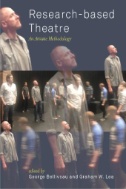 |
Research-based Theatre: An Artistic Methodology Research-based Theatre aims to present research in a way that is compelling and captivating, connecting with viewers on imaginative and intellectual levels at the same time. The editors bring together scholars and practitioners of research-based theatre to construct a theoretical analysis of the field and offer critical reflections on how the methodology can now be applied. It shares twelve examples of contemporary research-based theatre scripts and commentaries from an international group of artists and researchers, selected with an eye toward representing different approaches that come from a variety of Disciplinary areas. |
|||||
|
|
||||||
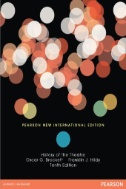 |
History of the Theatre: Pearson New International Edition Known as the 'bible' of theatre history, Brockett and Hildy's History of the Theatre is the most comprehensive and widely used survey of theatre history in the market. This 40th Anniversary Edition retains all of the traditional features that have made History of the Theatre the most successful text of its kind including worldwide coverage, more than 530 photos and illustrations, useful maps, and the expertise of Oscar G. Brockett and Franklin J. Hildy, two of the most widely respected theatre historians in the field. This tenth edition provides the most thorough and accurate assessment of theatre history available and includes contemporary milestones in theatre history. |
|||||
|
|
||||||
|
Successful theatre relies on a complex interaction of all theatrical elements: script, direction, acting, and design interact in shifting configurations to offer a new work of art at every performance. Examining these relationships often enriches the theatrical experience. Theatre: Its Art and Craft is an introductory theatre text that focuses on the practitioners and their processes. Using an accessible tone and a focused exploration of how theatre artists work, the book covers every aspect of this art form: from writing, directing, and acting to the designing of sets and costumes, as well as the use of props, lights, sound, and new technology. This book also examines the varying roles of scholars, critics, and dramaturgs. This seventh edition has been thoroughly revised and features new statistics, new photos, and updated references. New sidebars have been added throughout, including one on cultural appropriation, another on lighting technology, and more and better discussions of what carpenters, technical directors, stage managers, and theatre artists do. Accessible to students who have little or no theatrical background, this book helps readers understand how theatre happens by explaining who makes it happen and what they do. Reflecting a commitment to explore how all theatre practitioners work, Theatre: Its Art and Craft is a useful text for beginning theatre majors, minors, and non-majors alike. |
||||||
|
|
||||||
 |
Essential Dramaturgy : The Mindset and Skillset Essential Dramaturgy: The Mindset and Skillset provides a concrete way to approach the work of a dramaturg. It explores ways to refine the process of defining, evaluating, and communicating that is essential to effective dramaturgical work. It then looks at how this outlook enhances the practical skills of production and new play dramaturgy. The book explains what a dramaturg does, what the role can be, and how best to refine and teach the skillset and mindset. |
|||||
|
|
||||||
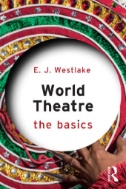 |
World Theatre: The Basics presents a well-rounded introduction to non-Western theatre, exploring the history and current practice of theatrical traditions in Asia, Africa, the Middle East, Oceania, the Caribbean, and the non-English-speaking cultures of the Americas. Featuring a selection of case studies and examples from each region, it helps the reader to understand the key issues surrounding world theatre scholarship and global, postcolonial, and transnational performance practices. An essential read for anyone seeking to learn more about world theatre. World Theatre: The Basics provides a clear, accessible roadmap for approaching non-Western theatre. |
|||||
|
|
||||||
| LITERATURA | Para acceder de forma remota a los siguientes libros, ingrese con: Login: Password: |
|||||
Transculturación y poscolonialismo en el Caribe : versiones y subversiones de Alejo CarpentierPor medio de un enfoque plural, comparativo y dialógico, este ensayo se adentra en la interconexión entre poscolonialismo y transculturación literaria en la narrativa de Alejo Carpentier. |
||||||
|
|
||||||
Crimen y ficción : narrativa literaria y audiovisual sobre la violencia en América LatinaLas propuestas de análisis convocadas en el presente volumen reflexionan sobre los modos en que la ficción ha representado, problematizado y, en ocasiones, reproducido la violencia en Latinoamérica. Gracias a perspectivas y sustentos metodológicos variados, los autores abordan géneros narrativos que engloban desde las formas clásicas en que la ficción ha lidiado con el crimen, como el relato de enigma o la novela dura, hasta zonas más próximas a nuestra realidad contemporánea, como la violencia política, el terror de Estado o la criminalización de los sujetos en la prensa o en la televisión. Con ello, Crimen y ficción. Narrativa literaria y audiovisual sobre la violencia en América Latina busca contribuir a una discusión actual y coyuntural desde una perspectiva que, sin restarle importancia al texto literario, amplíe el debate hacia otros soportes comunicativos -la televisión, el cine, la nota roja-, los cuales, en buena medida, han reforzado el imaginario colectivo sobre el crimen y sus múltiples manifestaciones en la región. A fin de otorgar cohesión temática al volumen, se han formulado cinco rubros que, en su conjunto, diseccionan las particularidades de la ficción del crimen de los siglos xx y xxi en América Latina |
||||||
|
|
||||||
Historia cultural y literaria de la América HispánicaLas dos obras principales que en este volumen editamos (Corrientes literarias… e Historia de la cultura en la América hispánica) responden a un esfuerzo “romántico” por dar a conocer de modo complejo y compacto el universo literario de la historia hispanoamericana hasta mediar el siglo XX. Y lo hacen desde el diálogo entre la literatura y el resto de las creaciones artísticas de modo continuo. No sólo vertebra su “historia” el autor estableciendo continuas líneas de fuga, donde la literatura y las demás artes constituyen las señas de identidad de una época; al mismo tiempo observamos la necesidad de volcar las producciones artísticas como notas distintivas de dicha época, al punto de que la cultura detenta la historia y, casi podríamos asegurar, “es” la historia misma. Para expresar en puridad el alma artística de Hispanoamérica, no tiene más remedio el escritor que trazar coordenadas de análisis mediante las cuales el texto literario se vincula, relaciona y expande en círculos concéntricos junto a las otras expresiones del espíritu y del arte. "El hombre universal con que soñamos, al que aspira nuestra América, no será descastado: sabrá gustar de todo, apreciar todos los matices, pero será de su tierra; su tierra, y no la ajena, le dará el gusto intenso de los sabores nativos, y ésa será su mejor preparación para gustar de todo lo que tenga sabor genuino, carácter propio." |
||||||
|
|
||||||
Mujeres ensayistas del Caribe hispano : hilvanando el silencio : antologíaLas escritoras del Caribe hispano crean su propia voz para reflexionar a manera de conversación con sus lectoras sobre la condición de la mujer, convirtiéndose ellas mismas en metonimias a traves de las cuales entender la naturaleza de sus sociedades. Los ensayos aquí seleccionados nos dan apenas un atisbo de la riqueza literaria que ha salido de la pluma de muchas escritoras del Caribe hispano desde la primera mitad del siglo XIX hasta nuestros días. |
||||||
|
|
||||||
 |
La mirada de BorgesBiografía del autor basada en una interpretación libre y personal de unos documentos únicos: los manuscritos en los que Borges escribió muchos de sus relatos, poemas o textos críticos, y que le fueron legados personalmente por Borges al padre de la autora tras los buenos oficios de éste. |
|||||
|
|
||||||
 |
Los límites del texto: autoría y autoridad en Borges¿Cómo leeríamos el Quijote si supiéramos ahora que su autor real fue un escritor francés de principios del siglo xx? La interrogante, planteada por Jorge Luis Borges en su famoso cuento “Pierre Menard, autor del Quijote”, aparece como una constante en la obra del argentino. Propagador de la idea de una literatura sin autores o sin la circunstancia biográfica, Borges creía, sin embargo, que el nombre del autor es constitutivo de la manera en que leemos su obra. De ahí, por ejemplo, que la cuestión de la “verdadera” identidad de Shakespeare siga discutiéndose entre los críticos, como si la aclaración fuera imprescindible para entender su obra o el misterio que constituye la aparente contradicción entre la grandeza de esta y la escasez de datos biográficos. Este libro examina la cuestión de la autoría en varios cuentos de Borges y se detiene en temas como la relación entre el (re)nombre de autor y el mercado de lectura, el problema de la expresión de uno mismo, la biografía y las auto-representaciones tanto en la ficción como en la imagen pública. “Este libro hace un aporte fundamental a los estudios de la autoría en Borges, mostrando con inteligencia y originalidad cómo Borges crea a ‘Borges’ y cómo sus creaciones son personajes en busca de su autor. Alfredo Alonso Estenoz demuestra la importancia de Borges para los authorship studies, a la vez proponiendo nuevas lecturas de textos centrales como ‘El inmortal’, ‘Examen de la obra de Herbert Quain’, ‘El Sur’ y Evaristo Carriego. A la vez, muestra la ‘abierta contradicción’ entre las sucesivas representaciones que Borges hace de sí mismo. Elegante y audaz, este libro será esencial para futuros estudiosos de Borges”. |
|||||
|
|
||||||
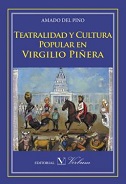 |
Teatralidad y cultura popular en Virgilio PiñeraEn esta indagación Amado del Pino ahonda -con un lenguaje que se mueve entre el rigor del ensayo y el desenfado de la crónica- en dos universos esenciales para Virgilio Piñera. Está aquí el compromiso del autor de Aire frío con el resultado escénico de sus textos; se aprecia además la sabiduría teatral de Piñera que transmite a algunos de sus cuentos y poemas. |
|||||
|
|
||||||
Clásicos latinoamericanos. Para una relectura del canon. El siglo XIX. Vol. ISimón Bolívar, Andrés Bello, Joaquim Maria Machado de Assis, Rubén Darío y José Martí son las cinco figuras que Grínor Rojo elige tratar en este volumen, dedicado a la escritura clásica producida en América Latina durante el siglo XIX. Teniendo como centro de gravedad en cada uno de estos casos una pieza canónica, la Carta de Jamaica, el Discurso de instalación de la Universidad de Chile, O alienista, Azul? y Nuestra América, el capítulo respectivo interroga desde ella la obra completa del autor en cuestión. Pero no para repetir las lecturas tradicionales que existen a su respecto, sino para ponerlas a prueba volviendo una vez más sobre la riqueza inexhaustible de la escritura. Si América Latina posee ya escritores que merecen el estatuto de "clásicos", y Grínor Rojo así lo cree, ello es porque los discursos de esos escritores contienen un potencial sémico que debiera ser activable de maneras distintas en épocas distintas. El autor de este libro ha escrito con esa certidumbre, poseído por un sentimiento de apego a un pasado cultural al que respeta y reconoce como suyo, pero sin que ese respeto y ese reconocimiento lo obliguen a la adopción de una perspectiva pasatista cuando se ocupa de él. Leer no para confirmar lo consabido, entonces, sino para desarticular y desafiliar, para resignificar y reclamar. |
||||||
|
|
||||||
 |
Clásicos latinoamericanos. Para una relectura del canon. El siglo XX. Vol. IIJosé Enrique Rodó, Mário y Oswald de Andrade, Jorge Luis Borges, Pablo Neruda, Gabriel García Márquez y Julieta Kirkwood son los autores de que trata este segundo volumen de los Clásicos latinoamericanos de Grínor Rojo, el dedicado al siglo XX. Como en el volumen que se ocupó del XIX, cada capítulo tiene aquí como centro de gravedad una pieza canónica: Ariel, las revistas brasileñas de vanguardia Klaxon y la Revista de Antropofagia, El Sur, Alturas de Macchu Picchu, Cien años de soledad y Ser política en Chile. Los nudos de la sabiduría feminista. Y de nuevo, el propósito del autor ha sido leer otra vez, pero leer de otra manera, a sabiendas de la necesidad imperiosa en que nos encontramos hoy los latinoamericanos de recobrar la actualidad de nuestros clásicos, de convencernos de que ellos existen y que tienen cosas grandes que contarnos, no solo respecto del tiempo en que produjeron su trabajo, sino también respecto de nuestro anémico presente. A despecho de los impetuosos de siempre, los que por las razones que sean no hallan la hora de globalizarnos, haciéndonos partícipes y sobre todo pacientes de una cultura que es tan extensa como de magro calado, así como también a despecho de los que no ven otro modo de responder a ese desafío que arrinconándose en los ghettos de la diferencia, Grínor Rojo piensa que el ejercicio de releer a los clásicos latinoamericanos puede convertirse en una actividad reenergizadora y liberadora. La reflexión grotescamente tosca según la cual sus obras son documentos institucionales, que instalan, defienden y promueven las perspectivas e intereses del poder, carece para él de sentido. |
|||||
|
|
||||||
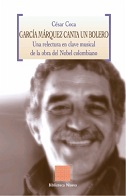 |
García Márquez canta un bolero : Una relectura en clave musical de la obra del Nobel colombianoHay muchas lecturas posibles de la obra periodística y literaria de Gabriel García Márquez. Una de ellas es a través de las referencias musicales, porque cuantas canciones, partituras, ritmos, autores e intérpretes aparecen en sus páginas están íntimamente vinculados a su propia vida. Incluso a veces sus novelas y sus reportajes se comunican entre sí a través de la música, de manera que un título concreto o un compositor aparecen aquí y allá, en lo que puede entenderse como la búsqueda de la complicidad del lector, un guiño que nos hace pensar en sus experiencias de melómano empedernido. Este libro desvela esas claves y pone a la luz la vinculación, también en este aspecto, de sus relatos con su propia vida. |
|||||
|
|
||||||
Gabriela y MéxicoEn un nuevo y notable trabajo de recopilación, Pedro Pablo Zegers recoge en esta antología los textos publicados en México o referidos a dicho país, publicados por Gabriela Mistral entre 1920 y 1950. Esta obra incluye la producción poética y en prosa que estaba desperdigada en revistas y diarios de ese país. La recopilación se complementa con un documentado prólogo y numerosas fotografías y grabados que dan cuenta del período considerado. De esta manera, este libro constituye una ampliación y superación del clásico Croquis mexicano. |
||||||
|
|
||||||
Leer a García MárquezHace más de cincuenta años, Conrado Zuluaga empezó a leer la obra de Carda Márquez. Y como a veces recita fragmentos de memoria, muchos pueden llegar a pensar que no ha hecho nada más. De esas lecturas ha surgido medio centenar de artículos, de los cuales esta edición recoge quince ‒los más ilustrativos, los que más luz arrojan‒,sobre la obra del Nobel colombiano. |
||||||
|
|
||||||
|
Transculturación narrativa : la clave Wayuu en Gabriel García Marquez Este estudio es una aplicación de la teoría de la transculturación narrativa de Angel Rama a la obra literaria de Gabriel García Márquez. Desde una perspectiva etnohistórica y comparativista se demuestra que el escritor tuvo una infancia heteroglósica, al lado de miembros de la civilización amerindia wayúu de la que se deriva el arte combinatorio de su narrativa. |
||||||
|
|
||||||
 |
(In)subordinadas. Raza, clase y filiación en la narrativa de mujeres latinoamericanasA partir de una selección de relatos de Rosario Castellanos, Andrea Maturana y Rosario Ferré, entre otras, exploran desde la crítica literaria, formas de insubordinación dentro de la subcultura femenina y ponen de manifiesto relaciones menos amables que existen entre mujeres, aquellas en las que las diferencias se realizan de manera subrepticia, disimulada o encubierta. Son expresiones que negocian, reproducen o cuestionan elementos de la hegemonía patriarcal. |
|||||
|
|
||||||
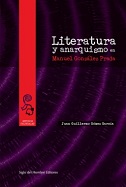 |
Literatura y anarquismo en Manuel Gonzalez PradaAl ensayista peruano Manuel González Prada (1844-1918) se le considera uno de los pensadores más influyentes de la vida intelectual de su país, al lado de José Carlos Mariátegui. La inagotable fuente de su pensamiento radical es estudiada en esta obra en forma innovadora. Las preguntas por la característica nacional peruana, el legado de la España tradicional, contrarreformista y barroca, y, sobre todo, la impronta del movimiento anarquista de raíz hispánica en su obra, son planteadas con nuevos y renovadores conceptos literarios, históricos y sociológicos. |
|||||
|
|
||||||
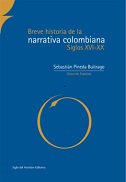 |
Breve historia de la narrativa colombiana Este libro, escrito sin jergas ni excesivos tecnicismos, satisface las exigencias del especialista y familiariza al público general con los principales autores, obras, polémicas y movimientos literarios de la narrativa colombiana desde la Conquista hasta el presente. Trasciende lo que pudiera haber de nacionalista en su objeto de estudio al apoyarse en las modernas metodologías teóricas de la historiografía narrativa latinoamericana y situar lo colombiano como parte de una tradición mucho más amplia. |
|||||
|
|
||||||
 |
"Dulce canoro cisne mexicano" : La poesía completa de Carlos de Sigüenza y Góngora'Primavera Indiana', 'Glorias de Querétaro', 'Triunfo parténico', 'Oriental planeta evangélico', entre otras obras: toda la poesía del sabio y escritor mexicano del siglo XVII, convenientemente anotada por el profesor Daniel Torres, experto de la Universidad de Ohio. |
|||||
|
|
||||||
El abismo lógico (Borges y los filósofos de las ideas)Este libro explora un fenómeno que se repite en algunos textos del escritor argentino Jorge Luis Borges (1899-1986). Está compuesto por nueve capítulos, que corresponden al análisis de la reescritura de nueve distintas propuestas filosóficas. Las propuestas están cobijadas bajo la misma doctrina: el idealismo. Es un libro que se escribe para validar la propuesta de un método de lectura que cuenta a la vez con una dosis de ingenio y con planteamientos rigurosos, permitiendo así un tipo de análisis que, siendo sistemático, es también lúdico, conservando de este modo las funciones fundamentales de la literatura. No pocas conjeturas han habido acerca de las intenciones de Borges o de sus creencias. |
||||||
|
|
||||||
Gabriel García Márquez, la modernidad de un clásicoGarcía Márquez es, por derecho propio, uno de los escritores clásicos de nuestra lengua, quizás el narrador más importante después de Cervantes, y como tal, su obra presenta múltiples capas interpretativas que parecen regenerarse con cada nuevo acercamiento crítico. Es por ello que aprovechando los fastos y alegrones caribes de sus primeros ochenta años, muchos especialistas (y no pocos diletantes) se han dado a la labor de cincelar de forma obsesiva las claves formales y temáticas de su universo inextinguible, poniendo en evidencia una vez más las inalcanzables cimas estéticas a las que ha llegado el Nobel colombiano, cuyas páginas son siempre una cascada de la mejor literatura escrita nunca en lengua española. A sabiendas de que no siempre es fácil decir cosas nuevas, el libro que presentamos fue pensado como un sentido homenaje al hijo del telegrafista de Aracataca, ahora que él también parece perderse por momentos en los meandros de la memoria, para habitar definitivamente, junto a Úrsula Iguarán, ese Macondo soñado por lectores de todas las lenguas, que no es sólo un lugar mítico, sino también un estado de ánimo que anida en la conciencia de sus seguidores. Gabriel García Márquez la modernidad de un clásico es un libro de reconocimiento sincero al gran escritor colombiano, donde tienen cabida lecturas muy originales sobre su obra, lejos de las interpretaciones más encorsetadas que se han derivado de un mal entendido macondismo. |
||||||
|
|
||||||
Escritoras y compromiso: literatura española e hispanoamericana de los siglos XX y XXIEste volumen recoge los textos de creación y las conferencias de las escritoras y los críticos invitados, además de una amplia selección de los ensayos presentados durante el II Congreso Internacional organizado en mayo de 2008, en la Universidad Autónoma de Madrid y en Saint Louis University, Madrid Campus. |
||||||
|
|
||||||
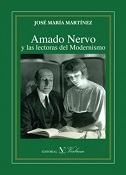 |
Amado Nervo y las lectoras del modernismoEl total del volumen es una revisión de mi introducción a la edición crítica de dos poemarios de Nervo (En voz baja y La amada inmóvil) y de una serie de artículos autónomos pero no inconexos publicados en revistas académicas acerca de Darío, Nervo, Nájera o sus lectoras históricas. |
|||||
|
|
||||||
Entre la experiencia y la narración : ficciones latinoamericanas de fin de siglo (1970-2000)Este libro no es una historia exhaustiva de la literatura latinoamericana ni un detallado catálogo de obras "valiosas" del periodo estudiado. No es, siquiera, el amable trabajo de dos académicos diletantes: una selección de sus obras favoritas entre el fárrago del fin de siglo latinoamericano. Presentamos aquí, en cambio, un panorama de la ficción producida en América Latina durante el último tercio del siglo XX. Se trata, pues, de una doble restricción, en la medida en que, por una parte, nuestro trabajo refiere a un género (el "panorama") y, por otra, a un periodo específico (ese interregno que va desde la consagración y, tal vez, agotamiento del boom, a través del fenómeno del posboom, hasta la consagración mundial, en el comienzo del nuevo siglo, de escritores como Roberto Bolaño o Fernando Vallejo). |
||||||
|
|
||||||
Estrella cercana. Roberto BolañoLa recepción de la obra de Bolaño ha alcanzado magnitudes asombrosas. Saltó a la fama con Los detectives salvajes y adquirió estatuto de escritor de culto con 2666, obra en la que trabajó con excepcional dedicación los últimos años de su vida, quizá sin lograr coronarla como hubiese deseado. Ha sido comparado con Pynchon y DeLillo, mas ya antes habían sido varios los críticos que consideraron que la relevancia y el alcance de Los detectives salvajes eran equiparables a los que en su día tuvieron Rayuela y Paradiso. Si en Los detectives salvajes el autor perfila en filigrana un viaje errático y laberíntico, en 2666 pergeña un conjunto narrativo cuajado y vasto, integrado por cinco partes, concebidas y parcialmente esbozadas en sus años mozos. Su novela póstuma es un espacioso fresco, un mural que narra cinco historias enlazadas por dos asuntos capitales: los feminicidios en serie de Santa Teresa, heterónimo y trasunto, encarnación y simulacro de Ciudad Juárez, y los múltiples espacios y veneros en los que se genera y de los que mana la escritura. Ambas novelas tematizan la esperanza de la búsqueda y la eventualidad de la desorientación y de la errancia por mundos varios, en los que México es epicentro de una dilatada geografía. |
||||||
|
|
||||||
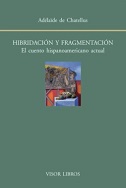 |
Hibridación y fragmentación : El cuento hispanoamericano actualCon el fin de echar alguna luz sobre el relato breve hispanoamericano de última generación, este ensayo se dedica a los cuentos de los últimos quince años que también corresponden —entre otras cosas— a la aparición de las nuevas tecnologías y a la consecuente aceleración de la globalización. Son textos escritos por autores “hispanoamericanos” que, aún viviendo en España o en otros países, se relacionan —de una manera u otra— con el mundo de sus orígenes. Veremos en efecto que las obras definen de otra forma la noción de identidad. Para mostrarlo, el corpus incluye una variedad de nacionalidades: parte de la base nacional vigente en la literatura hasta finales del siglo XX, para demostrar que este tipo de definición de identidad o de género se borra y que la re-elaboración de fronteras también desafía los intentos de definición e incluso de denominación. La elección de los autores se basa en la voluntad de ilustrar tendencias que aparecen en los relatos breves de última generación, y no en el propósito —imposible— de dar una visión exhaustiva de la literatura hispanoamericana de última generación. |
|||||
|
|
||||||
América Latina : palabra, literatura y culturaLa consideración de América Latina como constituyendo una región de significaciones históricas y culturales comunes, así como la articulación de lo heterogéneo en una estructura global que ha ido integrando históricamente áreas, ha sido desde el comienzo de este trabajo una hipótesis común. En virtud de esta hipótesis hemos hecho presente aquí la expresión de la literatura brasileña a través de la colaboración de sus investigadores, junto a la de Hispanoamérica y la del Caribe, en una perspectiva histórica de la construcción del discurso literario y cultural del continente. |
||||||
|
|
||||||
Entre mujeres : Colaboraciones, influencias e intertextualidades en la literatura y el arte latinoamericanosEl objetivo central de este libro es explorar instancias de colaboración, influencias e intertextualidades en la producción de escritoras y artistas latinoamericanas de los siglos xix y xx, con el fin de entender el modo como estos procesos han contribuido a la formación de los discursos literarios y artísticos femeninos feministas hispanoamericanos. |
||||||
|
|
||||||
La ficción suprema : Gonzalo Rojas y el viaje a los comienzosEste estudio crítico de Marcelo Pellegrini sobre Gonzalo Rojas es un trabajo que no solo hará que el lector redescubra la poesía de este gran autor chileno, sino que también contribuirá a reexaminar el punto exacto en que la biografía y el discurso literario entran en contacto y se fusionan, creando una tercera dimensión que Enrique Lihn, otro grande de la poesía chilena, llamó “biopoética”. Este espacio de síntesis es particularmente importante porque nos entrega tanto la “verdadera biografía” de un artista como el mapa creativo de su obra. La detallada lectura de Pellegrini, así como su bien diseñada aproximación de/re/constructiva, le ha permitido hacer un sustantivo aporte a la abundante crítica rojiana, esclareciendo las complejidades de los juegos referenciales poéticos, lingüísticos y filosóficos del poeta de Oscuro. Los diálogos ficticios y afectivos de Rojas con poetas y filósofos –particular mención merece el análisis de su relación con Wittgenstein descrita en este libro- son un testimonio de la profunda indagación que su poesía realiza en los ámbitos del lenguaje y lo divino. Los argumentos de Pellegrini han sido posibles gracias a su compromiso con la obra de Rojas, señalando los momentos cruciales en que su arte verbal cambió y gracias a los cuales pudo (re)definir la proteica naturaleza de su persona poética. De esta manera, la sofisticada interpretación crítica que entrega este libro nos ayudará a entender cómo un poeta ficcionaliza su vida con tal de crear su legado para la posteridad. |
||||||
|
|
||||||
Entre la espada y la plumaEste texto realza, desde perspectivas muy variadas, las singularidades de esta crónica. La colección incluye el clásico ensayo de Mario Vargas Llosa sobre el luminar cuzqueño y los trabajos presentados por sobresalientes especialistas en el simposio internacional realizado en Nueva York. A esta ampliación se le ha añadido una introducción, una bibliografía general, trece ilustraciones, un índice onomástico y la conversación sobre la obra maestra del Inca Garcilaso entre Mario Vargas Llosa y Raquel Chang-Rodríguez. |
||||||
|
|
||||||
Gabriel García Márquez : el Caribe y los espejismos de la modernidadGabriel García Márquez es el más importante escritor colombiano de todos los tiempos; uno de los más grandes de la lengua española; un referente obligado de las letras nacionales; el padre a quien no hay escritor bisoño que no quiera decapitar; quien mejor entendió la sentencia clarividente de Julio Cortázar: “Vamos a ser escritores, y todo lo que no sea escribir es secundario, así tengamos que morirnos de hambre”. El escritor que se puso el overol y se encerró en México a forjar una de las más portentosas manifestaciones de la inteligencia del Caribe. Por ello, resulta tan válido este nuevo acercamiento, esta relectura a su novela Cien años de soledad a partir de las herramientas conceptuales de la crítica moderna. Esta obra rastrea la génesis, profundiza en el análisis y en la valoración de la propuesta estética e ideológica cifrada en la textura significativa de Cien años de soledad. |
||||||
|
|
||||||
Sueño y realidad de América Latina : Discurso de Mario Vargas Llosa al recibir el doctorado Honoris Causa por la Pontificia Universidad Católica del PerúEl 12 de diciembre de 2008 la Pontificia Universidad Católica del Perú otorgó el grado de Doctor Honoris Causa al escritor Mario Vargas Llosa. Este texto contiene el discurso de Mario Vargas Llosa y el discurso de orden del profesor Alonso Cueto. |
||||||
|
|
||||||
Red de autores : ensayos y ejercicios de literatura hispanoamericanaLa corriente del delta del Orinoco es la red por la que fluyen y se conectan siglos, naciones, novelistas, cuentistas, cantantes, pintores, poetas. El navegante José Balza es nuestro guía en un viaje a través de imágenes, paisajes y boleros. Este libro de ensayos consta de cuatro capítulos. En el primero, Gracián, El Lunarejo, Hernando Domínguez Camargo y fray Juan Antonio de Navarrete nos remontan al Siglo de Oro y la colonia. En el segundo, el navegante Balza nos presenta su país natal, Venezuela. En el tercero nos lleva por un recorrido a lo largo de la literatura hispanoamericana de la segunda mitad del siglo XX, y en el cuarto, al ritmo del bolero. |
||||||
|
|
||||||
México en la obra de Roberto Bolaño : memoria y territorioRoberto Bolaño llegó a México como adolescente, el tiempo que pasó en esta ciudad lo dedicó a robar y devorar libros. Hizo amistades que lo marcaron, como marcan las amistades en la juventud, y pasó el tiempo alimentando su imaginación con temas y personajes mexicanos. Años después su escritura encontró en esta imaginación nutrida de lo mexicano los escenarios y los personajes para su obra. |
||||||
|
|
||||||
|
De acuerdo con los autores de este libro, el análisis literario se replantea en américa latina a partir de la problemática de la diversidad cultural. Estamos ante una nueva generación de escritores que pugna por expresarse y que merece ser analizada e investigada ¿será que en la narrativa mexicana más reciente predomina también el desencanto y el nihilismo postmoderno? |
||||||
|
|
||||||
Rubén Darío en su laberintoEste volumen configura el imaginario dariano, desde los laberintos que crea la múltiple perspectiva y el posible acercamiento que, como hemos analizado, nos brinda su obra. Tras su lectura creemos que efectivamente, se ha desvelado la proyección de una figura como la de Rubén Darío cuya sombra de centauro se proyecta bajo la mirada telescópica de la crítica". |
||||||
|
|
||||||
Cartas de CarpentierEsta colección multidisciplinar de ensayos —sobre temas tan diversos como historia, filosofía, derechos humanos y conflictos armados, literatura, teatro, danza y artes plásticas— pretende contribuir a acercarnos a las múltiples y diversas culturas negroafricanas existentes, y combatir así los cada vez más altos muros erigidos por el racismo y los estereotipos con los que la mayoría de inmigrantes o solicitantes de asilo subsaharianos son recibidos en nuestro país. Este libro pretende igualmente servir de estímulo a otras investigadoras e investigadores para continuar ampliando el conocimiento de los múltiples aspectos de las culturas negroafricanas. Impartir alguna asignatura optativa, organizar congresos internacionales, realizar exposiciones de arte o conciertos de música africana una vez al año no son suficientes para que nuestra sociedad alcance un conocimiento suficiente sobre la gran diversidad de culturas que pueblan nuestro planeta. Con esta obra se quiere invitar a una seria reflexión sobre la carencia existente en nuestras aulas de asignaturas de historia, arte, sociología, filosofía, y otras disciplinas relativas al continente africano, y realizar un llamamiento para que se amplíe la oferta de las mismas en nuestros centros de estudio. La educación desde la escuela y la universidad debe ser la base principal desde donde poder adquirir el crecimiento y la madurez de una sociedad, cuyos valores humanos excluyan el racismo y la xenofobia en favor del aprendizaje y del encuentro con nuevas culturas. |
||||||
|
|
||||||
Voces y perspectivas en la poesía latinoamericana del siglo XXEl presente volumen constituye una visión nueva de la poesía latinoamericana del siglo XX. Con agudeza y sensibilidad de poeta, Consuelo Hernández nos provee con un estudio plural de excelente oportunidad y sintonía. Basándose en los textos poéticos, entronca su reflexión crítica con nuevas corrientes de investigación donde confluyen la poética, los estudios culturales, el feminismo, etc. Esta obra convoca numerosas voces que se caracterizan por su peculiiar manera de responder con la escritura al entorno histórico social y a las circnstancias propias de su ser en un continente siempre en proceso. Además, se sugieren resonancias, correspondencias y divergencias en esa arena de discursos ambiguos, polisémicos y desestabilizadores que se entrecruzan en el tiempo y en el espacio, en ese terreno de todos y de nadie que es la poesía. Se proponen varias líneas de reflexión: la forma, el contexto geográfico, regional o nacional, y finalmente el tema, donde la experiencia es dominante (la urbanización, la definición de identidad y de cultura nacional, las guerras, la violencia y la opresión, el exilio, el cuerpo, lo erótico-sexual, la poesía conciliatoria o diferenciadora de géneros, lo económico, lo político y el encuentro con otras culturas). La amplia gama de voces y poetas representados aquí incluye a solitarios y casi marginados, revolucionarios, neo-indigenistas y feministas. Pero igualmente encontramos poetas del canon que han tenido trascendencia en la definición de senderos seguidos por la poesía latinoamericana durante el siglo pasado: Luís Carlos López, Aurelio Arturo, Álvaro Mutis, Tulio Mora, Nicolás Guillén, Nancy Morejón, Pablo Neruda, Claribel Alegría, Consuelo Tomás, Julieta Dobles, Roque Dalton, Ana Istarú, y Octavio Paz, son algunos de los poetas incluídos. |
||||||
|
|
||||||
El filo del ideal: Octavio Paz en la Guerra CivilOctavio Paz en la Guerra Civil. Cuando tenía 23 años de edad, en 1937, Octavio Paz, acudió a España, invitado por Rafael Alberti y Pablo Neruda, con la misión de representar a la joven poesía mexicana ante el Segundo Congreso Internacional de Escritores Antifascistas. |
||||||
|
|
||||||
|
Actualidad y vigencia del barroco El Barroco ha experimentado una naturalización, no solo como arte y estilo, sino como una forma de vivir la unidad-diversidad del mundo. Este proceso de naturalización prolonga el Barroco y lo recrea más allá de la Contrarreforma. De nuevo, el Barroco histórico se anuncia, de manera profética y sorprendente, con los conflictos actuales del mundo. Para mostrar la permanencia del Barroco en la literatura hispanoamericana actual, nos parece necesario recorrer el Barroco literario español desde su contexto histórico, social y cultural y de ahí mostrar la evolución de este, su rechazo por casi tres siglos y su revaloración progresiva en el siglo XX. Para ello, hemos seleccionado tres autores: Alejo Carpentier, José Lezama Lima y Severo Sarduy como exponentes de la evolución de las influencias barrocas de la Contrarreforma y el absolutismo en las nuevas tendencias en la literatura hispanoamericana. De igual forma, nos ha parecido necesario ilustrar esos valores y temas expresados en sus estudios críticos con una obra clave de su trabajo de ficción. Estas visiones se hacen patentes en novelas como Concierto barroco de Carpentier, Paradiso de José Lezama Lima y Cobra de Severo Sarduy. Finalmente, en el último capítulo “Discursos barrocos latinoamericanos actuales” se muestra la tendencia contemporánea hacia una modernidad barroca relacionada con las nuevas teorías sobre la imagen y la visión. |
||||||
|
|
||||||
Silencio, trauma y esperanza : novelas chilenas de la dictadura, 1977-2010¿Se ha escrito, desde 1973 a la fecha, una novela que aborde las consecuencias personales de nuestro 11 de septiembre con un grado de omnisciencia como el que propugnaba la narrativa hispanoamericana del Boom, es decir, de manera total?. Numerosas voces de crítica y la academia nacional coincidieron en sostener, con freudiana melancolía, que el relato exhaustivo de la dictadura era una asignatura pendiente de la narrativa chilena. Este ensayo propone la lectura de algunas novelas que abordan ese período tomando en consideración las distintas intensidades con que se ha elaborado literariamente lo que sucedió. |
||||||
|
|
||||||
Rubén Darío Un hombre y la transformación de la poesía universalEste ensayo contiene a grandes rasgos, los sucesos y acontecimientos de la vida de Rubén Darío que directa o indirectamente influyeron en su personalidad. El producto de la destreza y agilidad de su pluma que alteraron todo el proceso literario de la época. Su lira en cada composición, refleja las huellas que dejaran sus emociones intensas a lo largo de su existencia. Extraña mezcla de misterio, amor, pasión, sufrimiento... inspiraron a “Azul”, “Prosas Profanas” y “Cantos de Vida y Esperanza”, obras estas que representan los éxitos del extraordinario poeta. ¡Hijo de América, y del Mundo! |
||||||
|
|
||||||
La imaginación crítica : prácticas en la Innovación de la narrativa contemporáneaJulio Ortega (Perú, 1942), es reconocido por la crítica internacional como uno de los innovadores de la lectura crítica en América Latina, se ha ocupado también de la difusión de las nuevas letras, a través de congresos, antologías, foros y colecciones. Profesor en la Universidad de Brown, lo ha sido en la de Texas, así como profesor visitante en las de Harvard, Yale, Puerto Rico, Cambridge, Central de Venezuela, Católica de Chile, Granada y Salamanca. Es Doctor honoris causa por las Universidades peruanas Nacional Del Santa y Los Ángeles, así como por la Universidad Americana de Nicaragua. En este texto se reúnen estudios de Rulfo, Fuentes, Sarduy, Lezama Lima, Borges, Pacheco, Cortázar, Arguedas, Eltit, Vargas Llosa, García Márquez, Arenas, Ferré, Bolaño, Boullosa, entre muchos otros. |
||||||
|
|
||||||
Bolaño infra: 1975-1977 : los años que inspiraron Los detectives salvajes¿cómo fue el proceso de conversión de Roberto Bolaño que lo llevó a ser un escritor? ¿qué fue lo que vivió junto a los infrarrealistas en ciudad de méxico? ¿hay una coherencia entre ese Bolaño veinteañero y el que escribe 2666, poco antes de morir? |
||||||
|
|
||||||
El "Paraíso Infernal" en la narrativa de Roberto BolañoEste libro analiza la narrativa de Roberto Bolaño dentro del contexto total de su producción literaria, permitiendo trazar los aspectos esenciales que nutren la escritura de Bolaño en esa conjunción estética e ideológica desde la cual surgen sus textos narrativos. |
||||||
|
|
||||||
La tradición teórico-crítica en América Latina: mapas y perspectivasA través de diferentes perspectivas, esta obra reúne una serie de ensayos que reflexionan sobre varios aspectos del pensamiento crítico en Latinoamérica durante los últimos 30 años, enfocándose en temas como la literatura, la violencia y sus representaciones, así como la crítica a través de la historia. Al mismo tiempo, funciona como herramienta para comprender diversos eventos teóricos desde los puntos de vista histórico, cultural y social. Partiendo de los elementos más representativos de la cultura latinoamericana, tales como el poscolonialismo, las guerras de independencia, autores y pensadores e incluso el idioma, La tradición teórico-crítica en América Latina: mapas y perspectivas brinda diferentes reflexiones y aproximaciones no sólo para aquellos lectores inmersos en la cultura latinoamericana, sino también para quienes se encuentran por primera vez ante esta cuestión. |
||||||
|
|
||||||
|
MULTI DISCIPLINARIAS |
|
|||||
 |
¿Como vemos? : una introducción a la visión de la forma y el color Este libro aborda el estudio de la visión humana y su inteligencia desde una perspectiva interdisciplinaria que opera en la zona de intersección de la semiótica, la filosofía, la psicología, la fisiología, la inteligencia artificial y las neurociencias en general. ¿Cómo vemos? Hace una descripción y una evaluación asistemática -y en estilo informal- de los enfoques actuales de la visión humana que incluye tanto la referencia al soporte biológico, al cómputo funcional, a las representaciones psicológicas, así como las imagenes semióticas. Al respecto, los autores ofrecen una clara y concisa introducción que nos exige conocimientos previos, por lo tanto, este volumen ha de resultar de gran utilidad para quienes desean iniciarse en el conocimiento de esta facultad humana, de manera escolarizada, o libre, en las áreas de diseño, las artes y la cultura visual en general. |
|||||
|
|
||||||
|
Introducción a la historia de las artes El objetivo de este libro es presentar un panorama organizativo de la historia de los principales estilos visuales y sonoros. Tratando de unir las prácticas artísticas con otros elementos de la cultura, se brindan elementos para la comprensión de las mismas en articulación con otras prácticas e ideas que integran su ambiente de producción y recepción. |
||||||
|
|
||||||
 |
Beyond Words : Movement Observation and Analysis Beyond Words presents a range of illuminating approaches to examining every day social interactions, to help the reader understand human movement in new ways. Carol-Lynne Moore and Kaoru Yamamoto build on the principles that they expertly explored in the first edition of the book, maintaining a focus on the processes of movement as opposed to discussions of static body language. The authors combine textual discussion with a new set of website-hosted video instructions to ensure that readers develop an in-depth understanding of nonverbal communication, as well as the work of its most influential analyst, Rudolf Laban. This fully-revised, extensively illustrated second edition includes a new introduction by the authors. It presents a fascinating insight into this vital field of study, and will be an invaluable resource for scholars and practitioners in many activities, from performing and martial arts, athletics, to therapeutic and spiritual practices, conflict resolution, business interactions, and intercultural relations. |
|||||
|
|
||||||
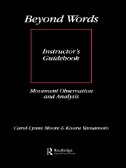 |
Beyond Words: Instructor's Manual This guidebook is designed to facilitate the use of'Beyond Words'materials. By drawing on their own teaching experiences, the authors offer suggestions for attaining teaching/learning goals, and for overcoming difficulties in using the movement observation and analysis programme. Many of the creative adaptations described come from individuals at different institutions who tested 'Beyond Words' while it was being developed. It is not intended, therefore, as a prescriptive document, but rather as a guide which provides many alternative ways of utilizing 'Beyond Words', and which leaves the rest to the instructor. The overall purpose of this book is to enhace the understanding of human body movement. It is widely recognized now that words represent only a small proportion of the total range of human communication. |
|||||
|
|
||||||
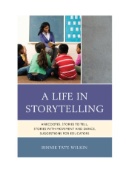 |
A Life in Storytelling contains the reflections and lessons from one of the most noted storytellers of our times. Fifty years of storytelling has provided Binnie Tate Wilkin with the experiences and insights to form the basis of a text for the storyteller, both for the professional librarian, teacher or parent wanting to provide children with substance through story. The sections of the book are designed to provide background material for the art and craft of storytelling, the methods and uses of storytelling, sources and examples of stories, and a broad selection of over 100 stories briefly annotated.Included are sections that explain how to derive or adapt stories from current events, history, or imaginative writings and a detailed treatment in the use of dance in storytelling, a technique that, if not invented by Wilkin, has become a trademark of her approach. The treatment is always informal and personal and is interleaved with anecdotes drawn from the author's more than 50 years of storytelling. |
|||||
|
|
||||||
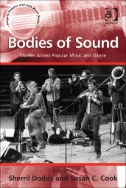 |
Bodies of Sound : Studies Across Popular Music and Dance From the ragtime one-step of the early twentieth century to the contemporary practices of youth club cultures, popular dance and music are inextricably linked. This collection reveals the intimate connections between the corporeal and the sonic in the creation, transmission and reception of popular dance and music, which is imagined here as'bodies of sound'. The volume provokes a wide-ranging, interdisciplinary conversation that includes scholarship from Asia, Europe and the United States, which explores topics from the nineteenth century through to the present day and engages with practices at local, national and transnational levels. In Part I: Constructing the Popular, the authors explore how categories of popular music and dance are constructed and de-stabilized, and their proclivity to appropriate and re-imagine cultural forms and meanings. In Part II: Authenticity, Revival and Reinvention, the authors examine how popular forms produce and manipulate identities and meanings through their attraction to and departure from cultural traditions. In Part III: (Re)Framing Value, the authors interrogate how values are inscribed, silenced, rearticulated and capitalized through popular music and dance. And in Part IV: Politics of the Popular, the authors read the popular as a site of political negotiation and transformation. |
|||||
|
|
||||||
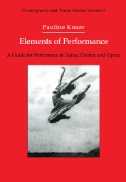 |
Elements of Performance : A Guide for Performers in Dance, Theatre and Opera It discusses her theories of the primary and secondary elements of the art of performing. The primary elements are Emotion, Motivation, Focus and Dynamics and the secondary are those of the craft: stage props, hand props, cloth of different length and weight, Chinese ribbons, costumes and stage deportment.
|
|||||
|
|
||||||
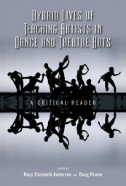 |
Hybrid Lives of Teaching Artists in Dance and Theatre Arts : A Critical Reader The role of the hybrid artist-educator in schools and communities over the past fifty years has evolved significantly. Although education reform and political pressures during the last five decades have frequently interrupted steady and sustained arts education programming in the United States—especially in theatre and dance—the teaching artist today performs an important role in numerous educational contexts. Over the past fifteen years, the work of teaching artists has received growing professional attention and research: the Association of Teaching Artists (ATA) was founded in 1998 to support, advocate for, strengthen and serve the teaching artist profession. This volume, focused on teaching artists in dance and theatre disciplines, expands this developing area of inquiry and reveals topographies for teaching in and through these arts disciplines that have, until this text, been examined separately. Directed toward the last decade's growth and professionalization, the book asks: where and how is teaching artistry in dance and theatre happening? What is guiding, supporting, or complicating the work of teaching artists in dance and theatre arts today? What training and preparation do teaching artists receive? How do teaching artists effectively address the cultural diversity of the communities they serve? What are the political and economic influences that impact the work and delivery of teaching artistry? What has been learned on a large scale about the hybrid lives and work of teaching artists in dance and theatre arts? In sum, what is the status of the teaching artist today? This book examines pedagogical, artistic, and professional issues for two performing arts disciplines by using the voices and experiences of each form's practitioners and those who prepare them. |
|||||
|
|
||||||
|
La danza de los íntimos deseos : siendo persona en plenitud Este libro invita a entrar dentro de si mismo, del consciente y del inconsciente, de los afectos y sentimientos y poder así evaluar y discernir las emociones del espíritu. |
||||||
|
|
||||||
|
|
OTROS SITIOS
|
|||||
 |
Digitalee es un servicio de préstamo de novedades editoriales en español ubicadas en una plataforma de acceso digital para su lectura en línea, que ofrece la Dirección General de Bibliotecas de la Secretaría de Cultura a todos los usuarios de la Red Nacional de Bibliotecas Públicas. Digitalee tiene a su disposición miles de títulos que se pueden leer desde cualquier dispositivo conectado a internet: computadora, tablet, teléfono inteligente o lector de libros electrónicos, que sean compatibles con el DRM de Adobe o cuenten con la aplicación de Adobe Digital Editions (descarga gratuitamente la aplicación aquí) También se puede acceder al servicio de préstamo de libros a través de la app Digitalee, disponible para IOS y Android. |
|||||
|
|
||||||
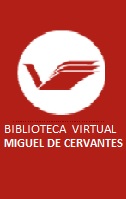 |
Biblioteca Virtual Miguel de Cervantes Es una biblioteca española que reúne obras hispánicas en internet. Su objetivo principal la difusión de la cultura hispánica. |
|||||
